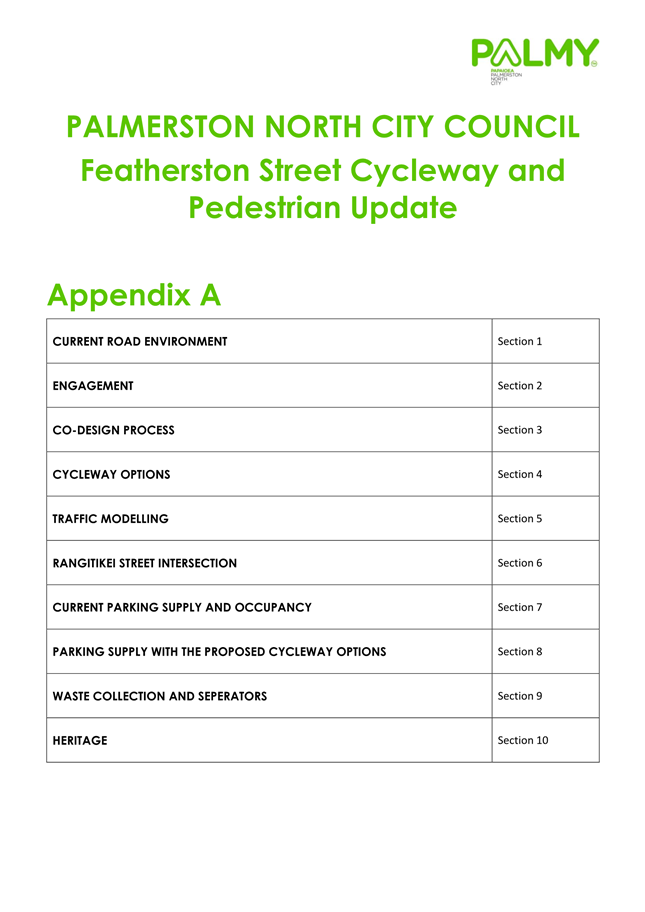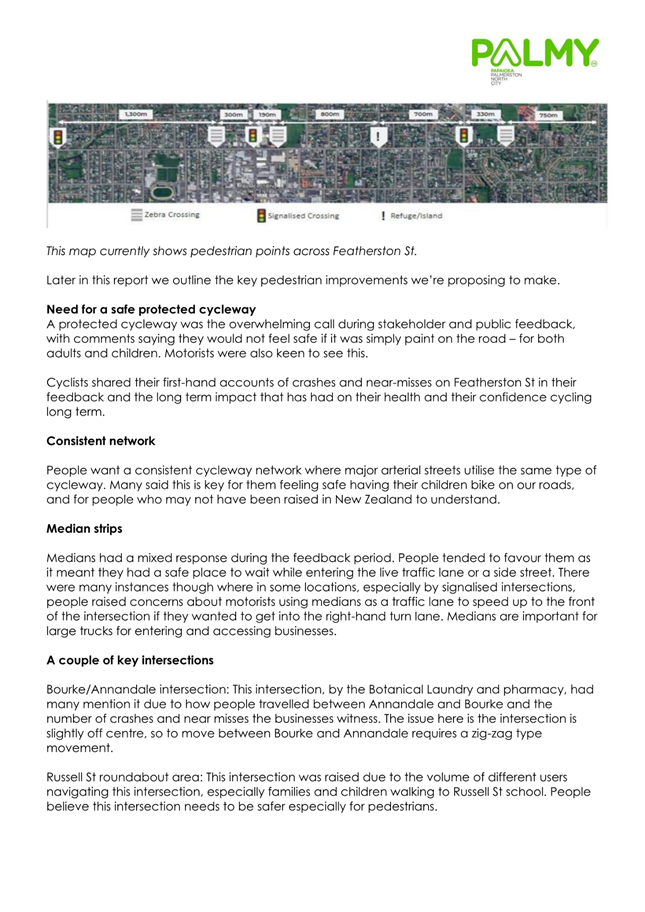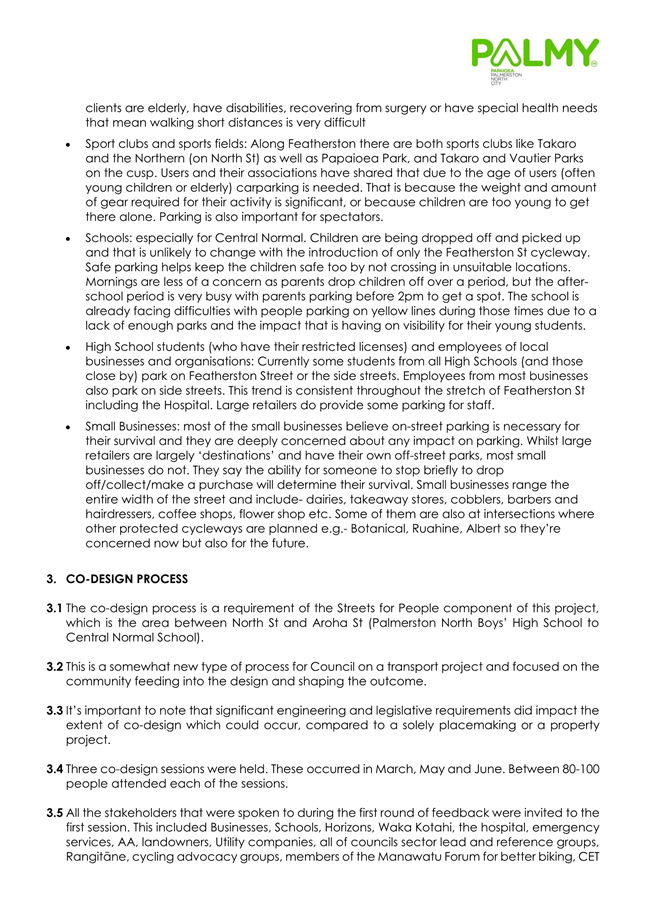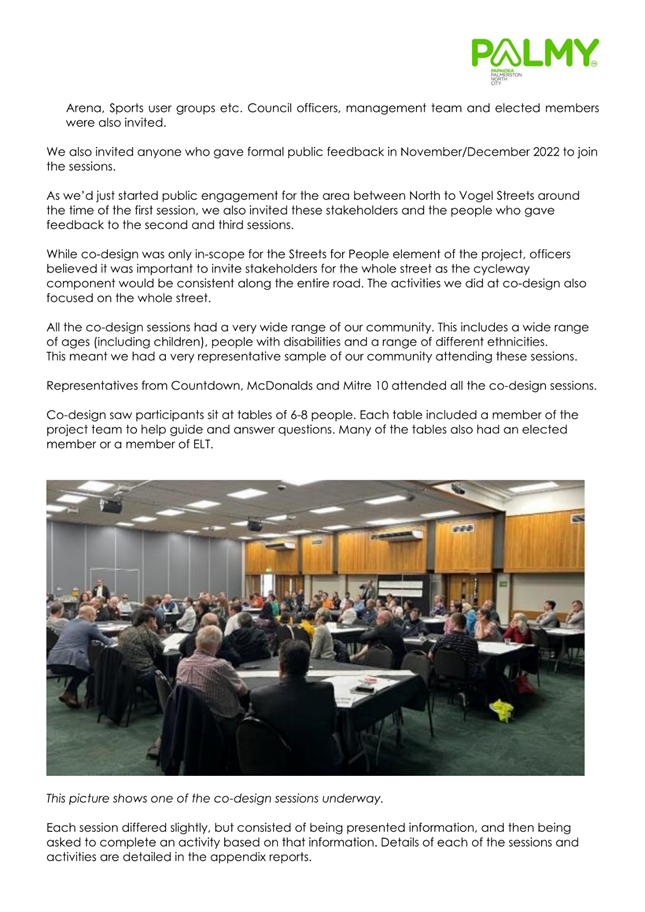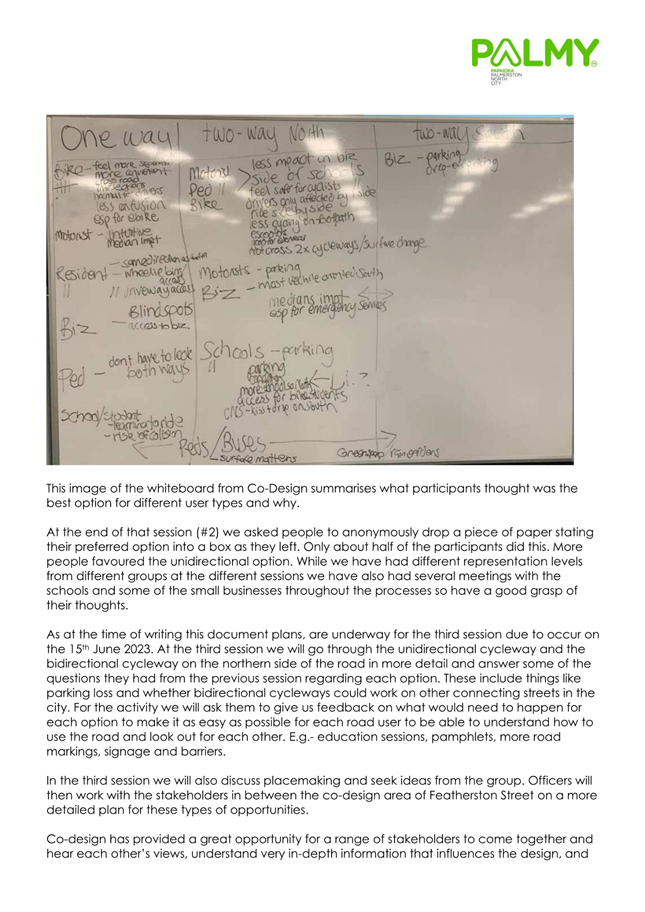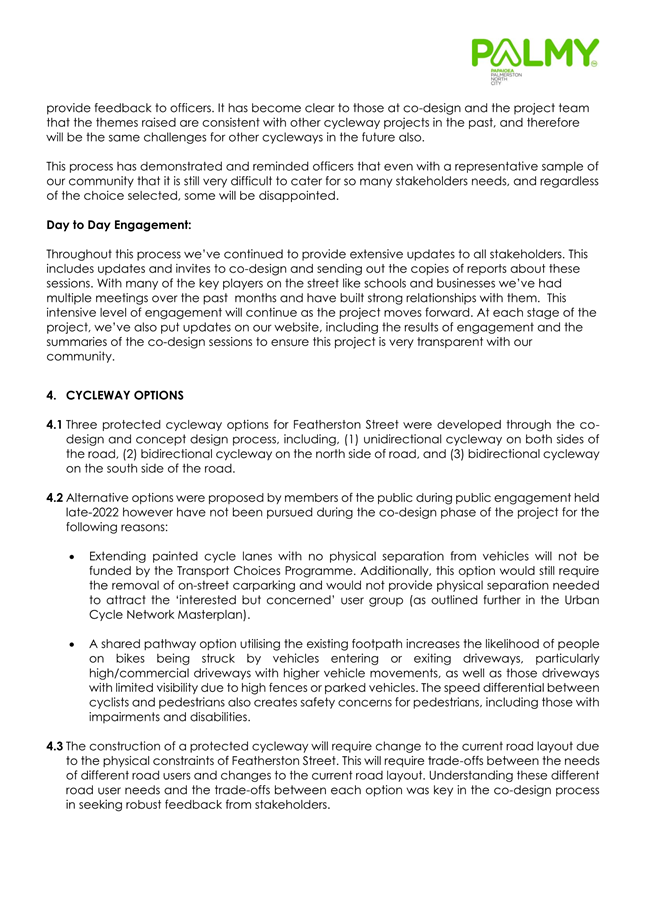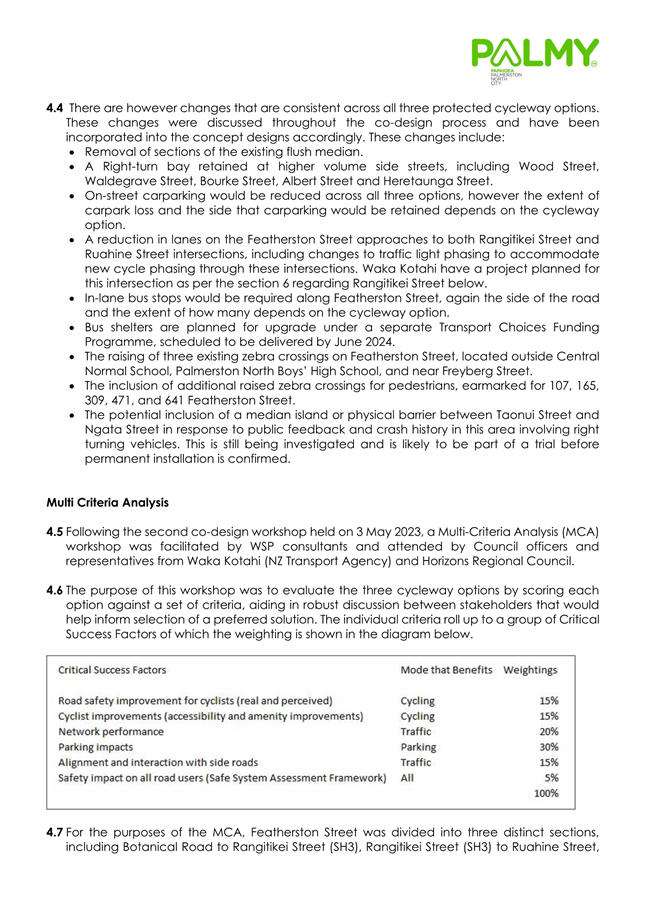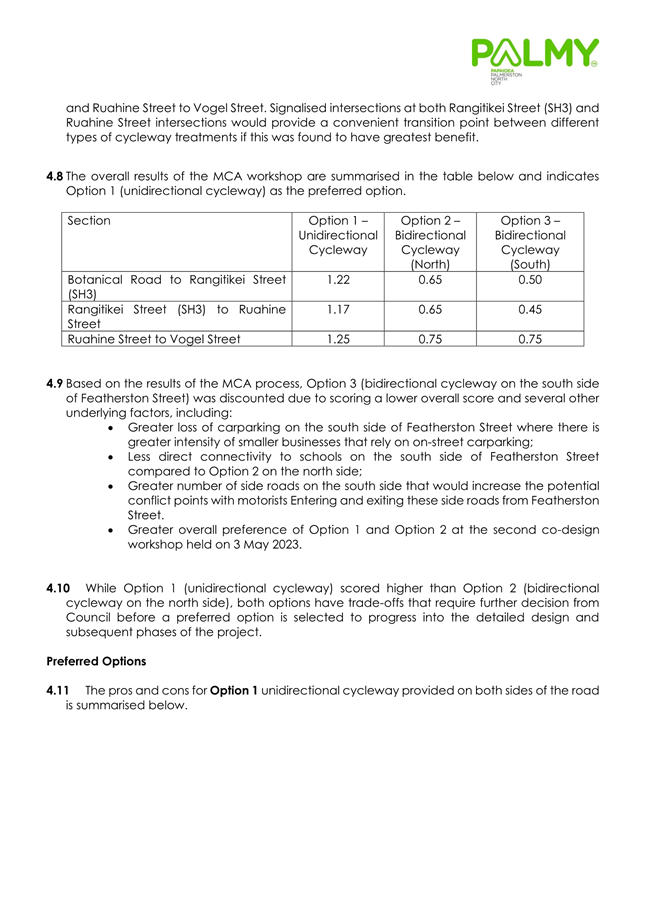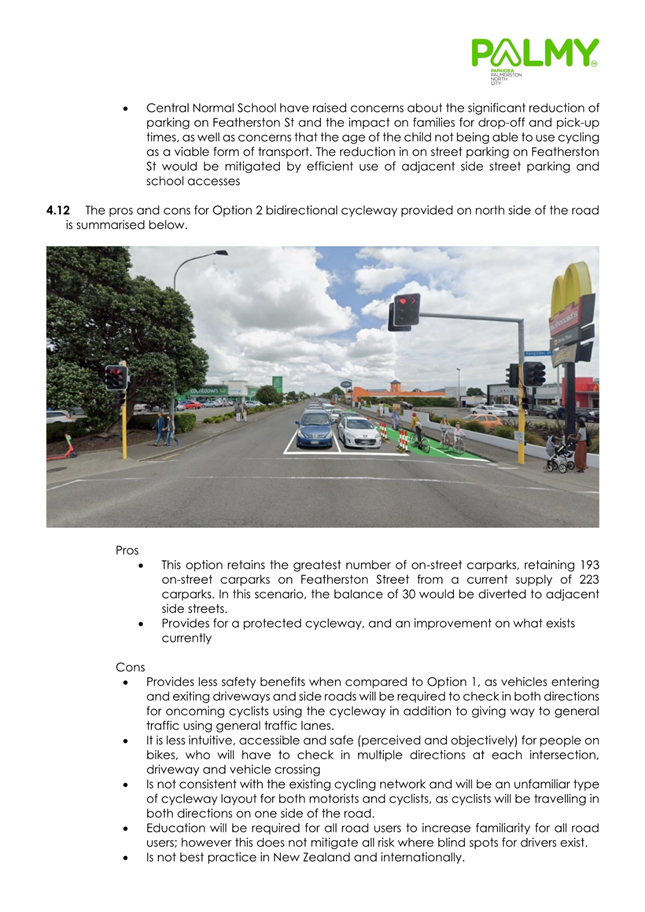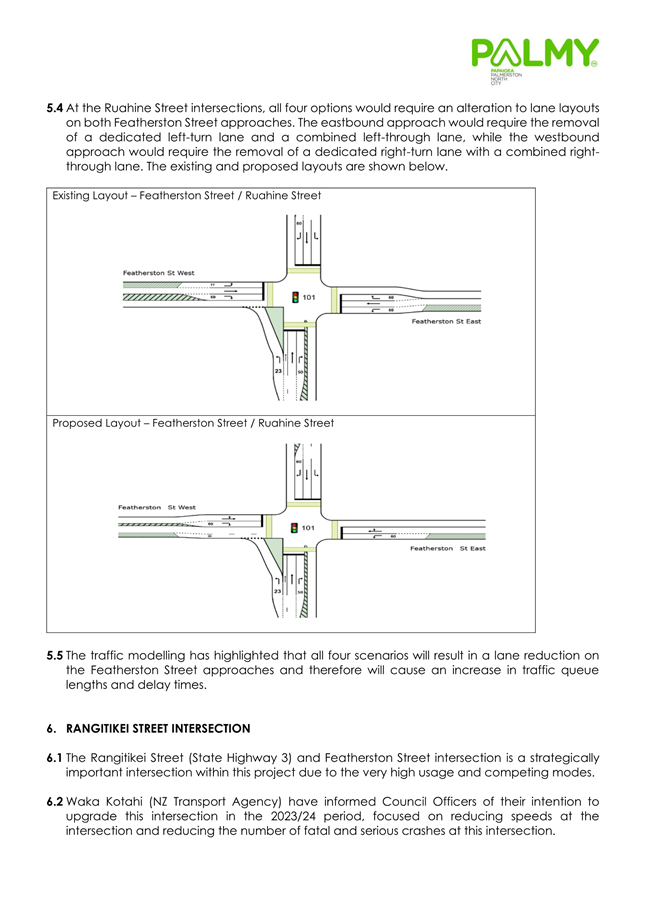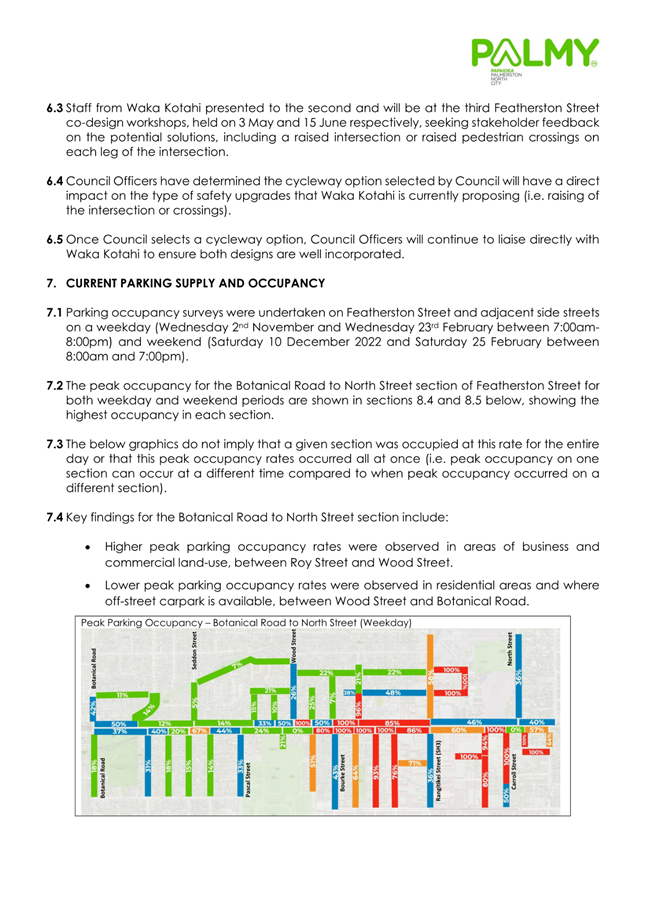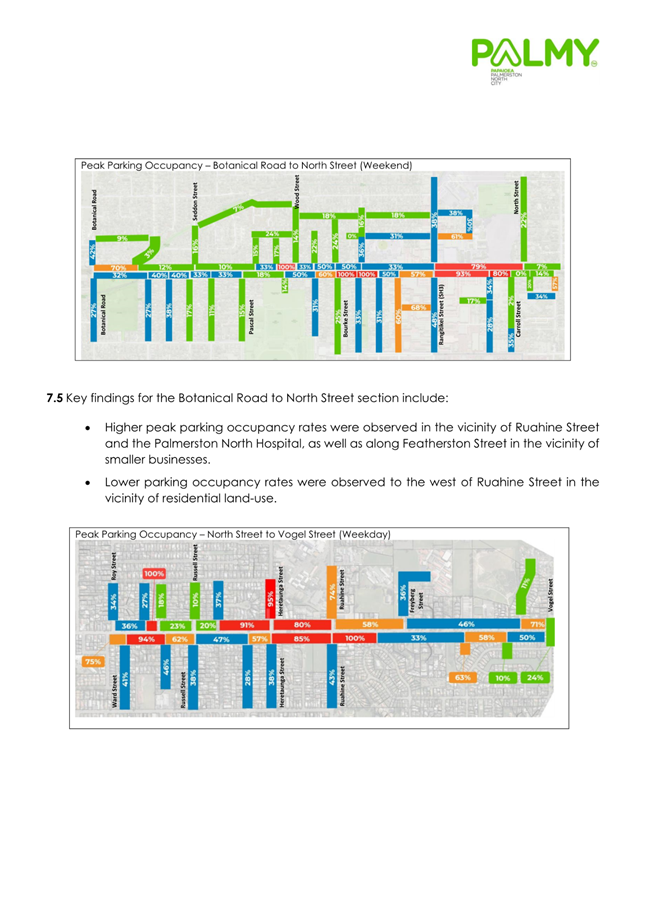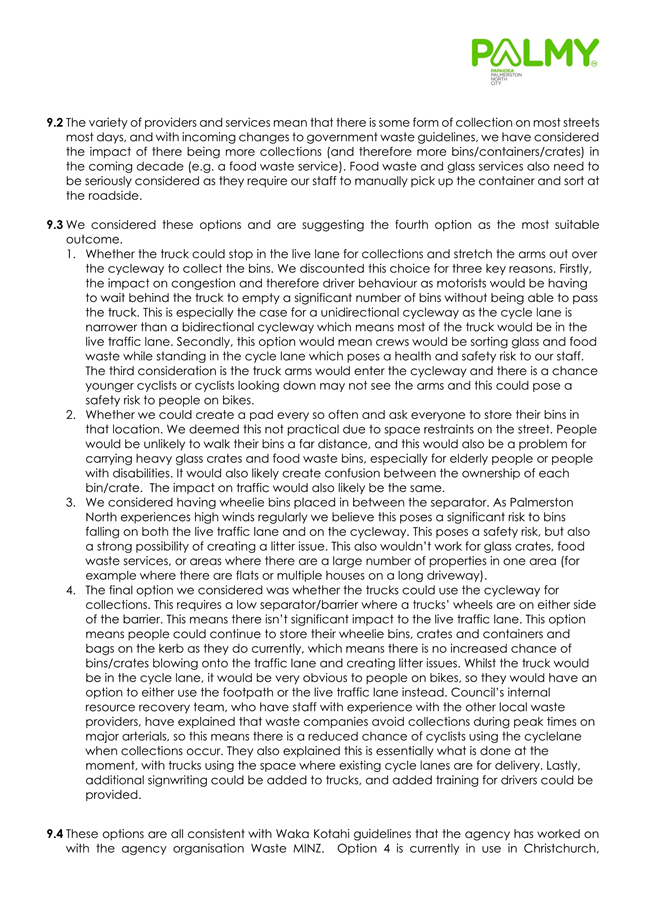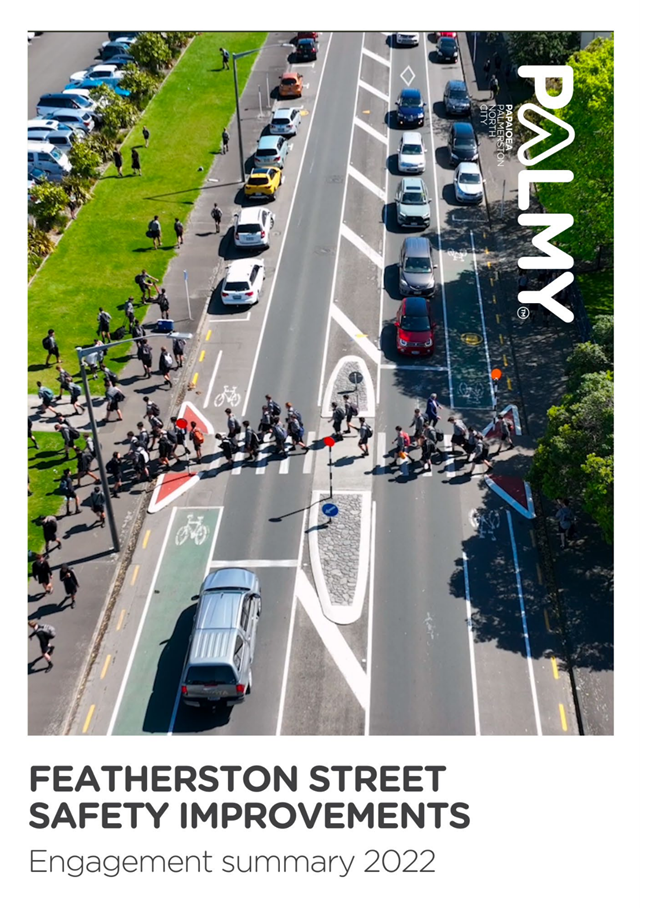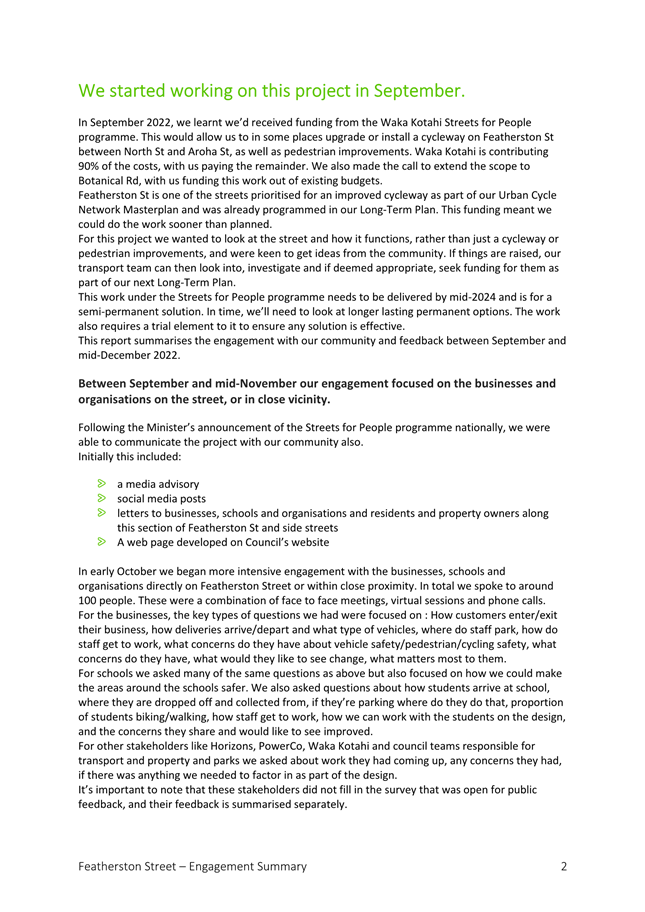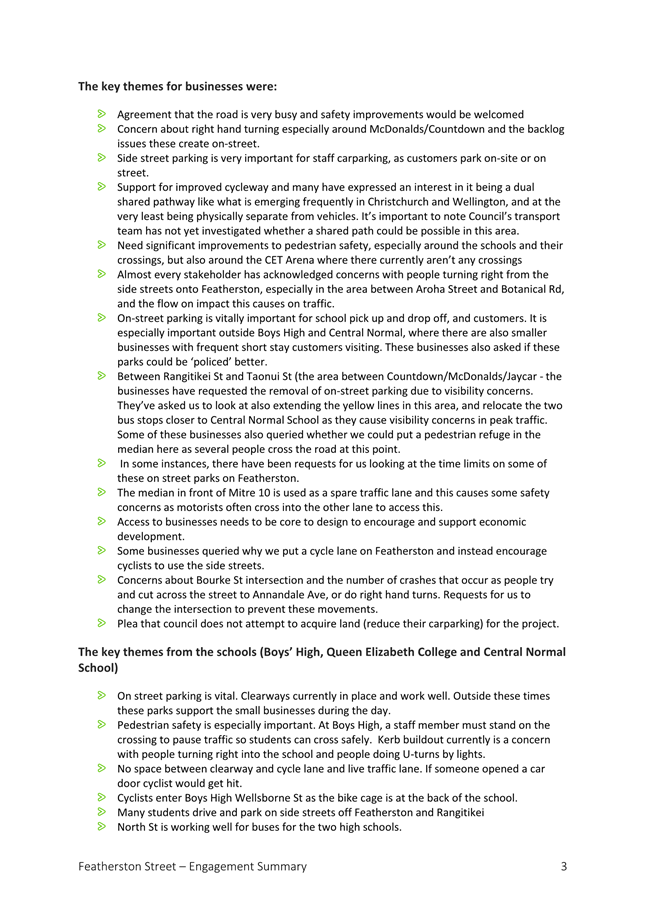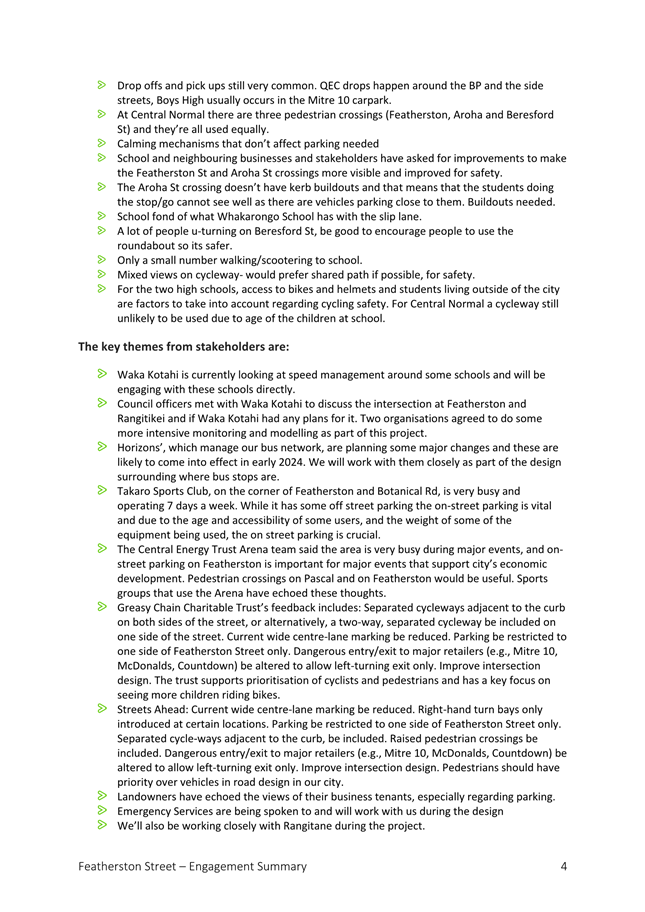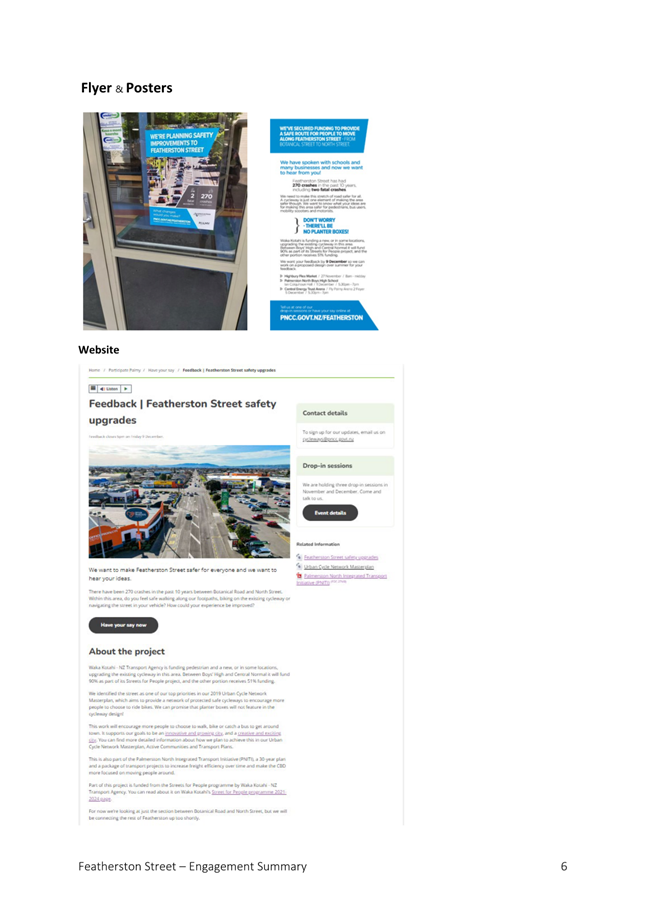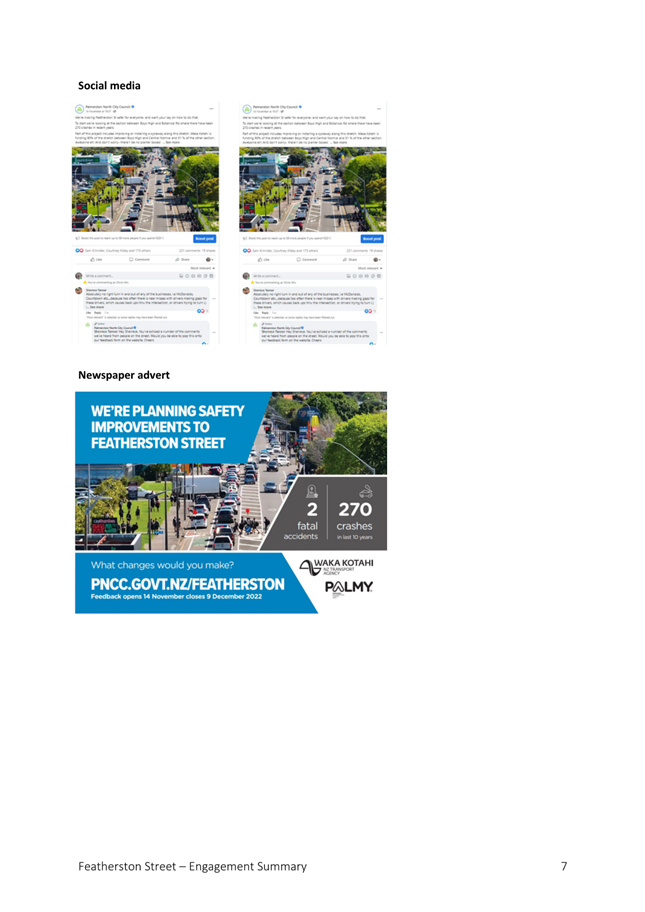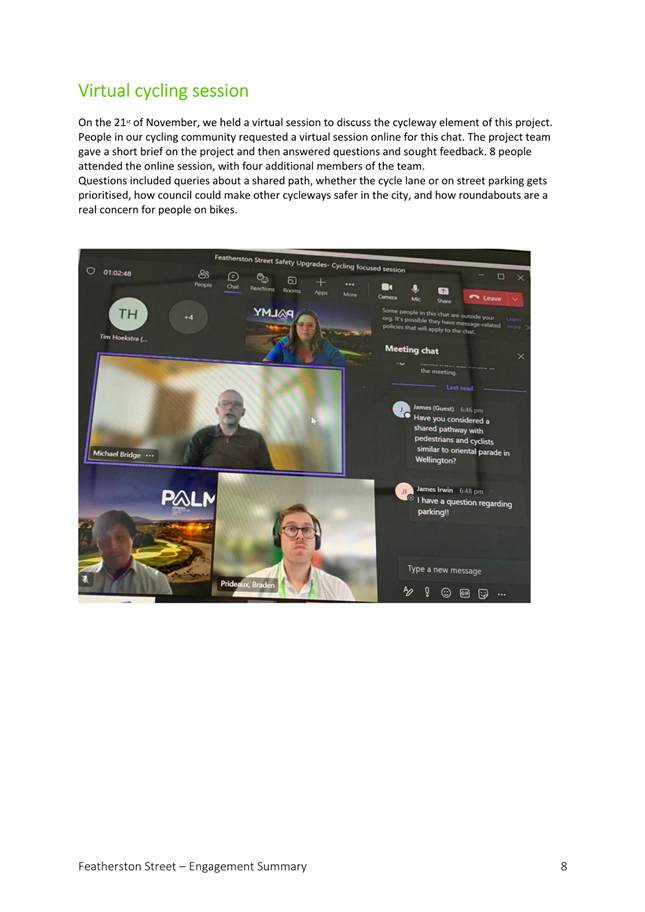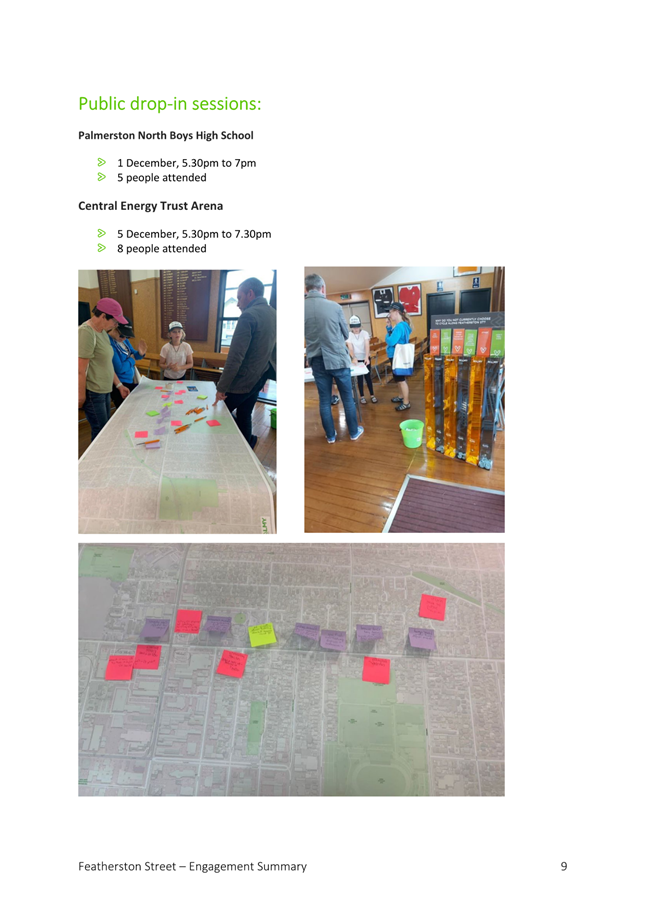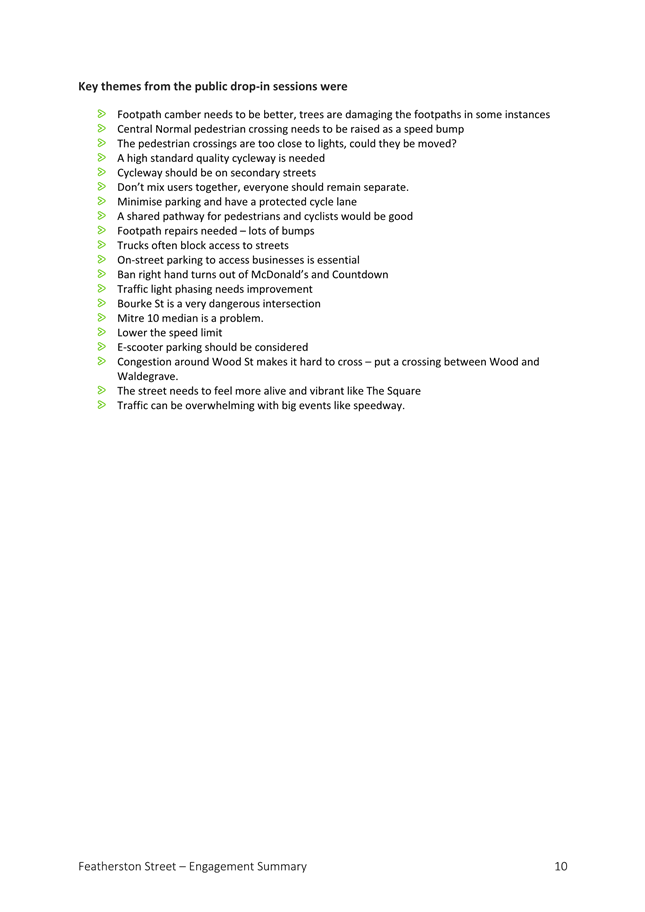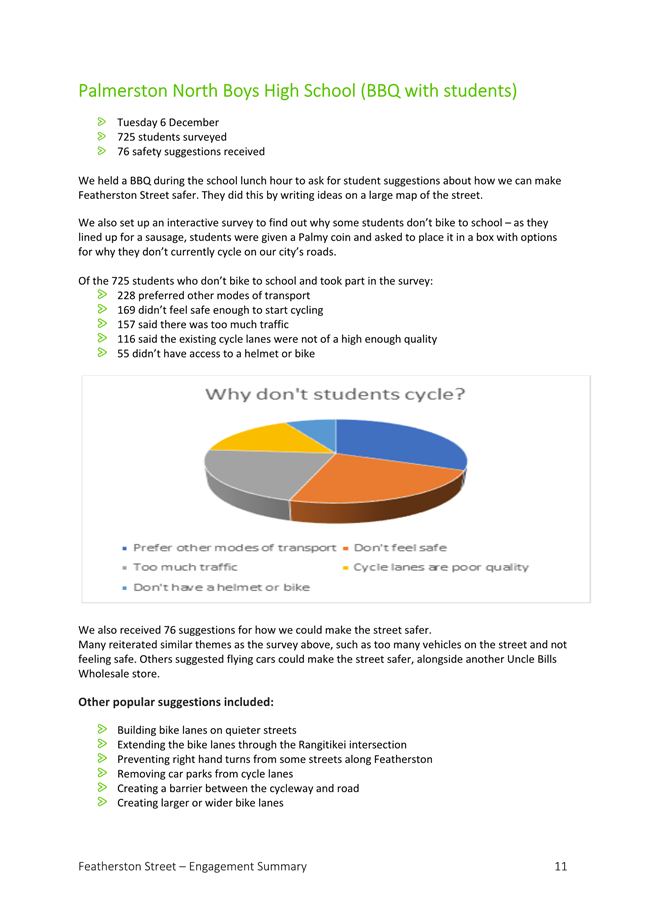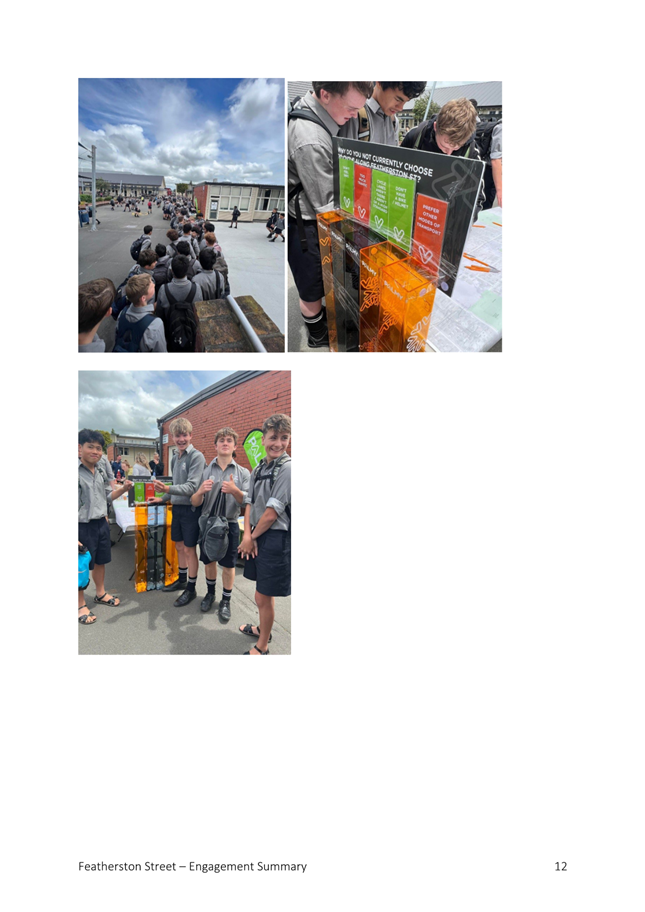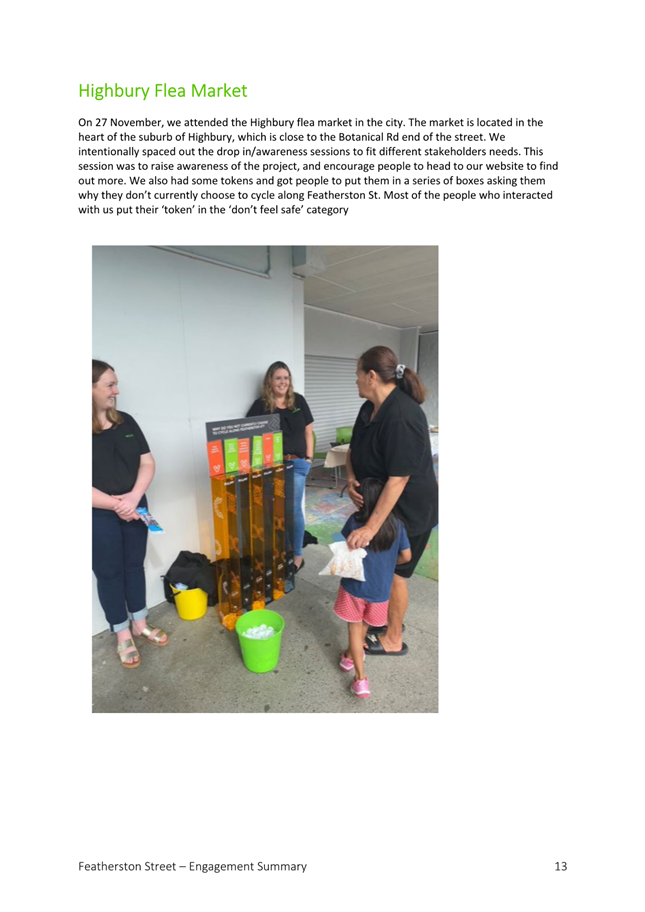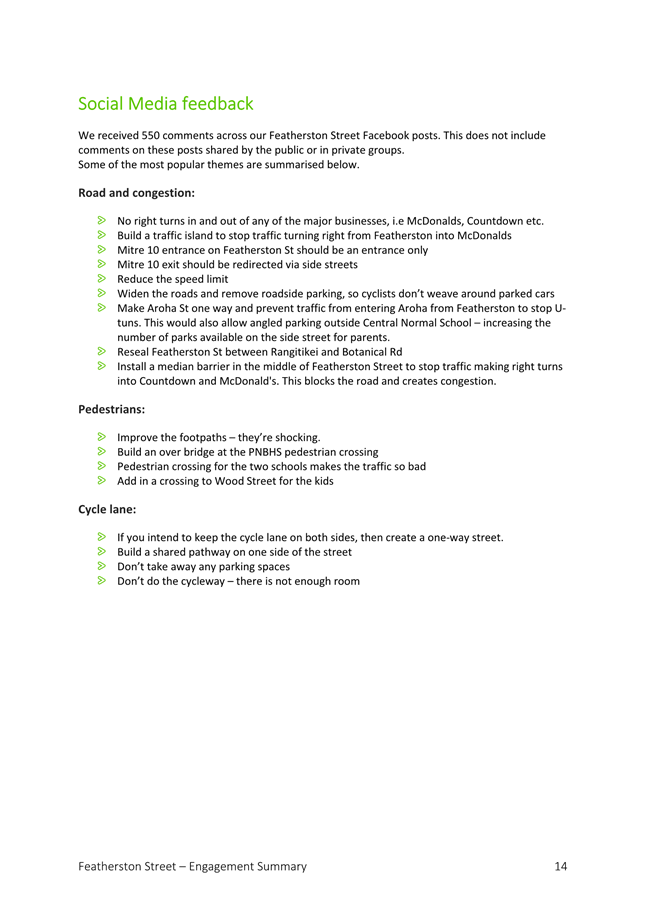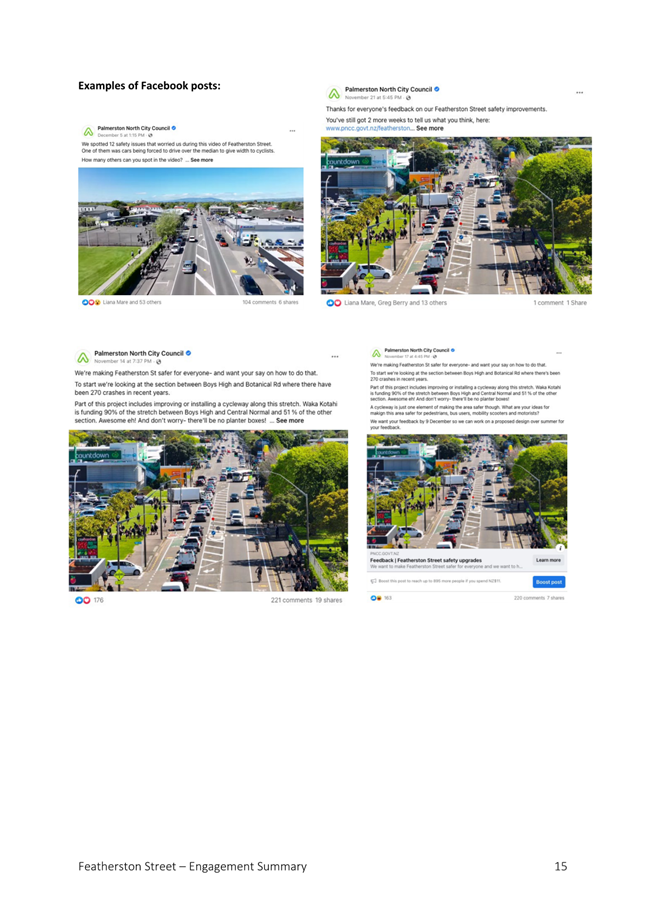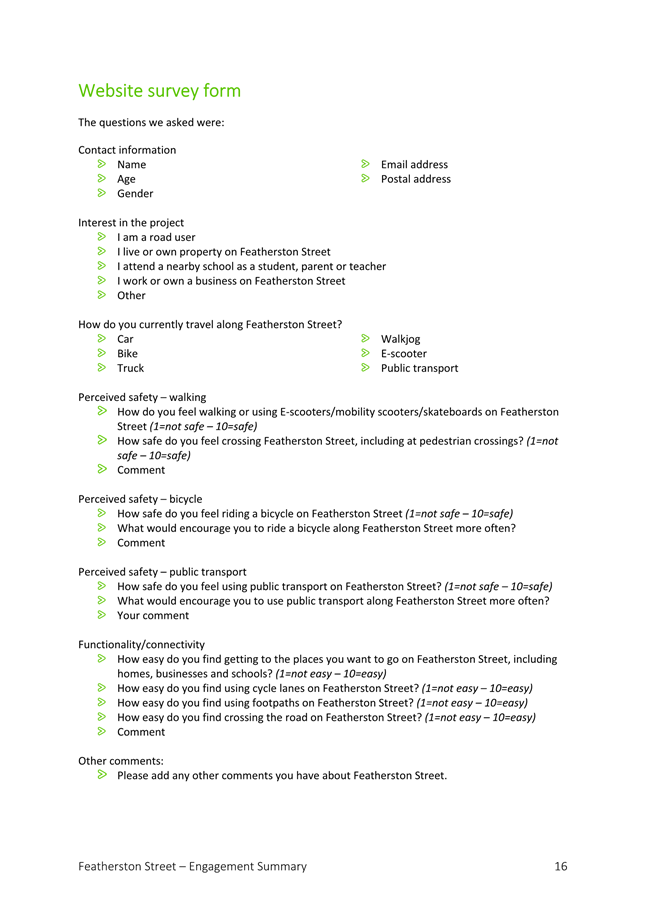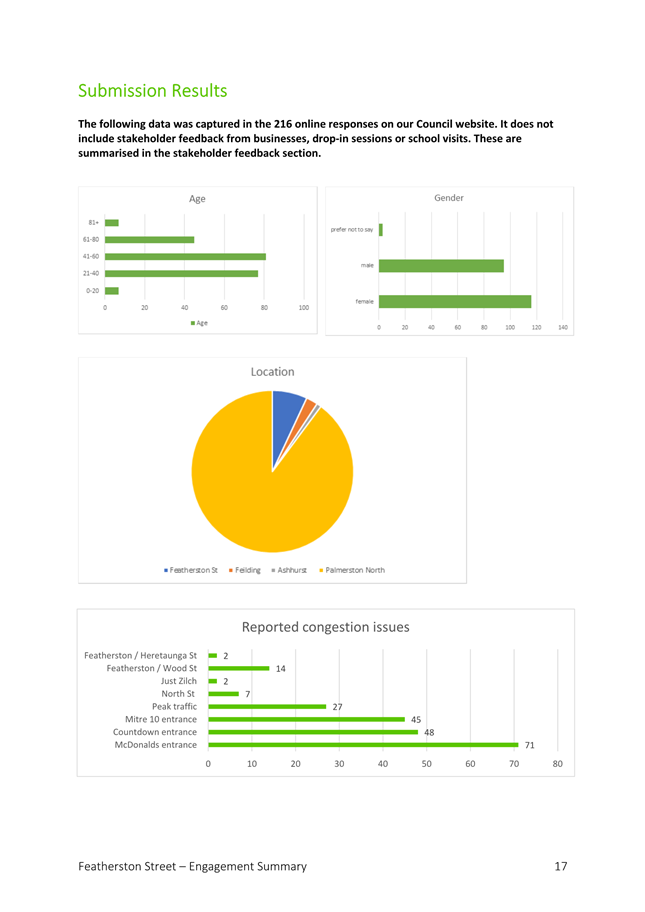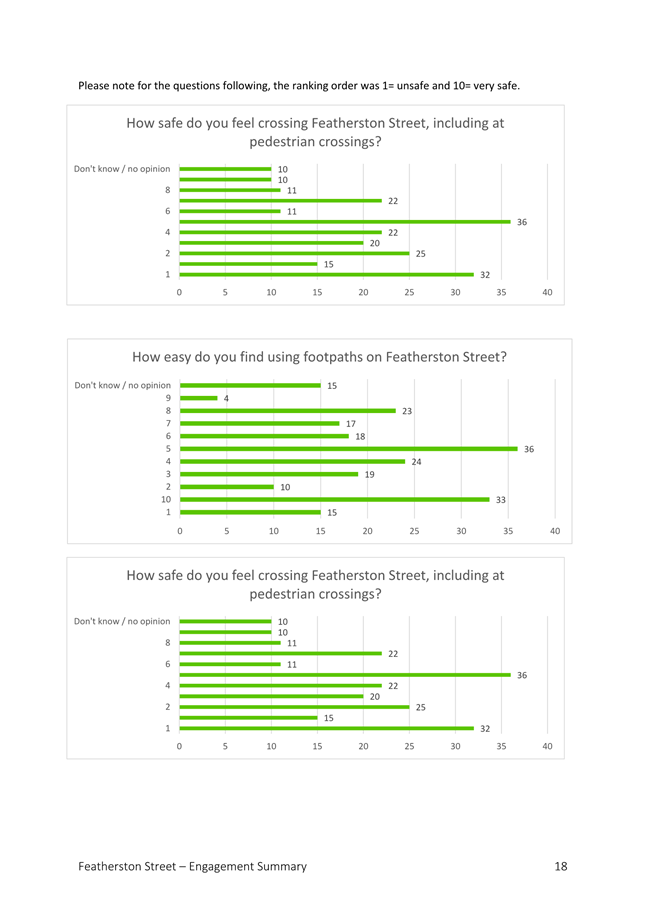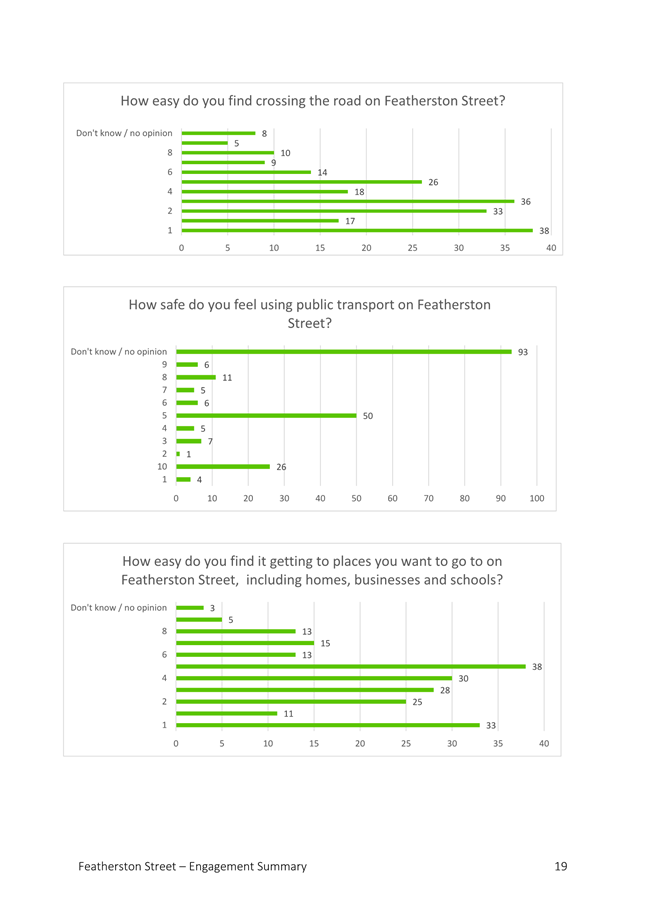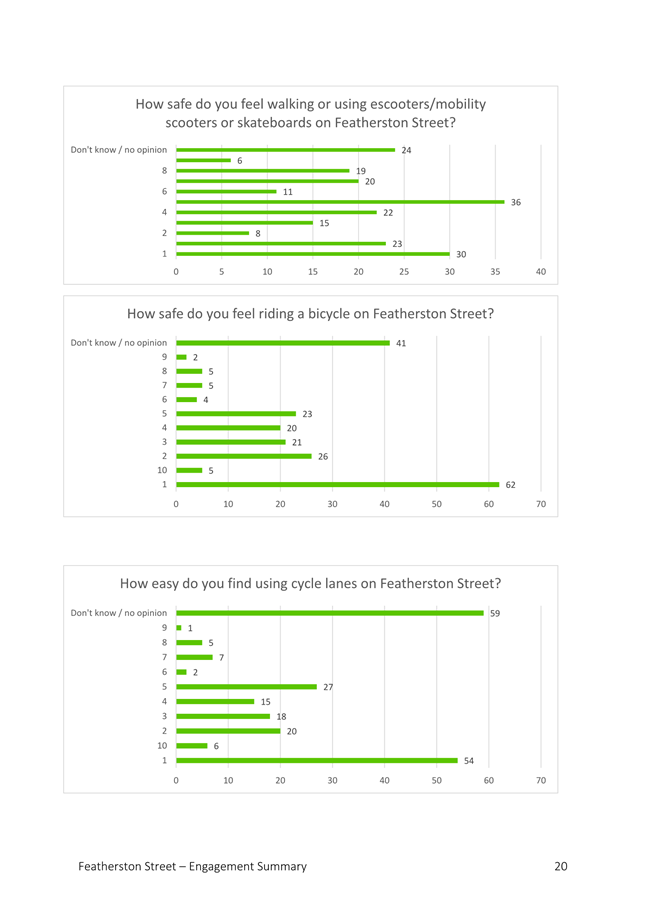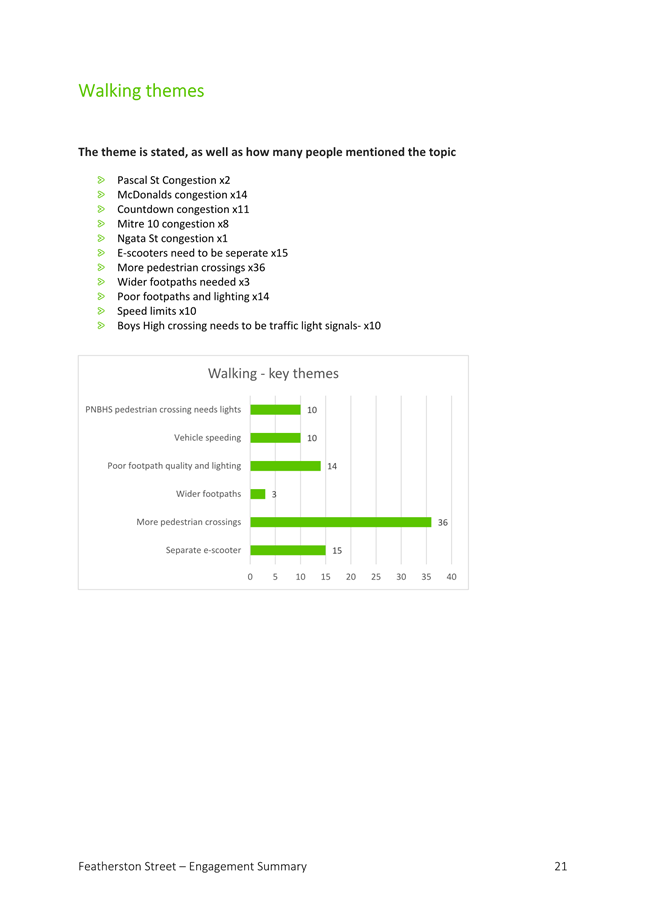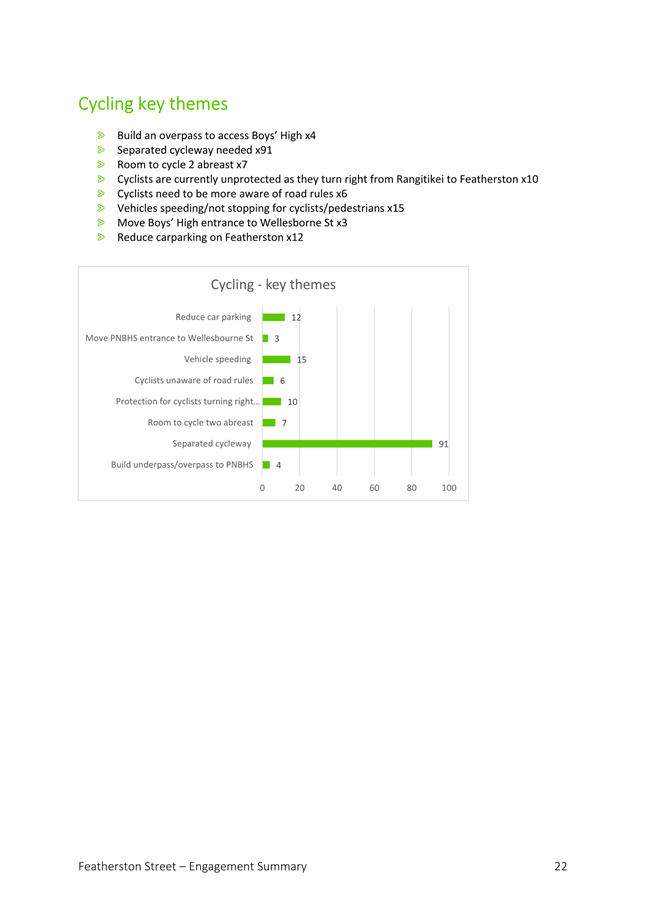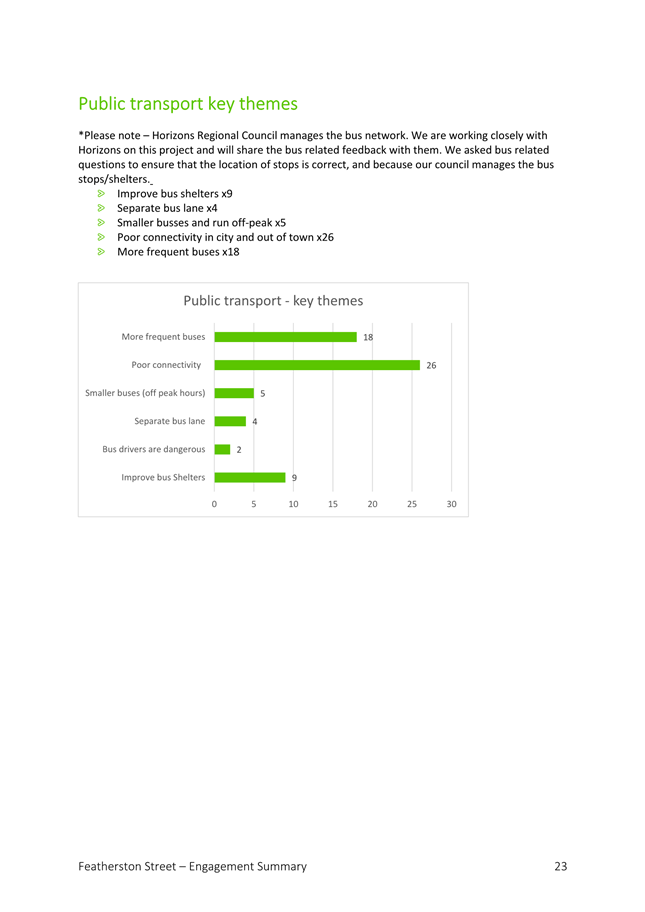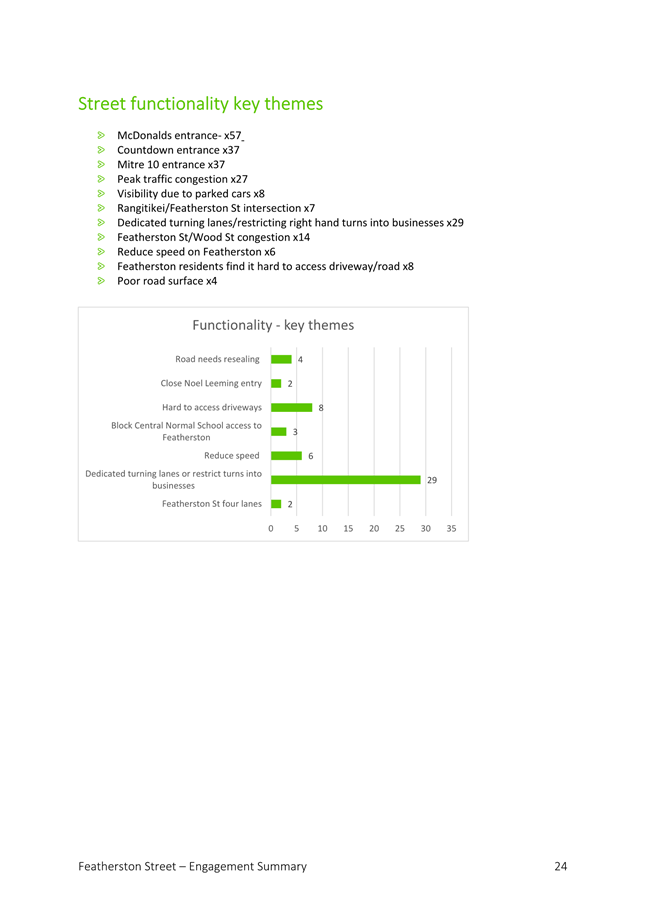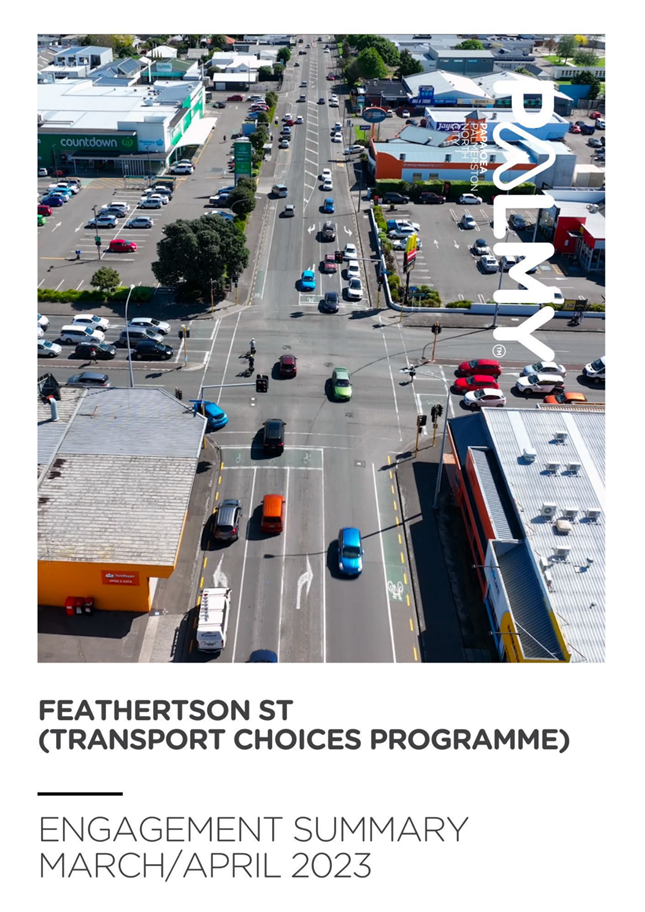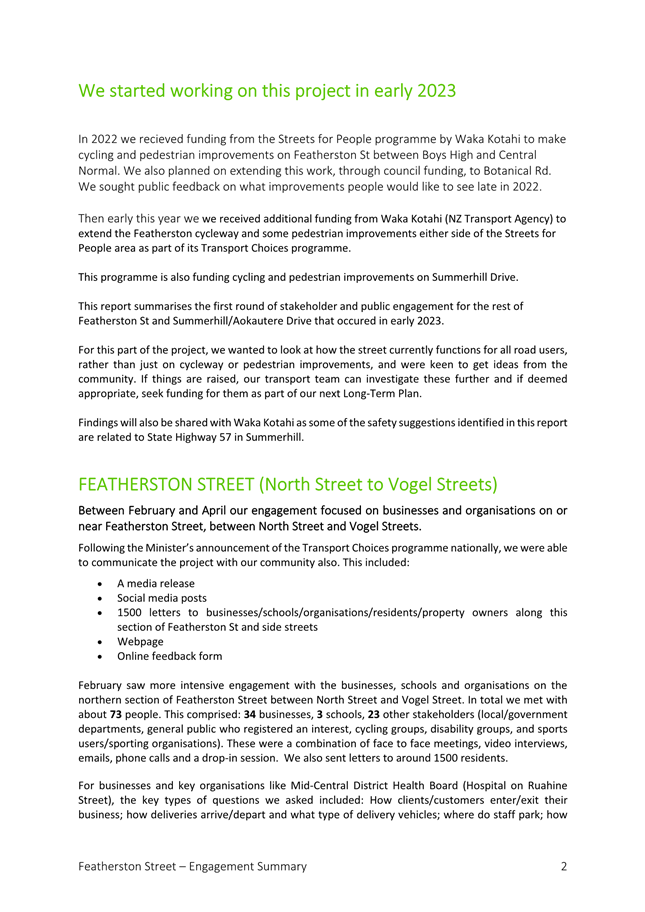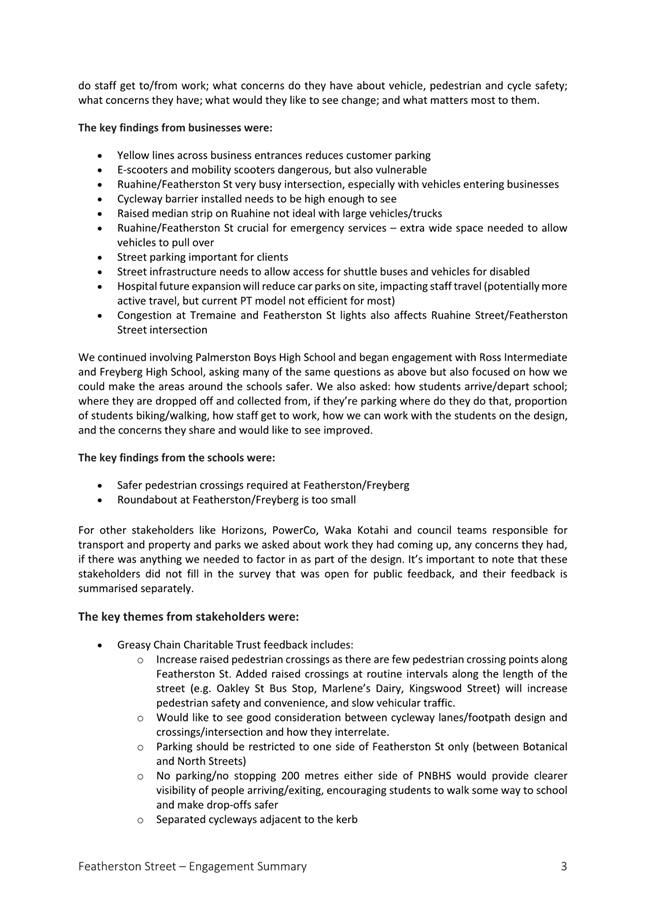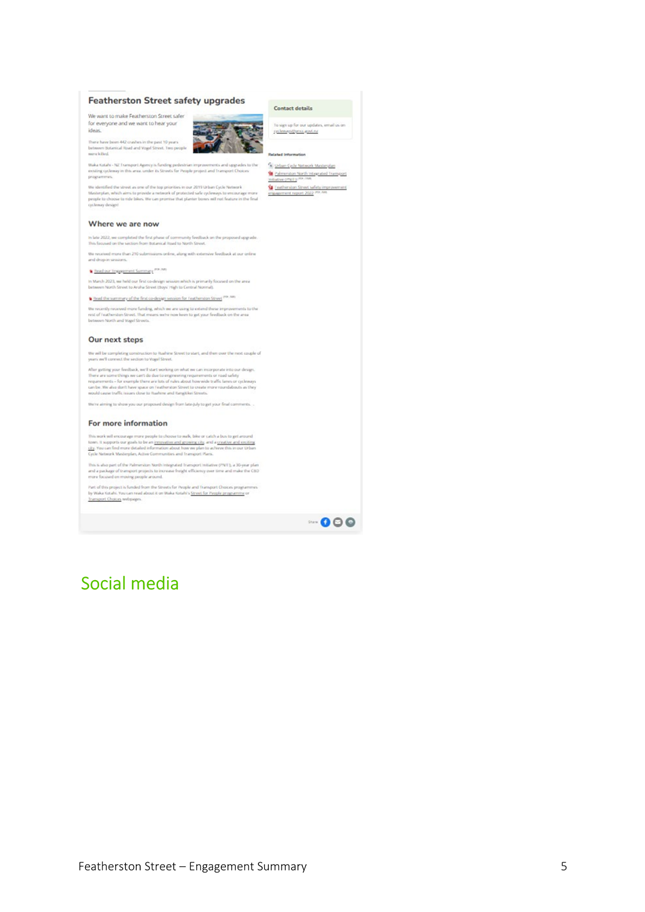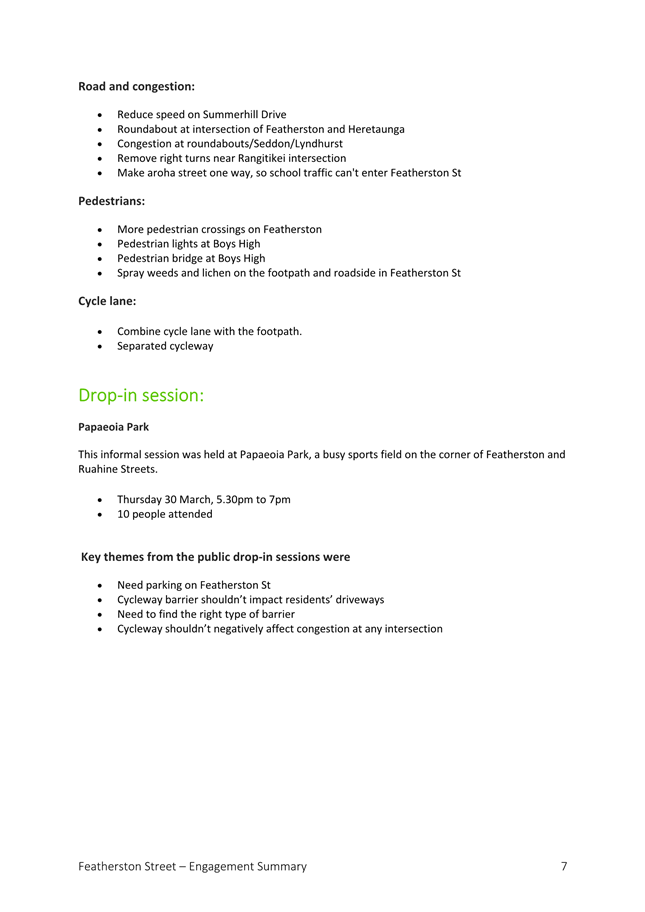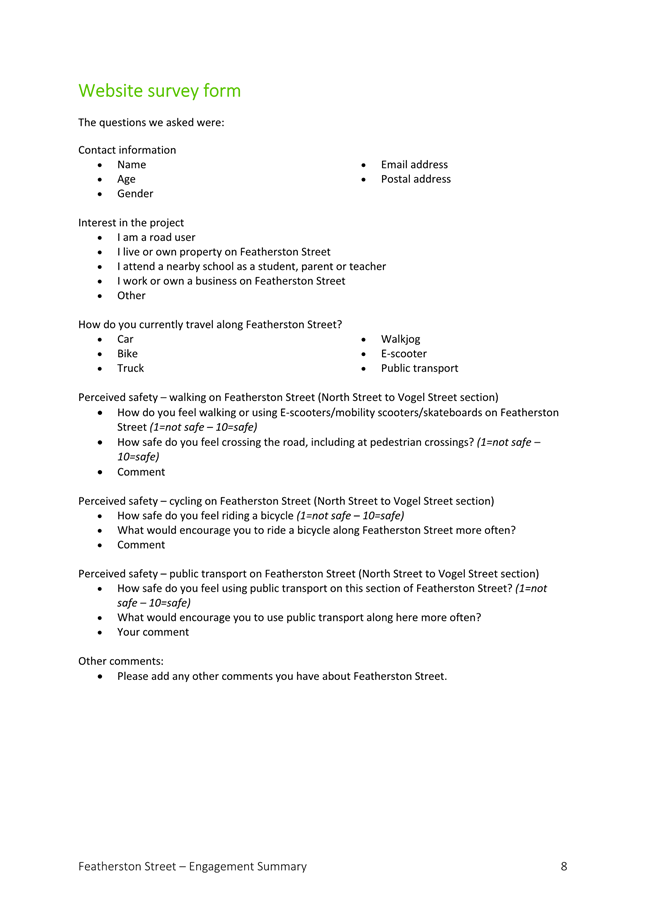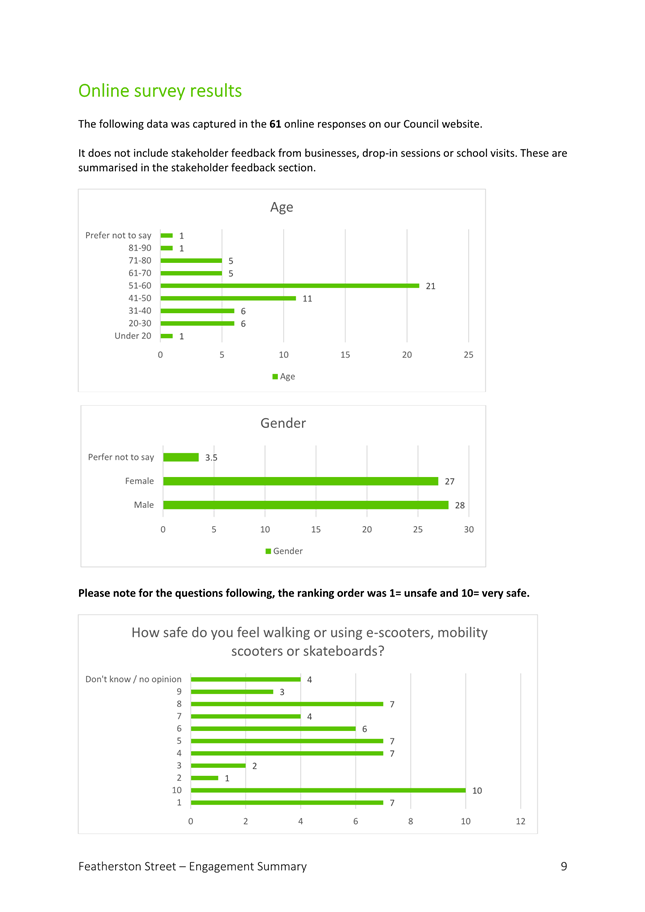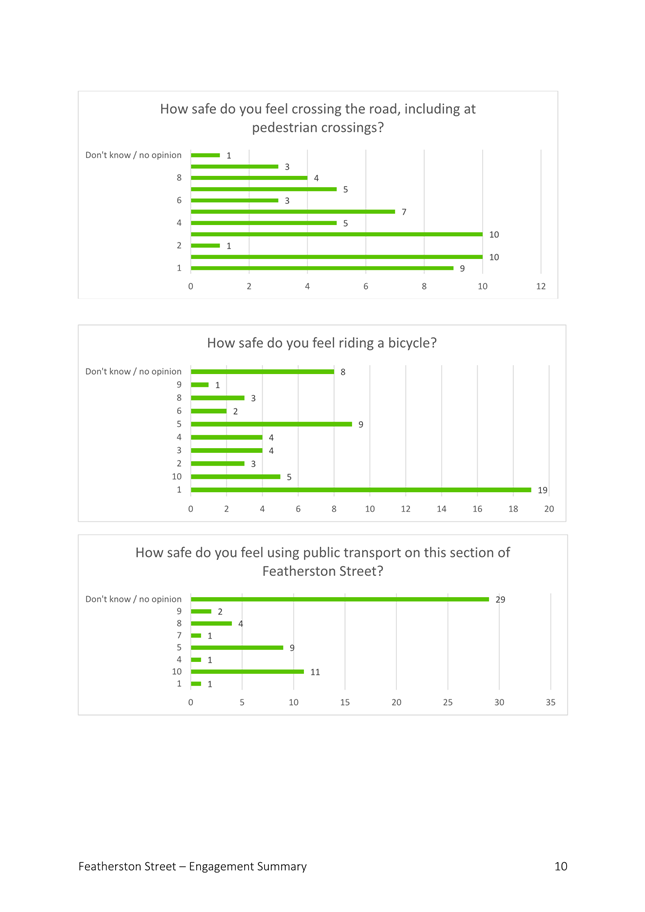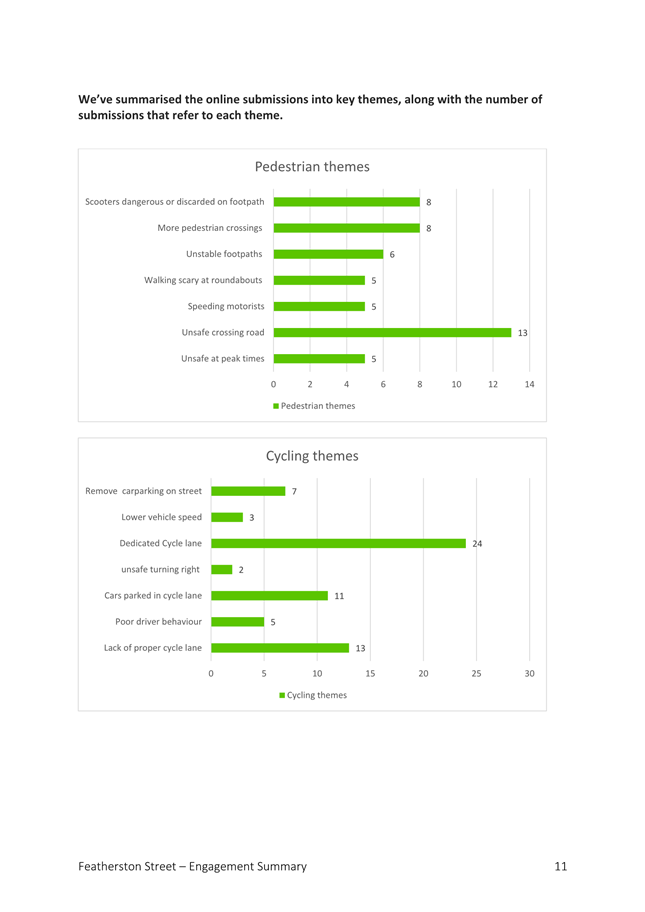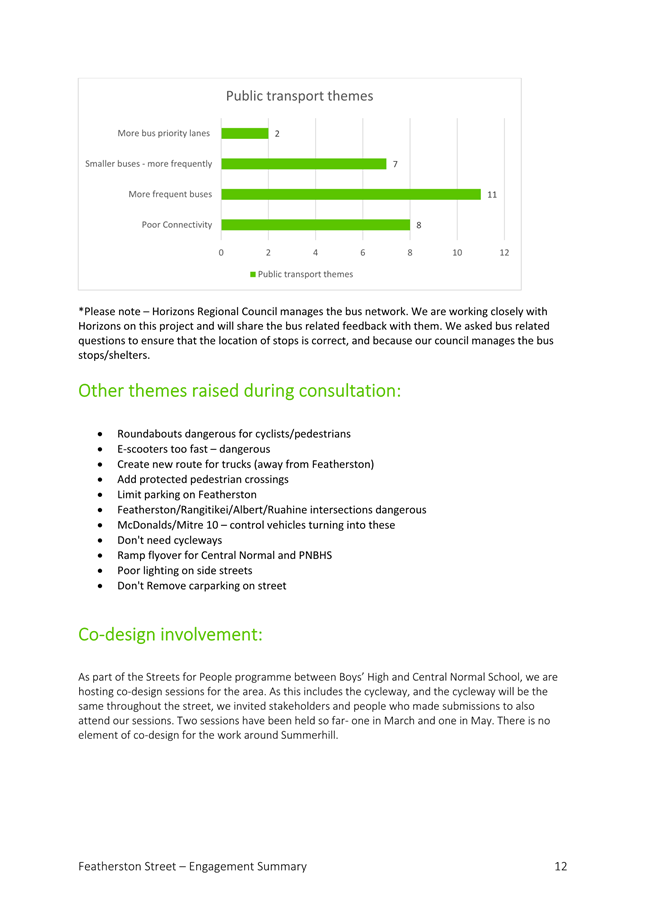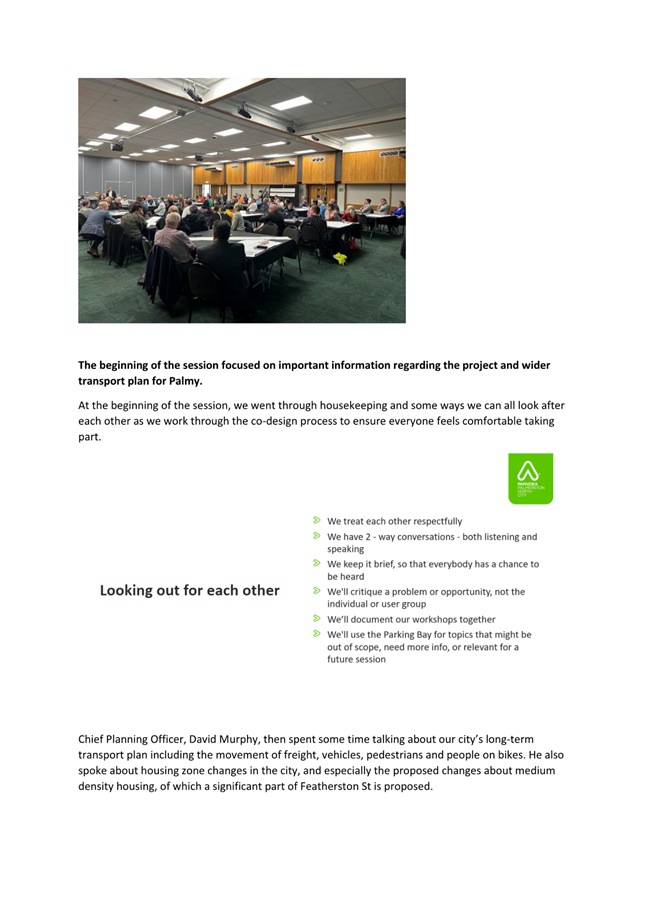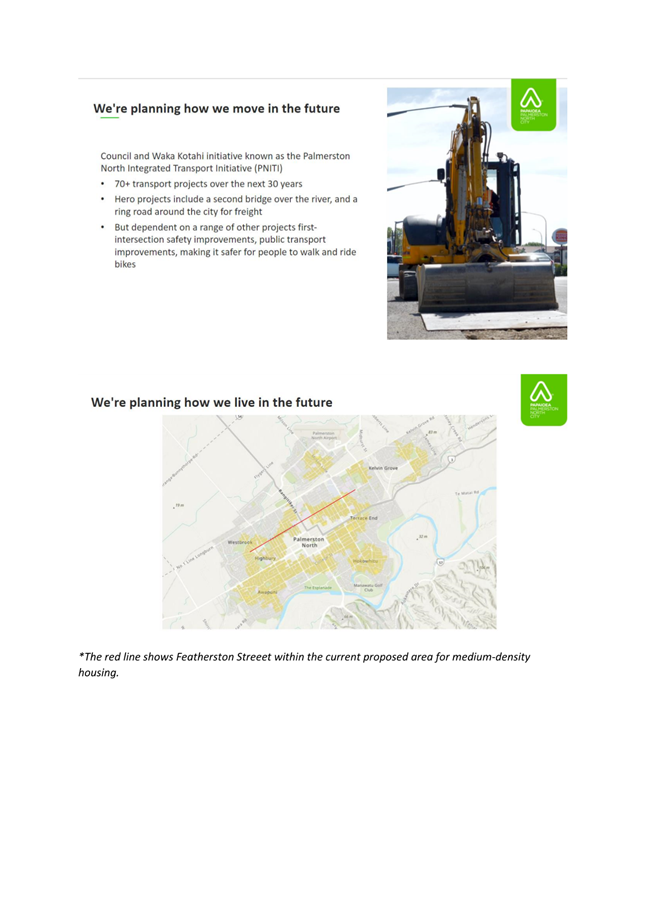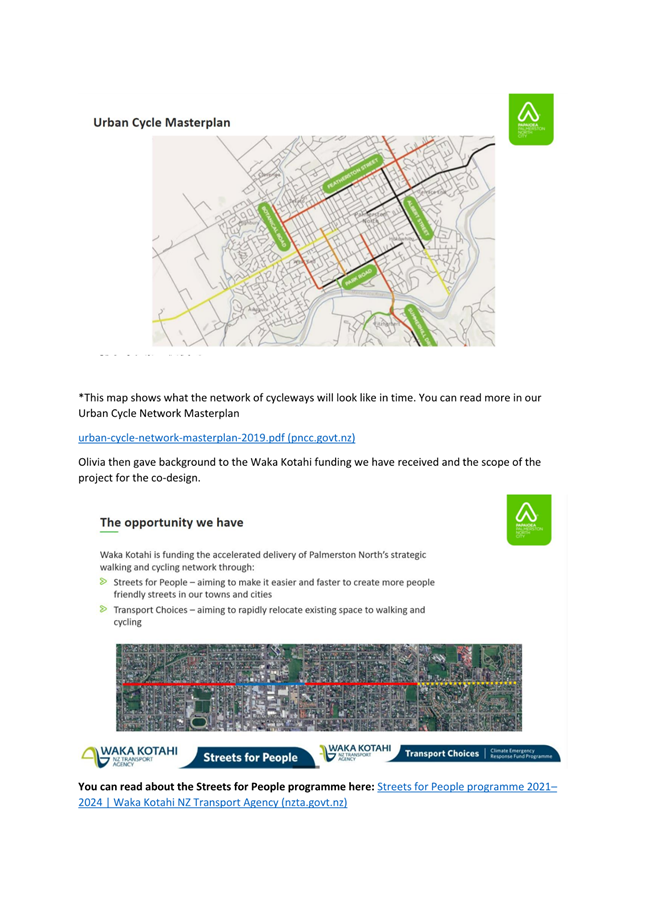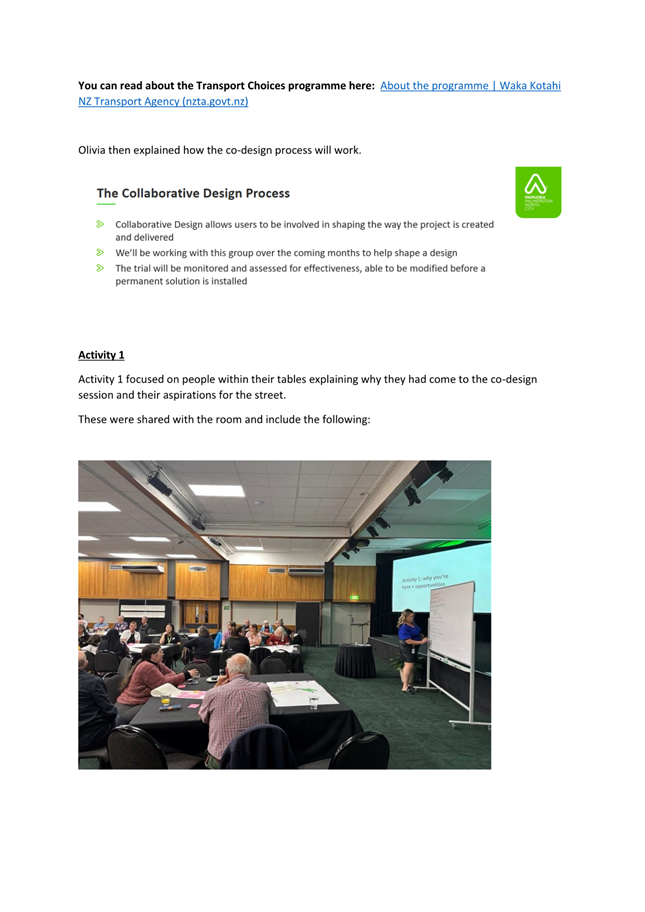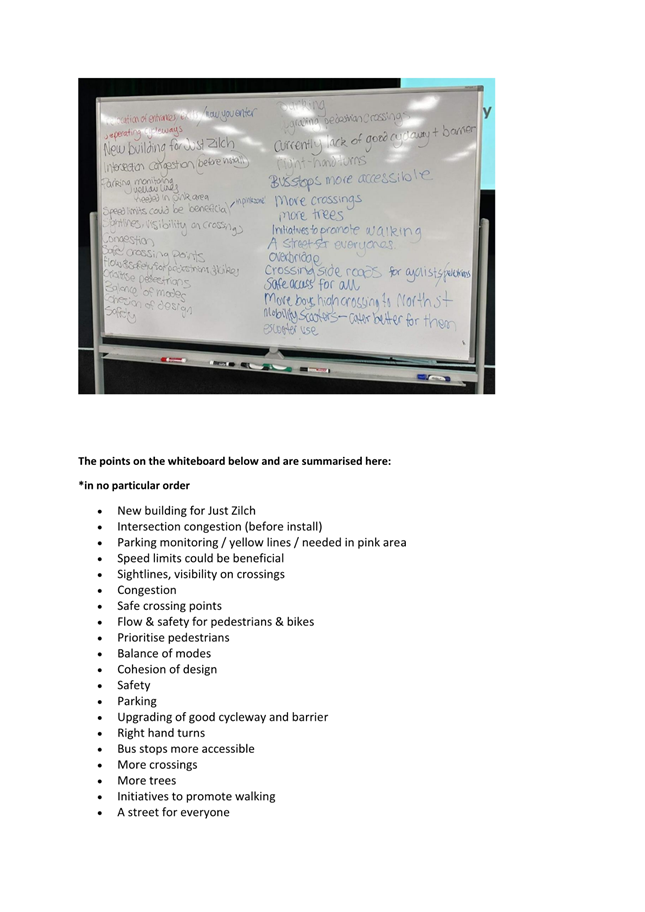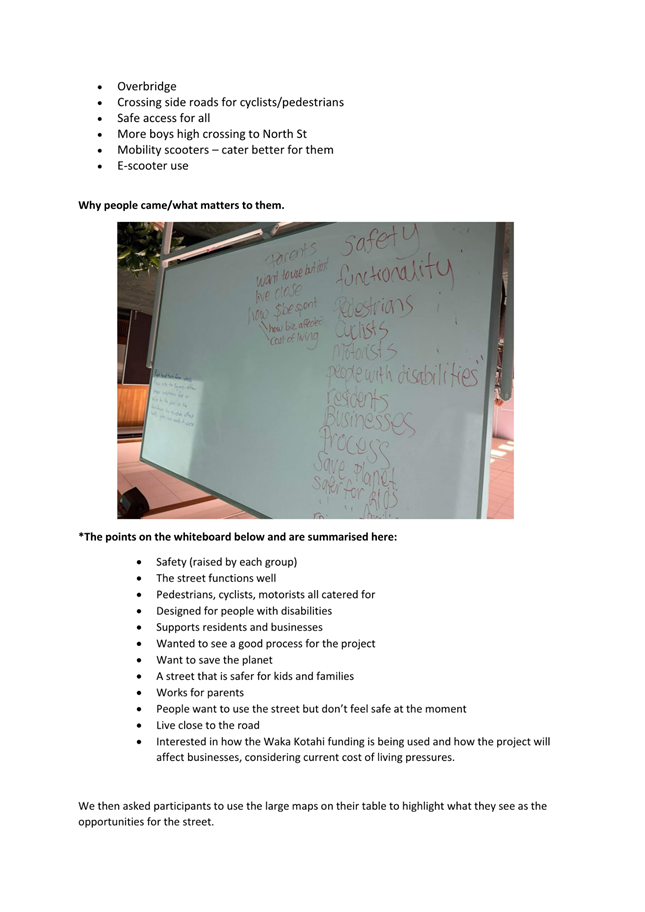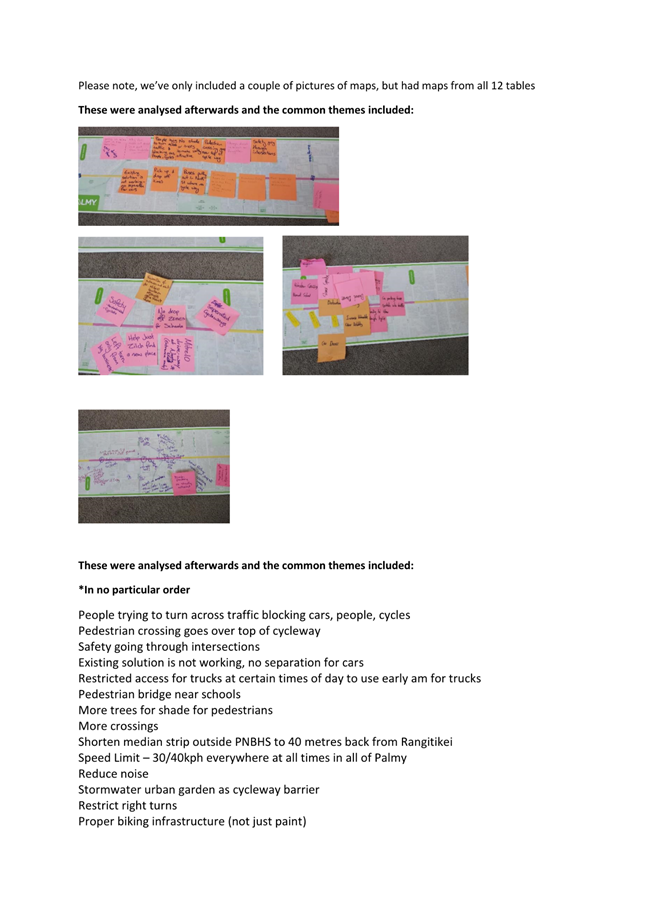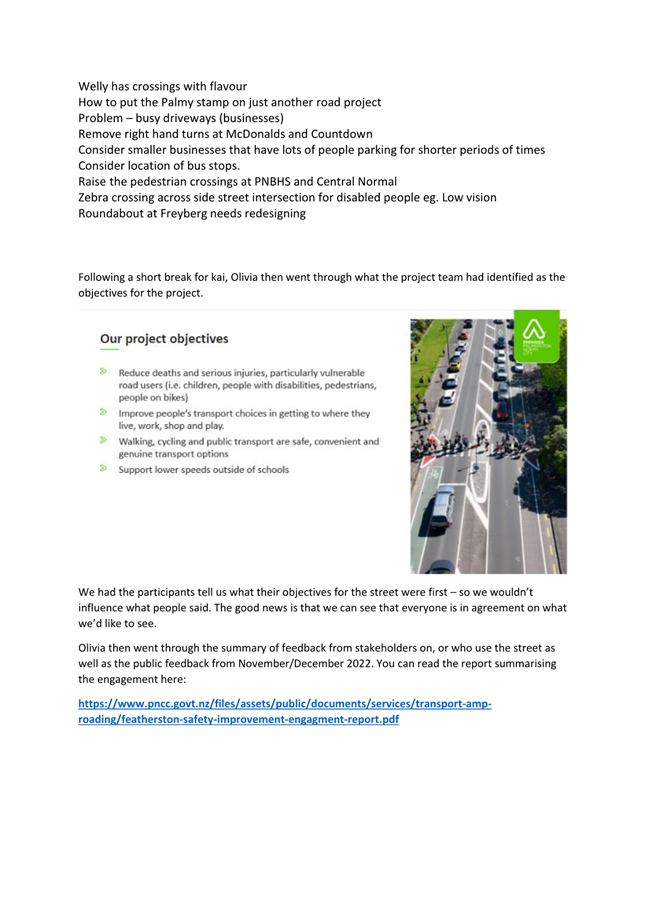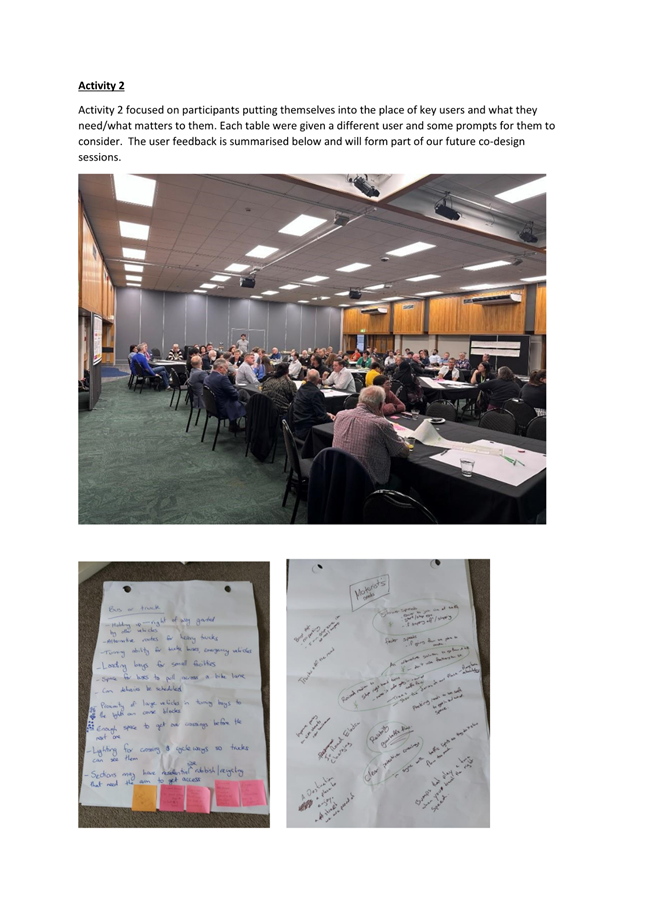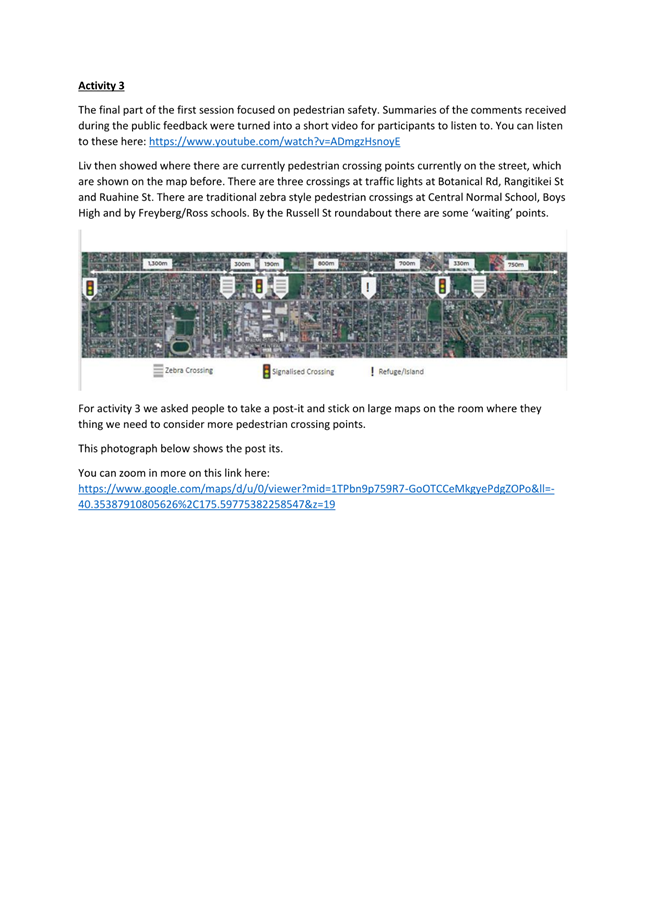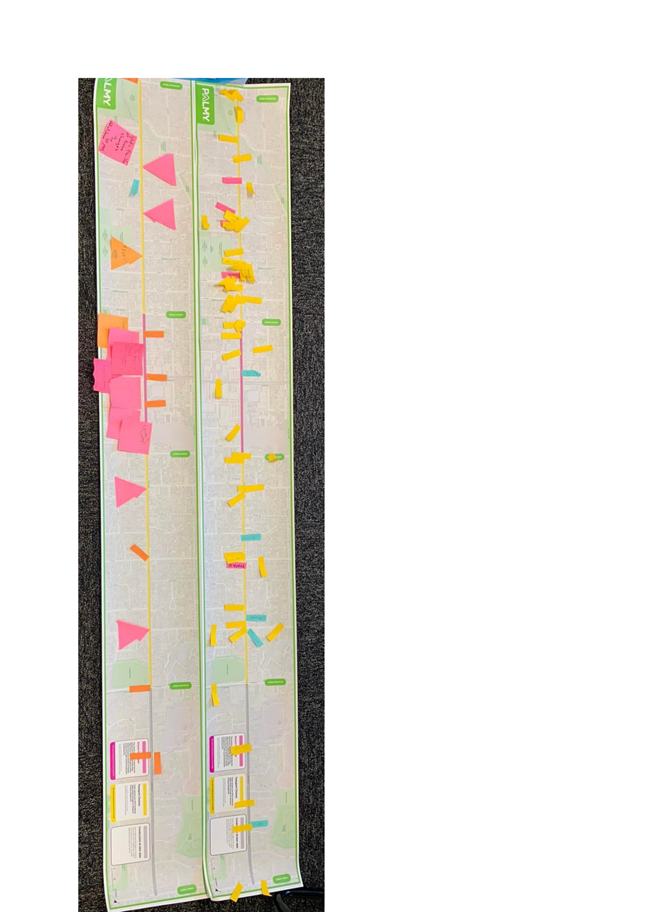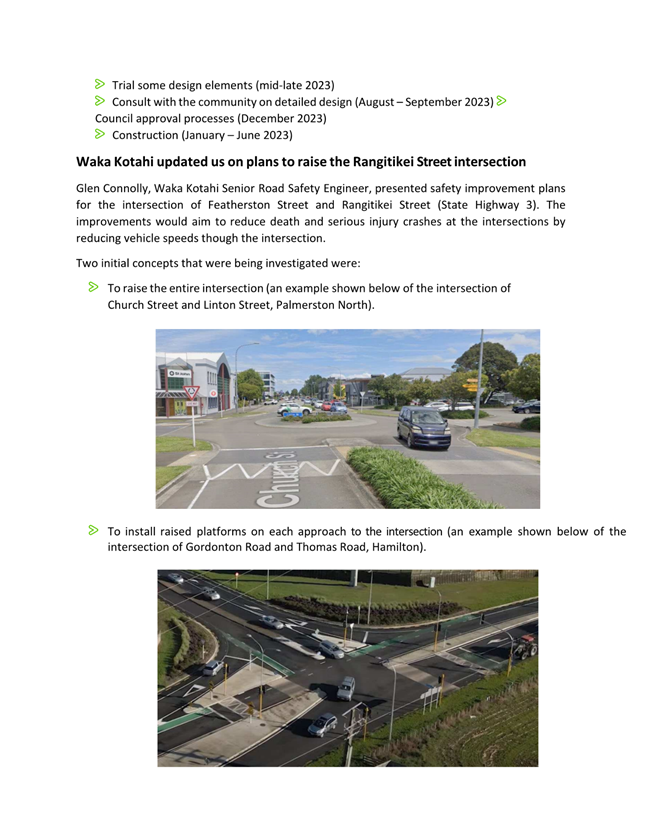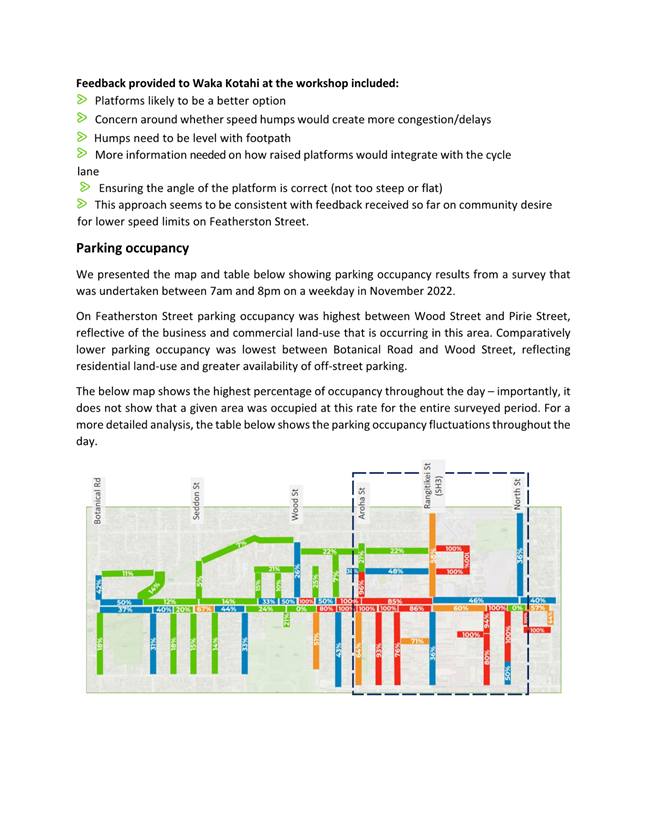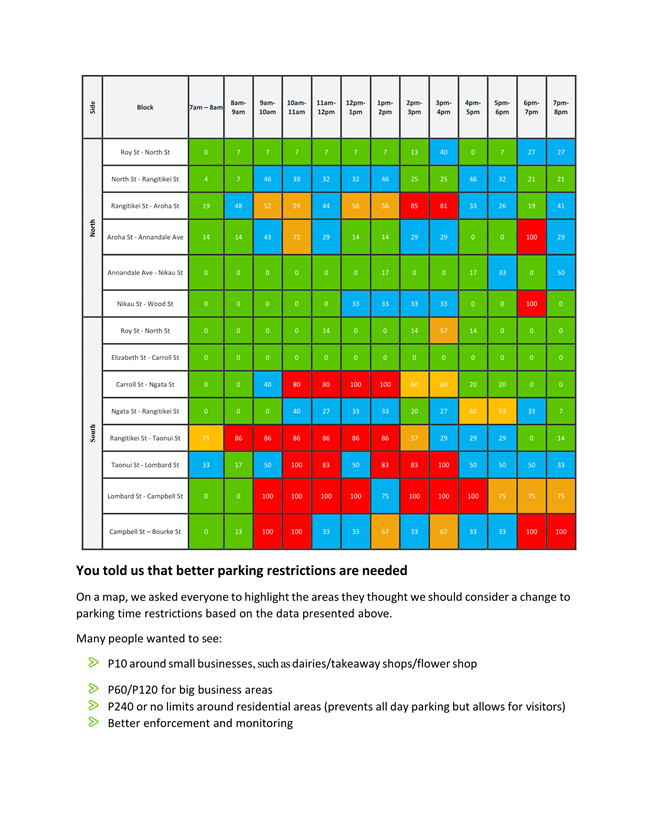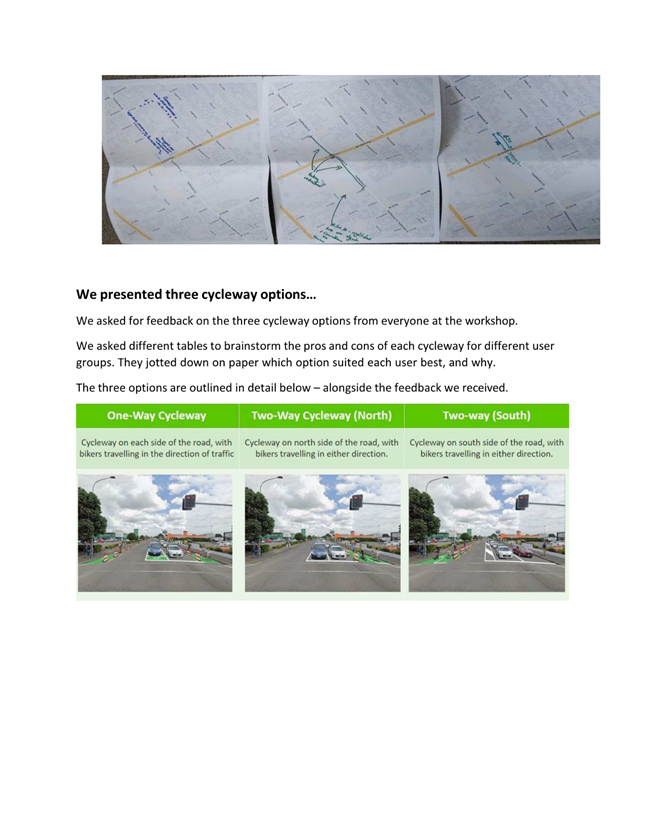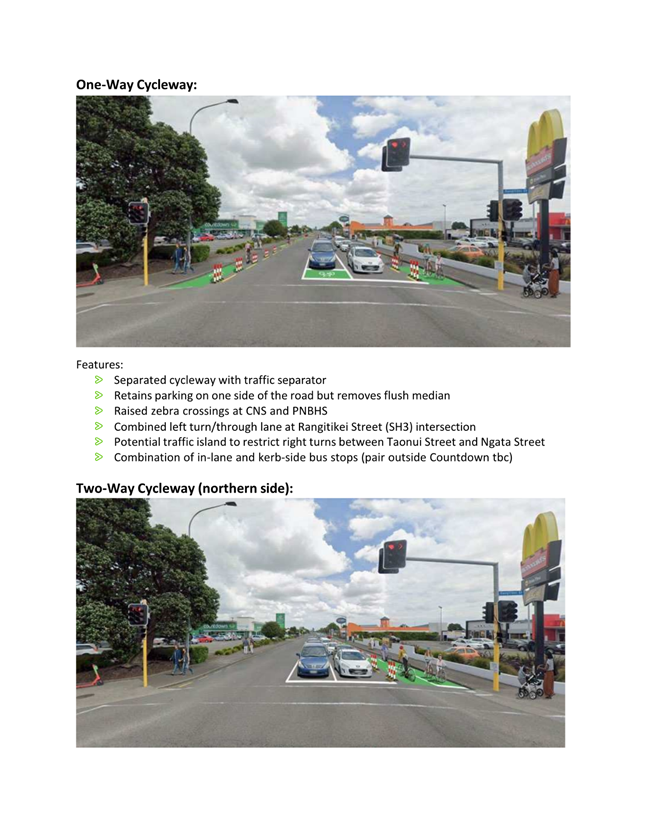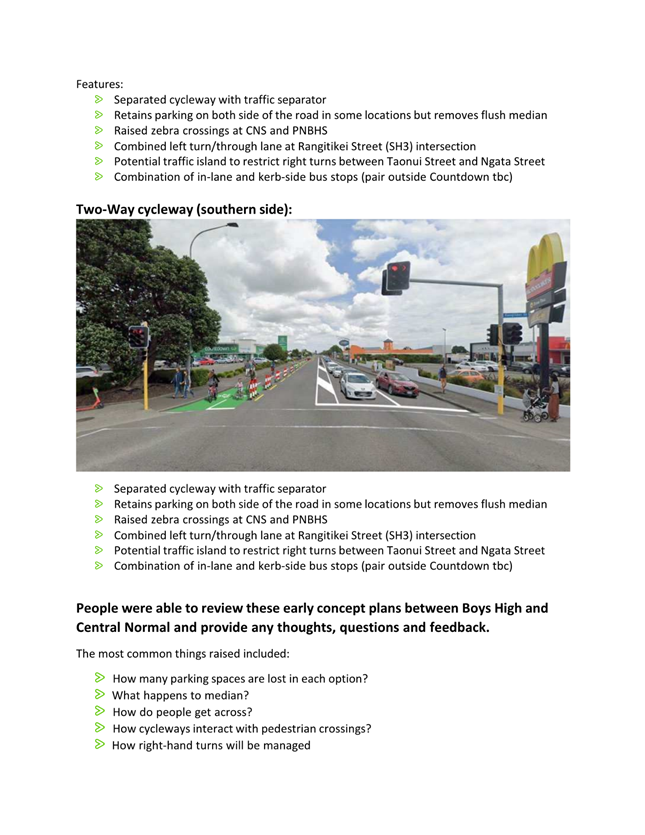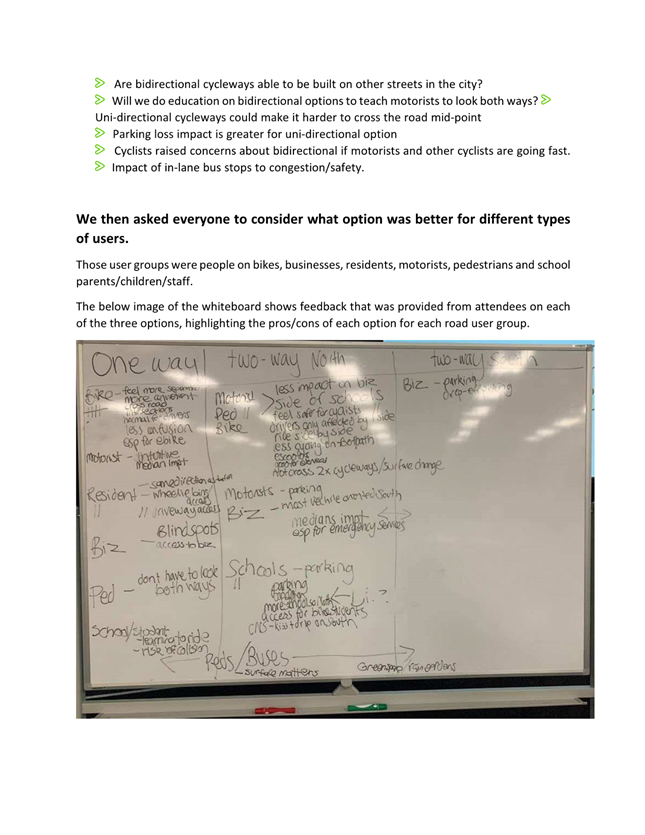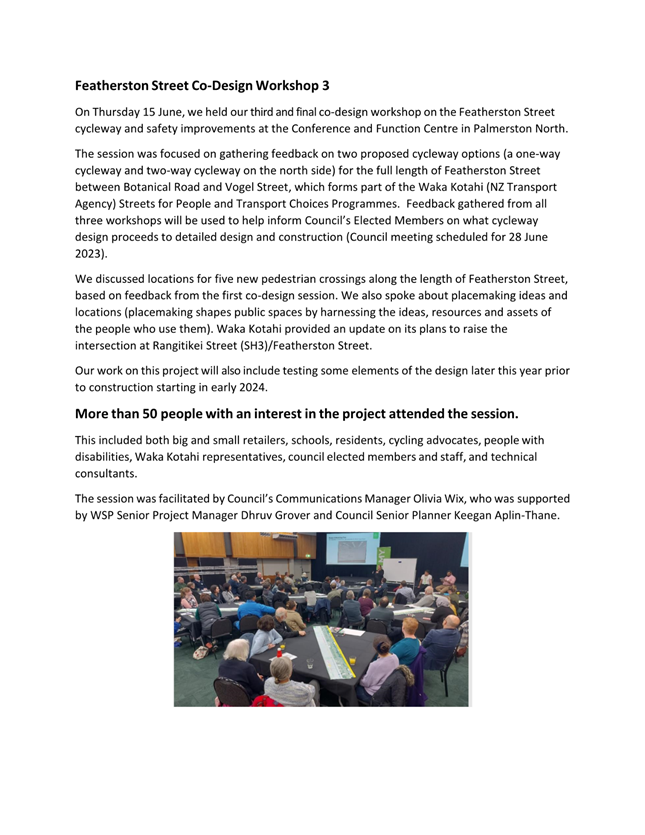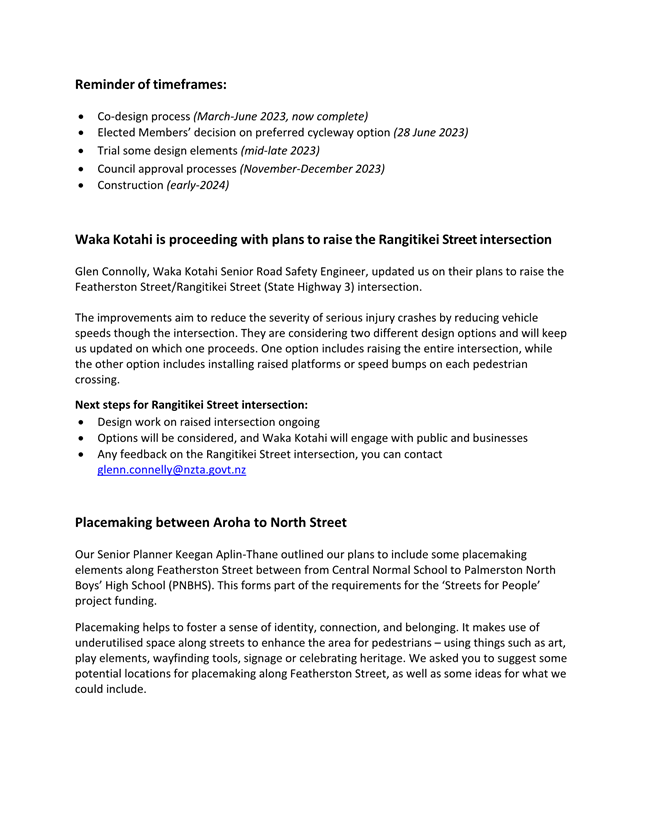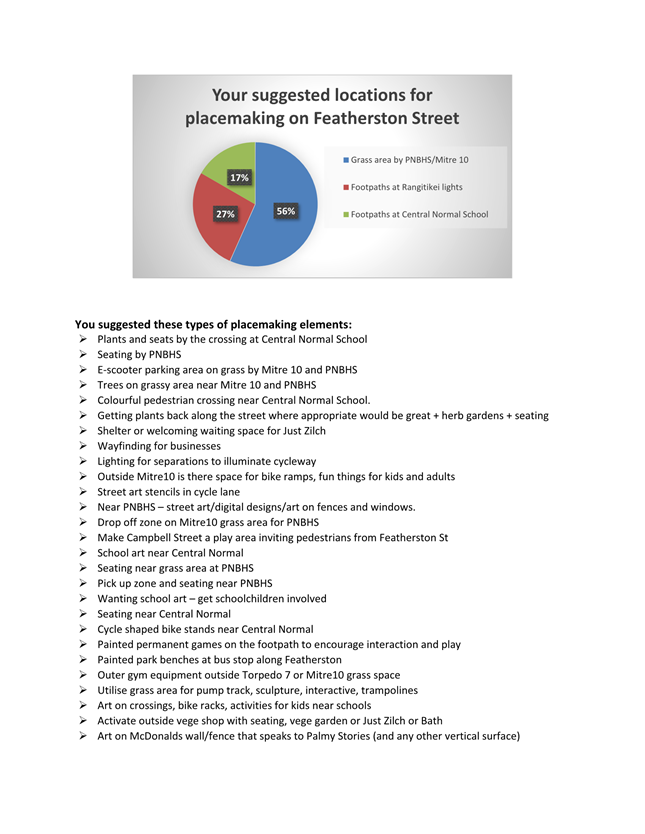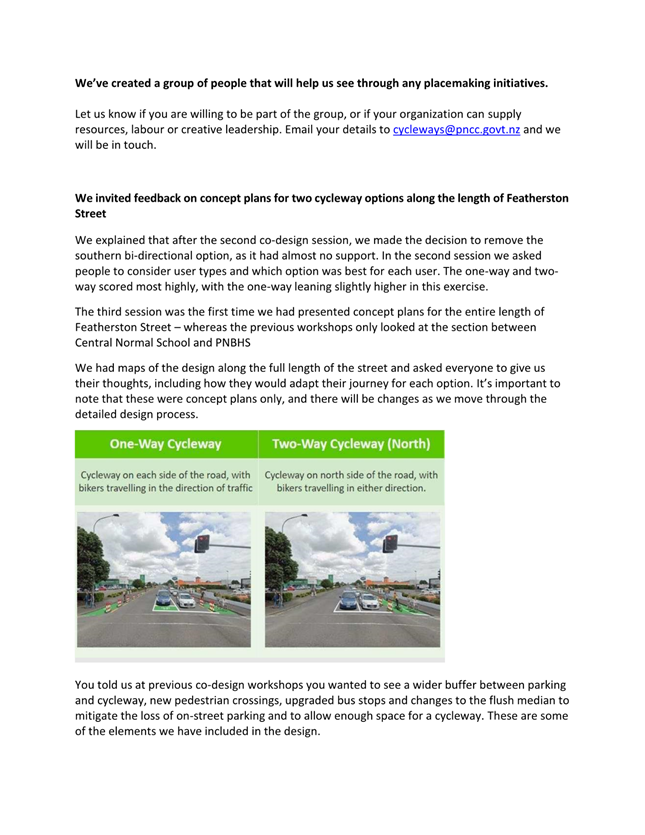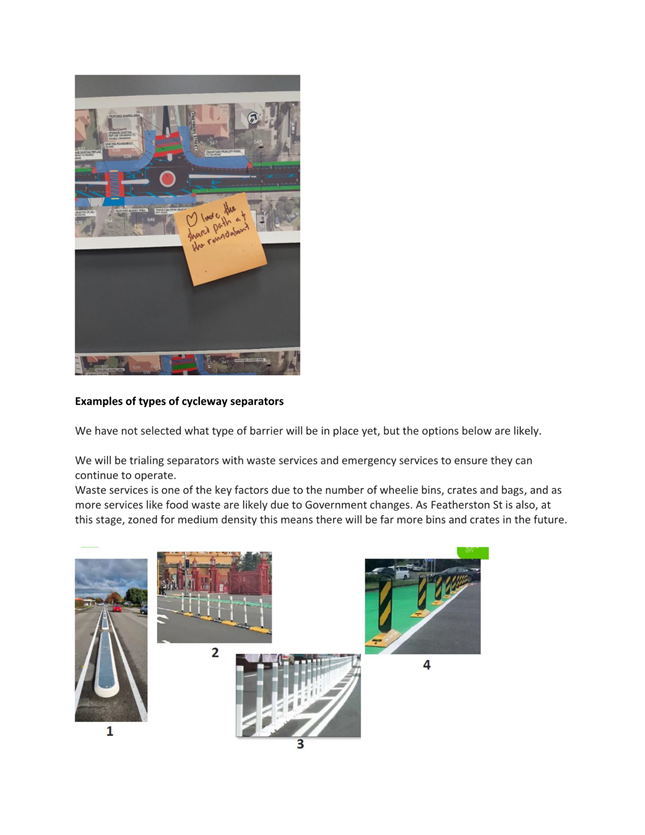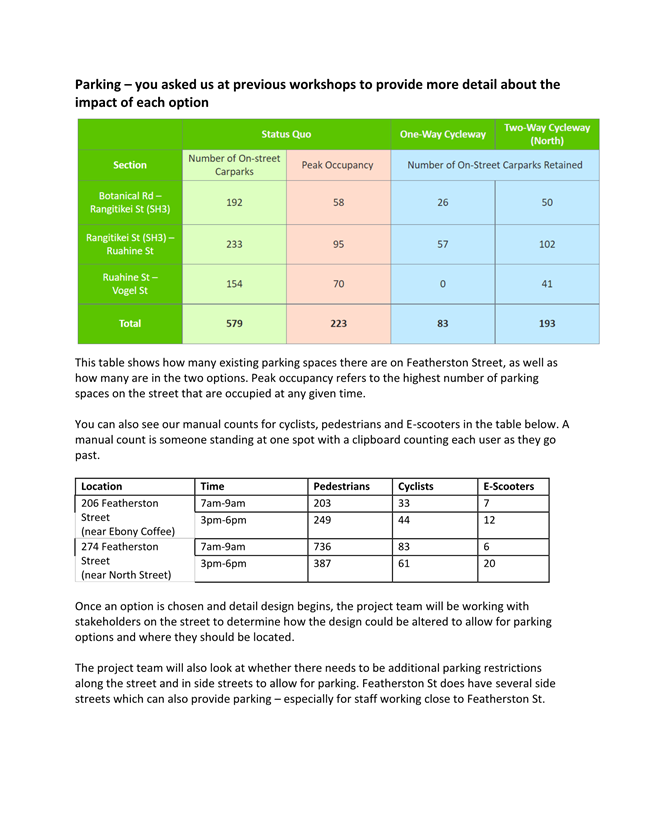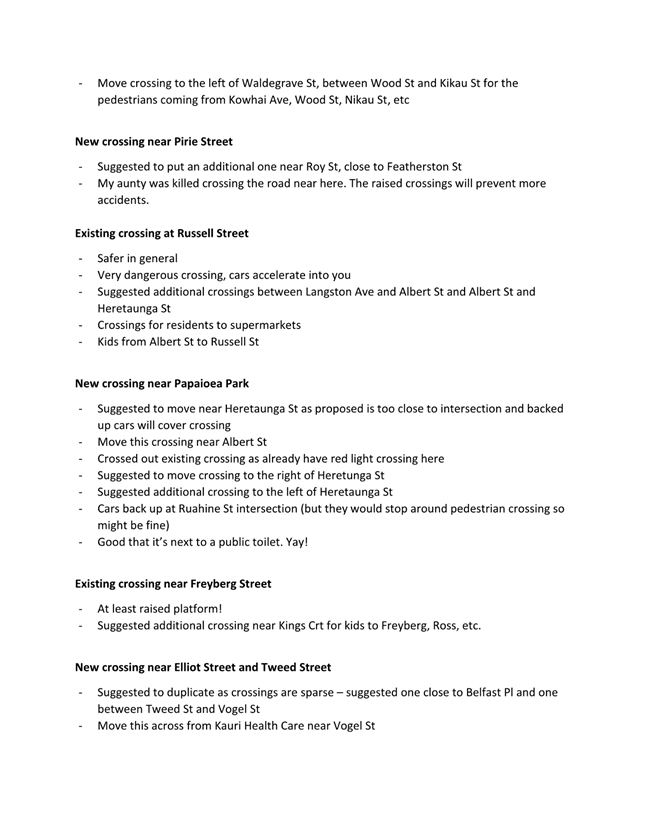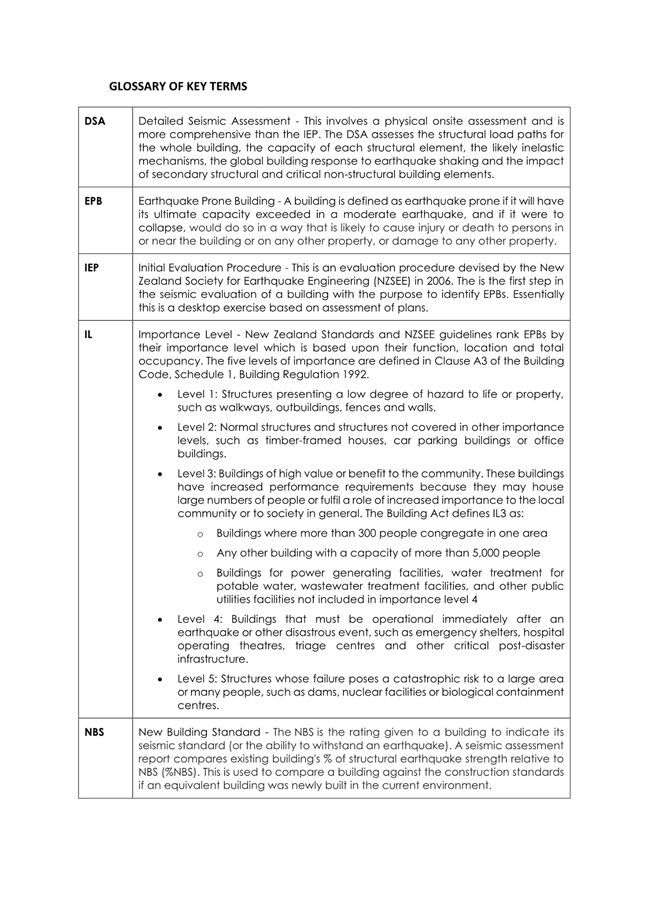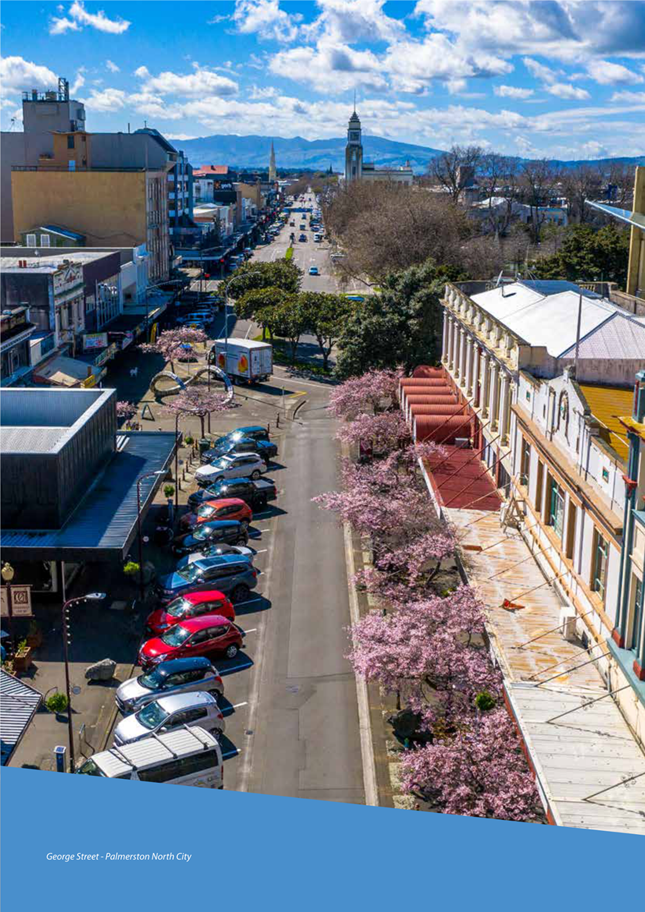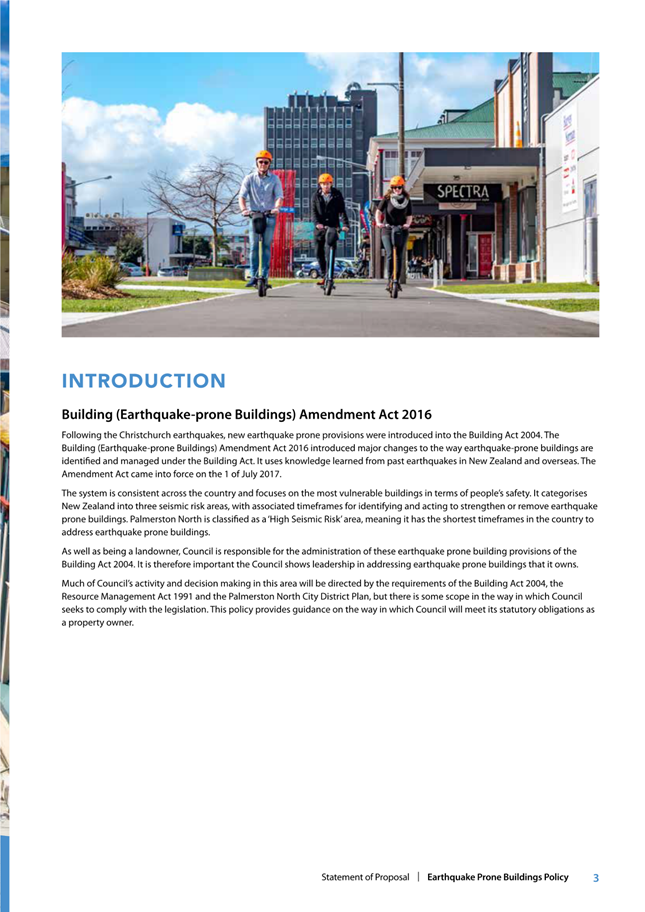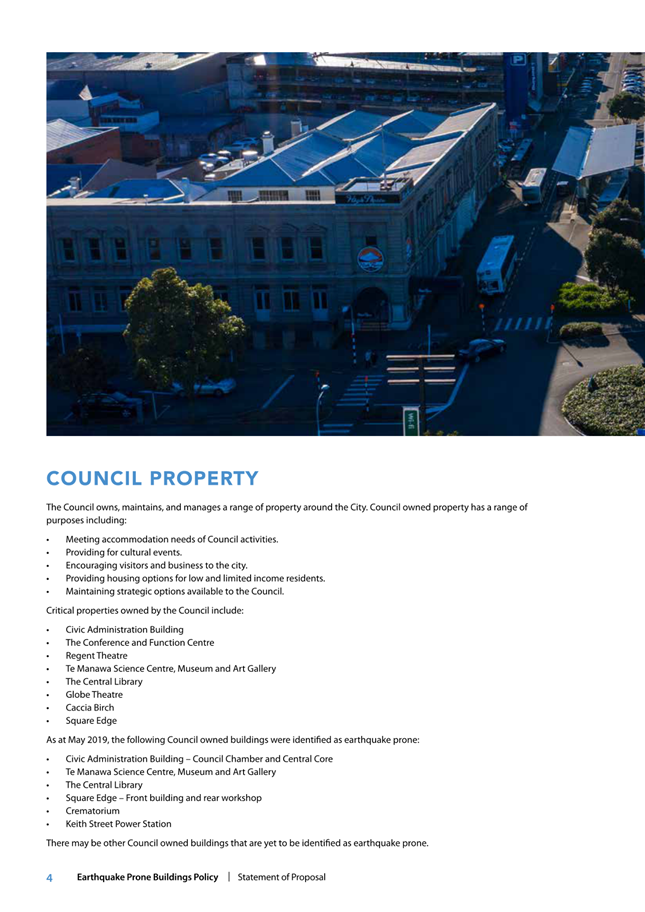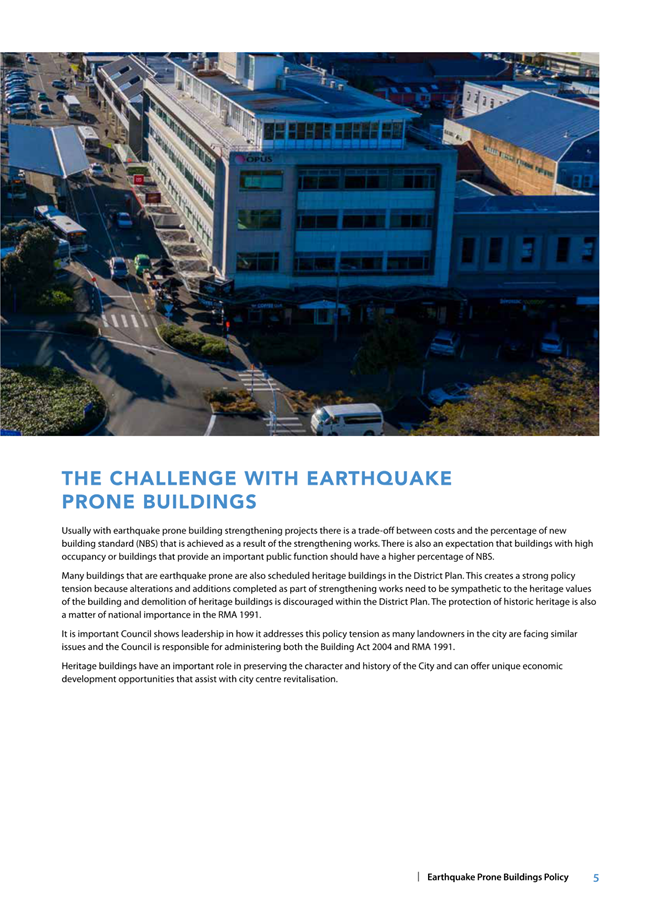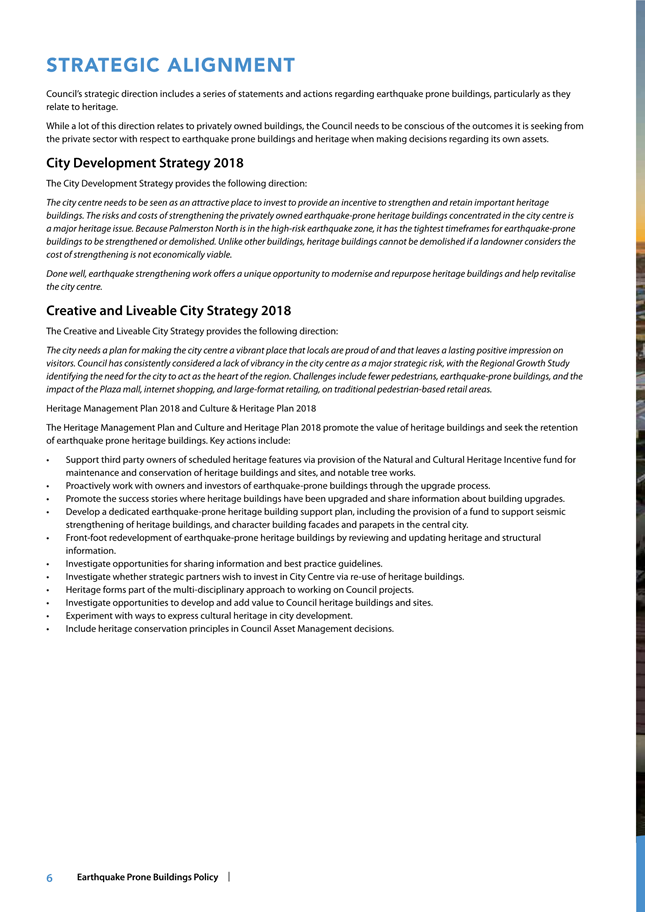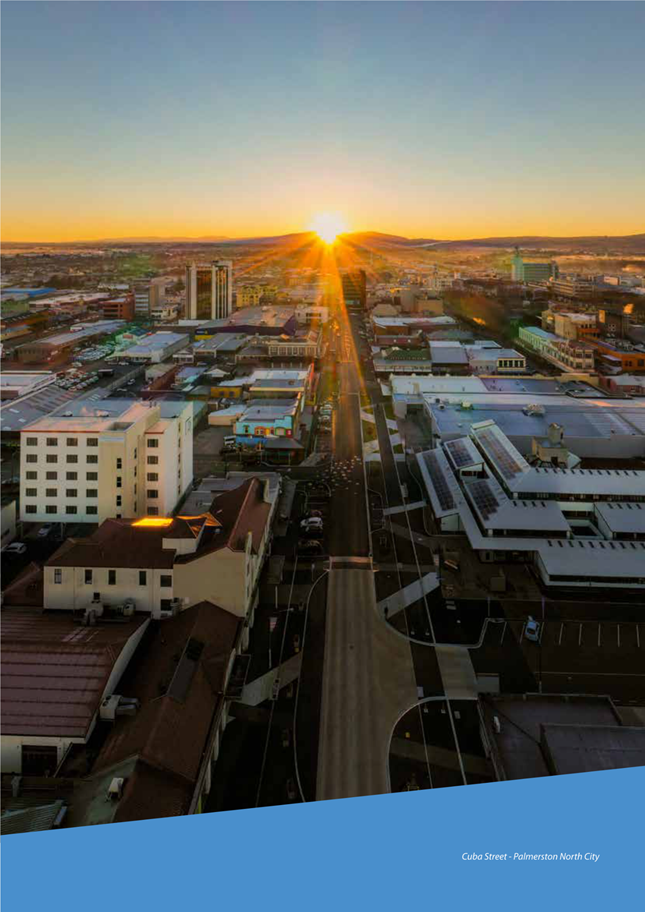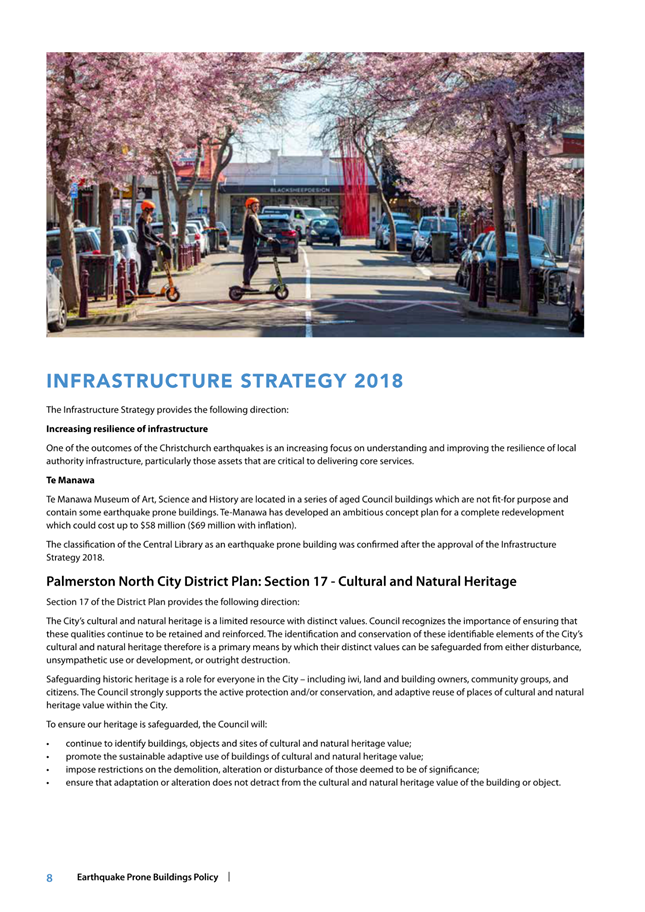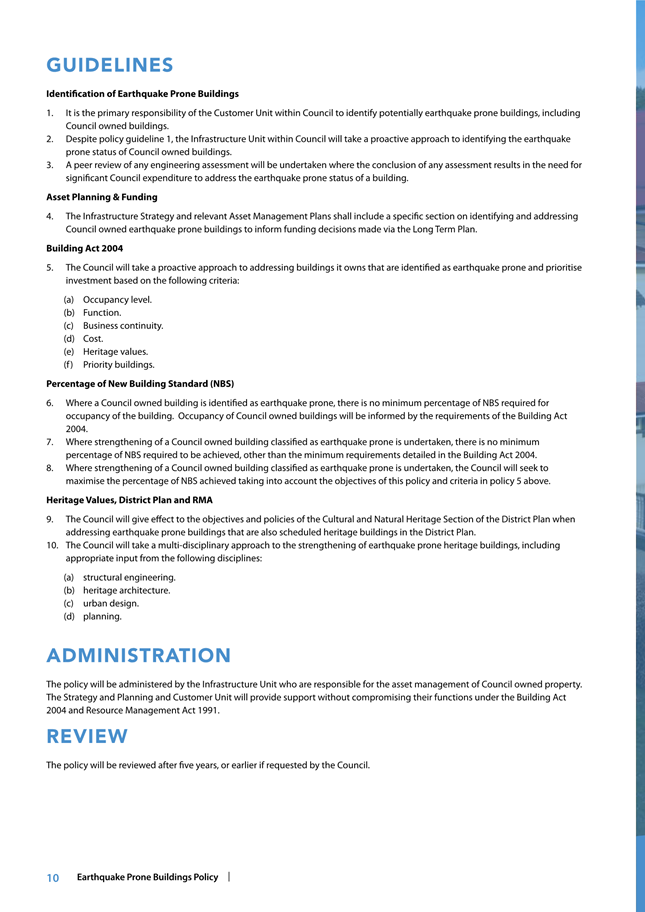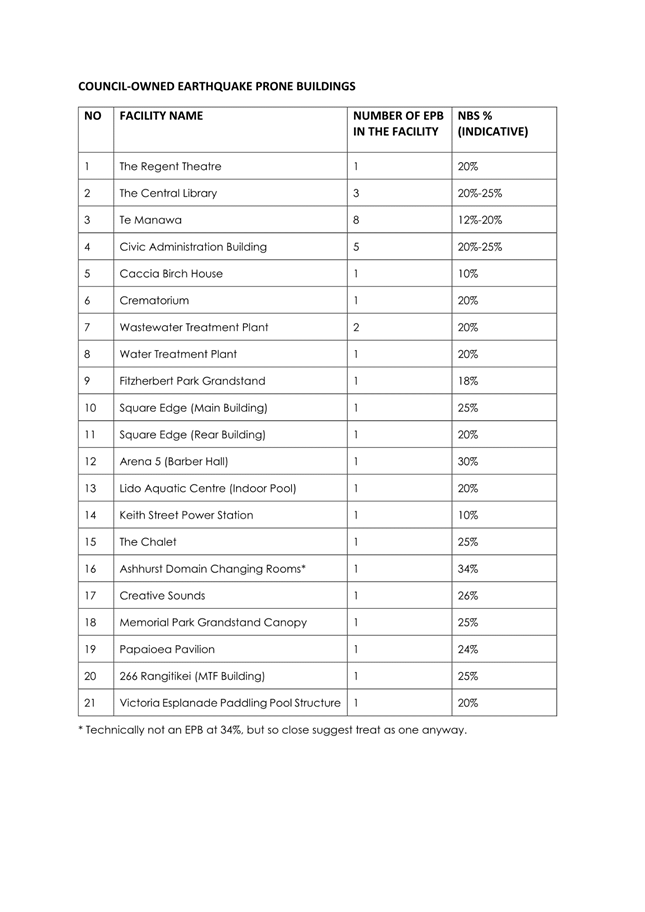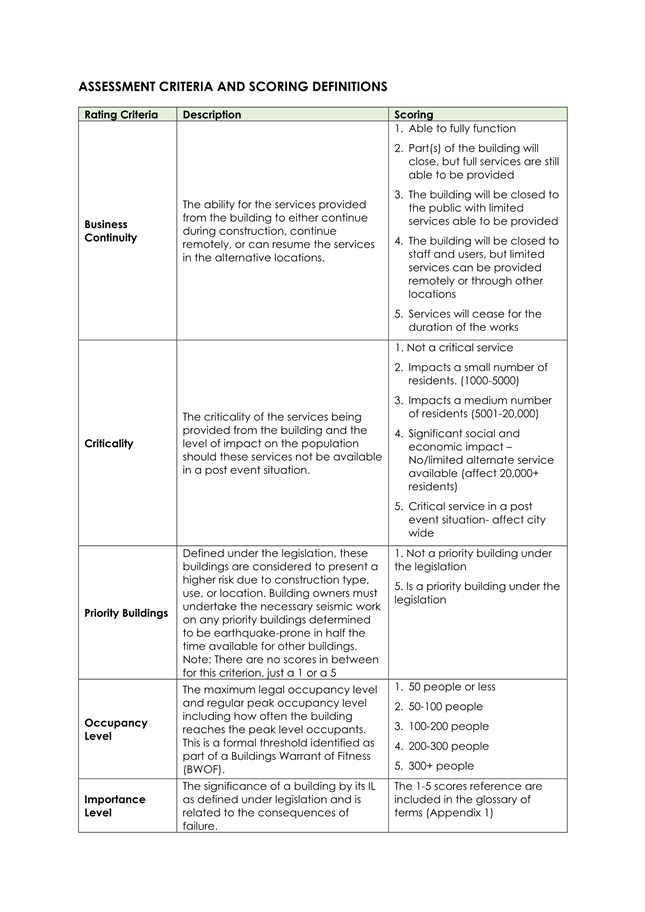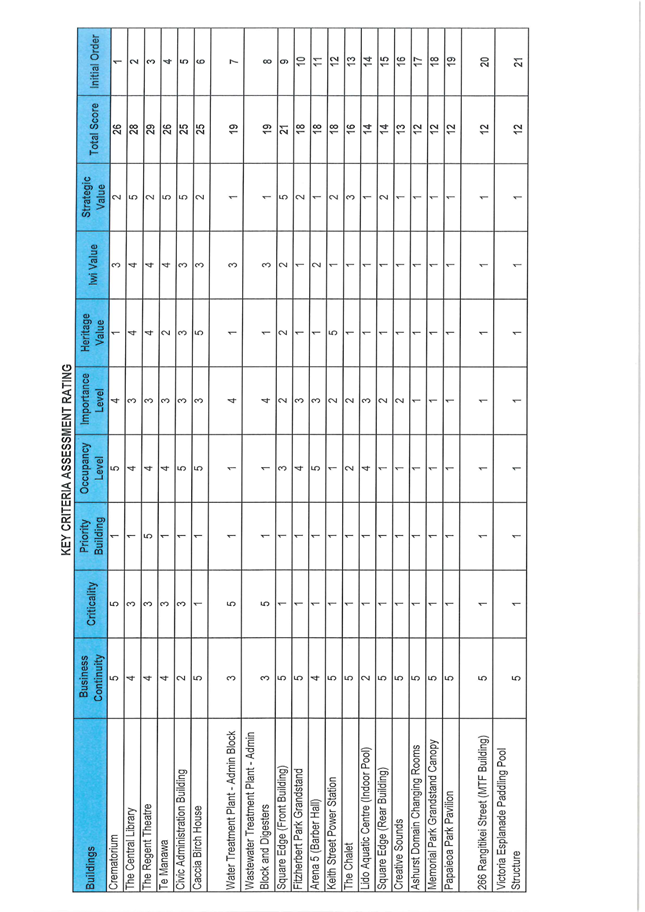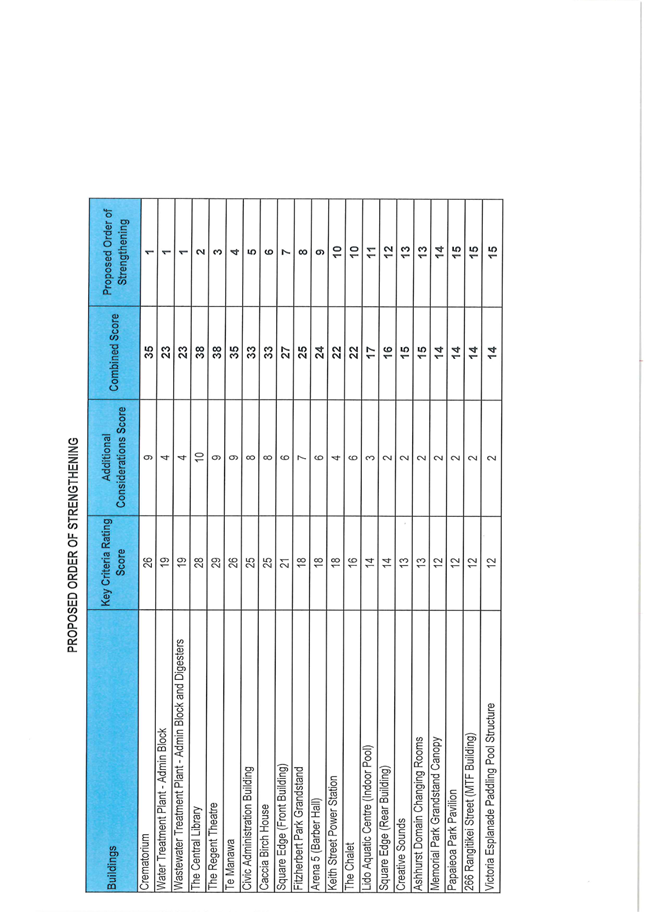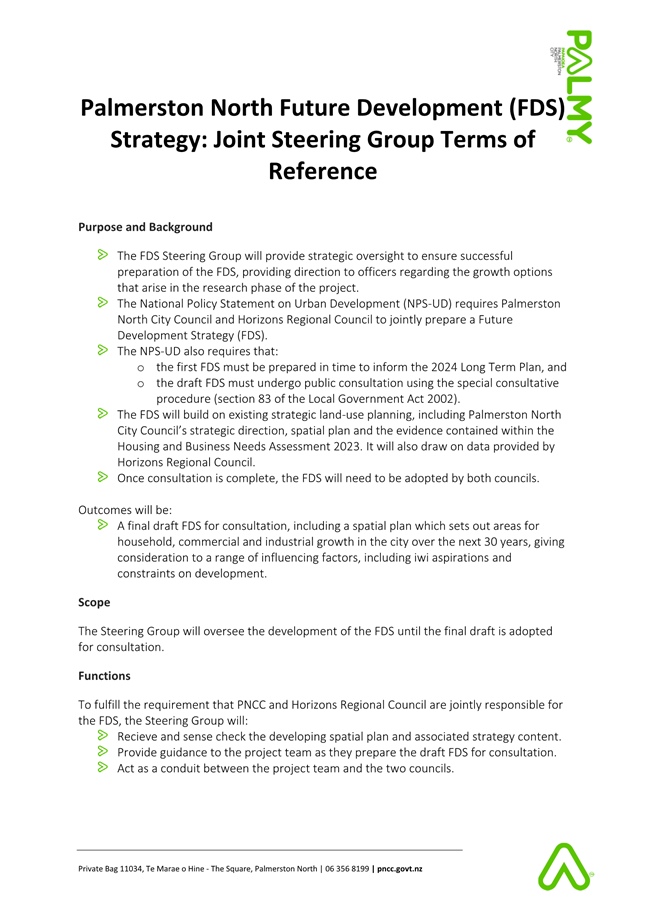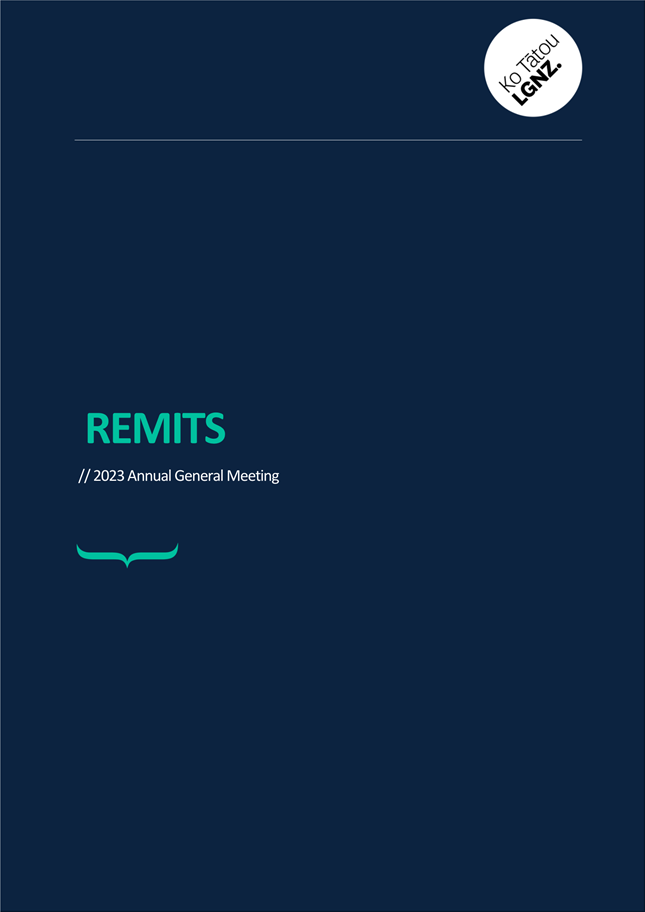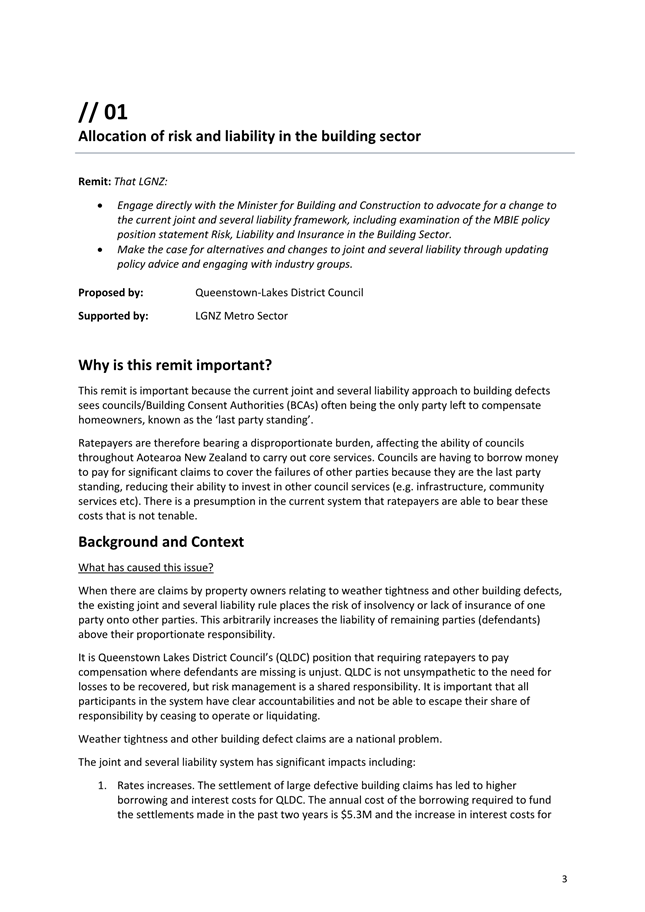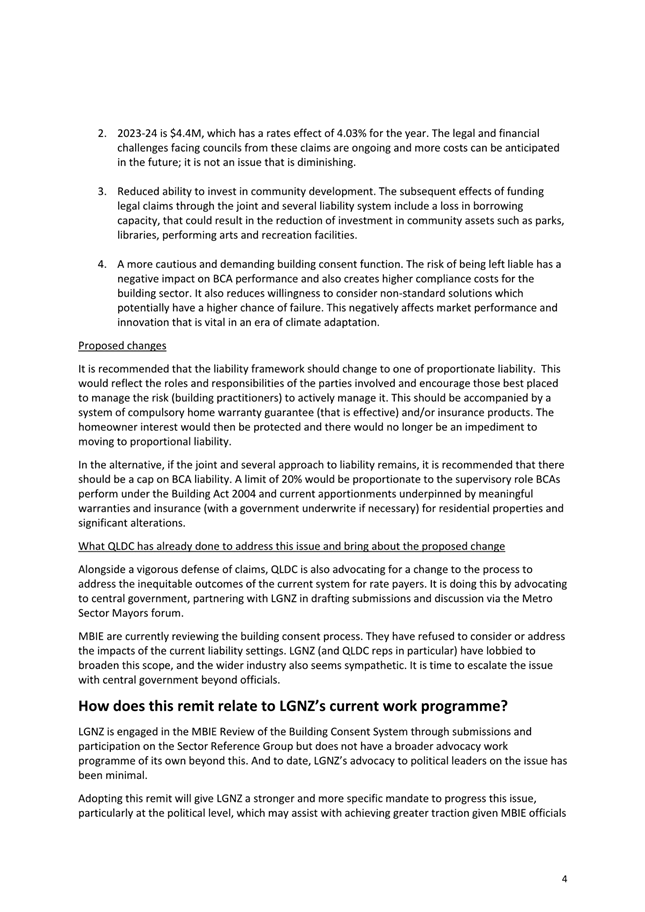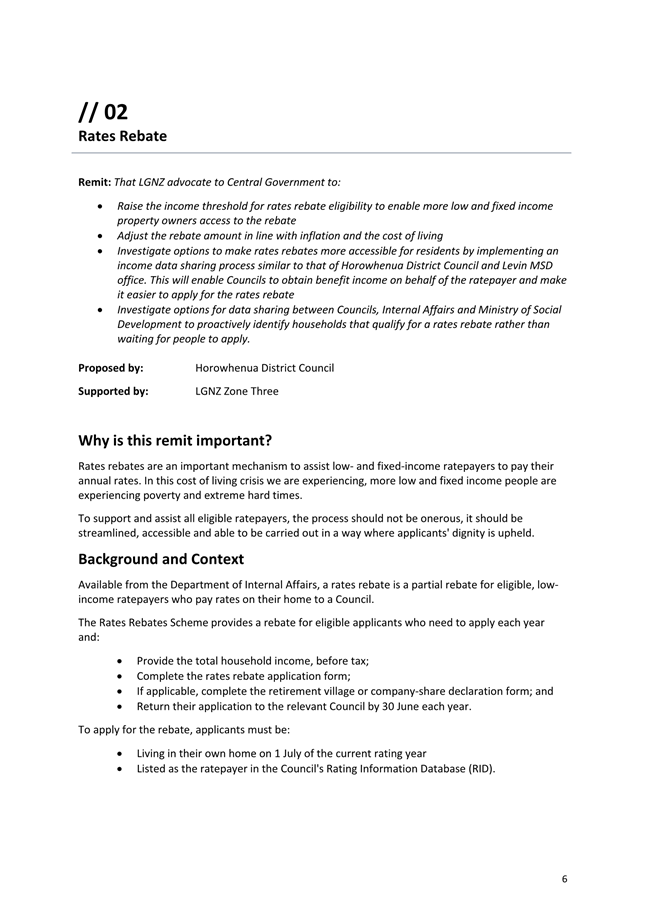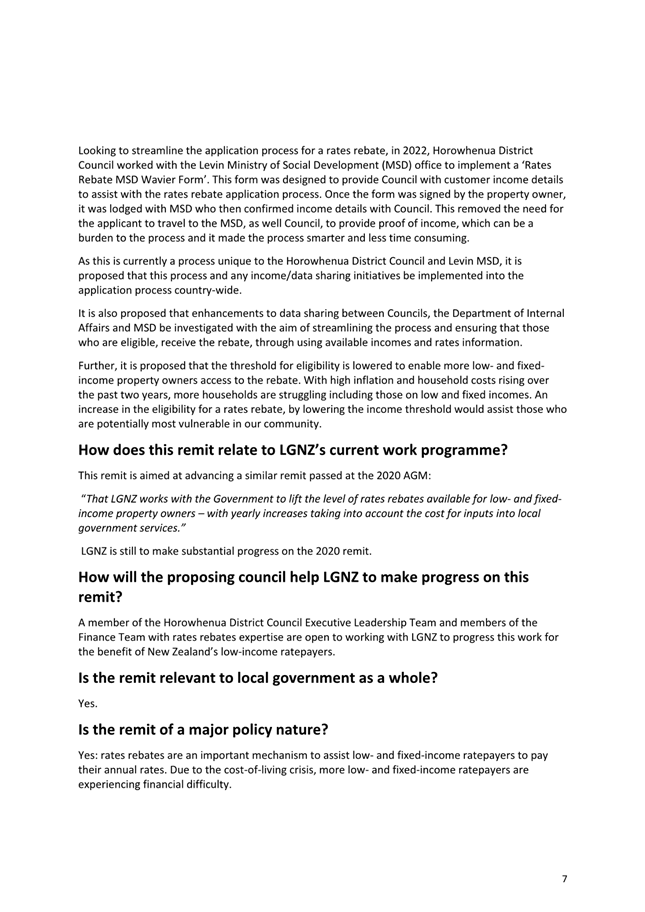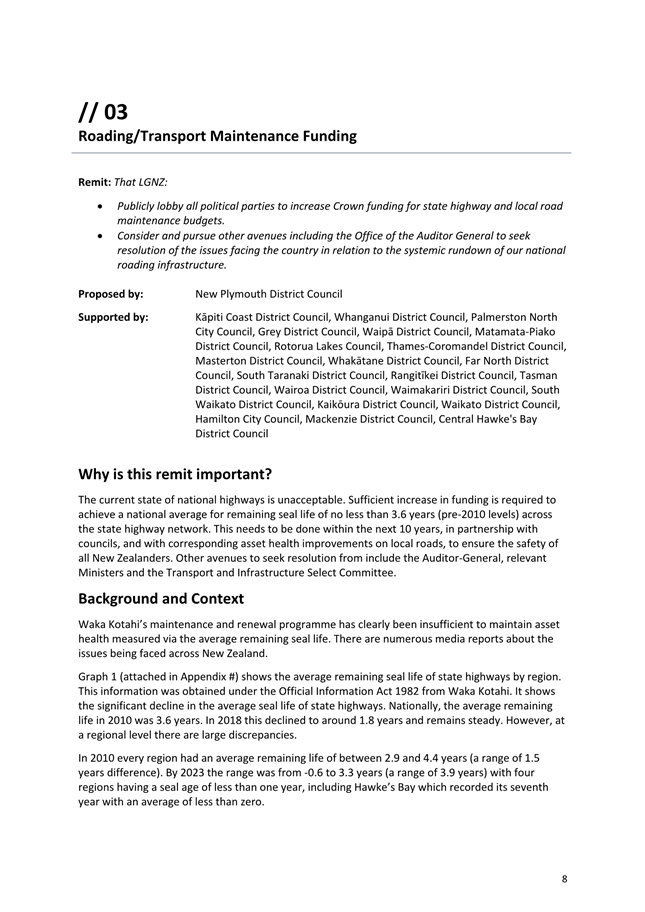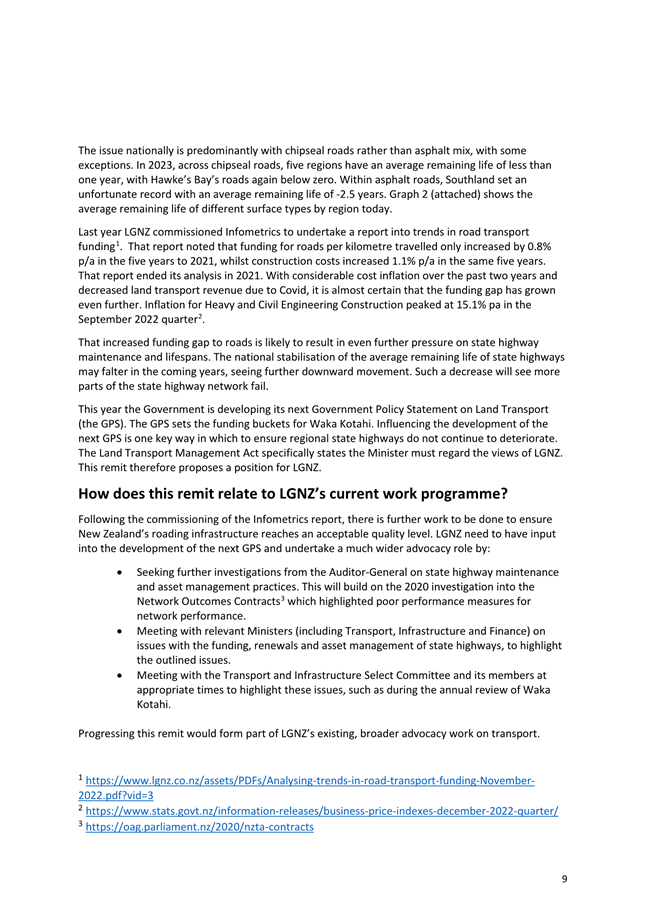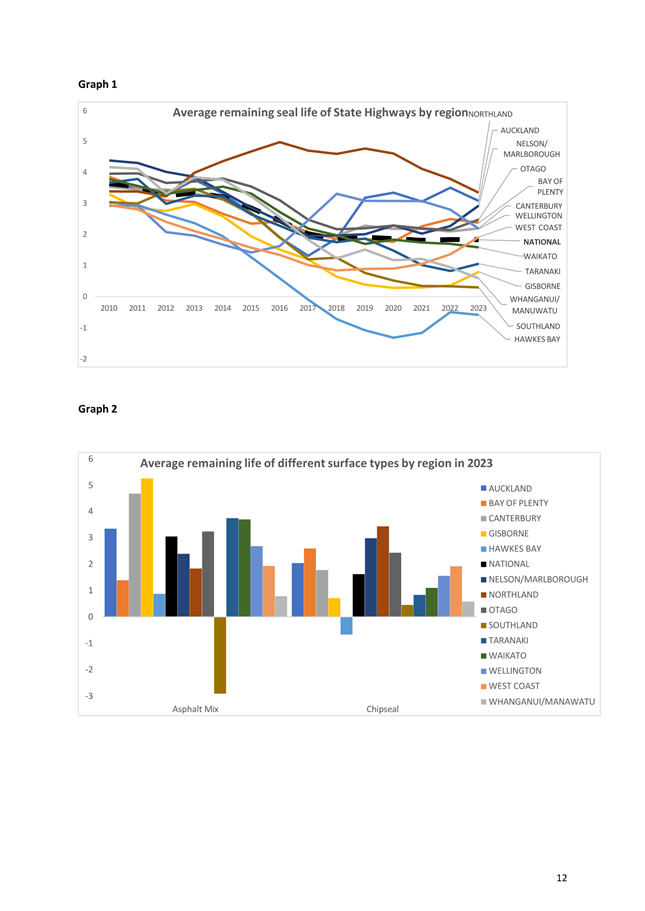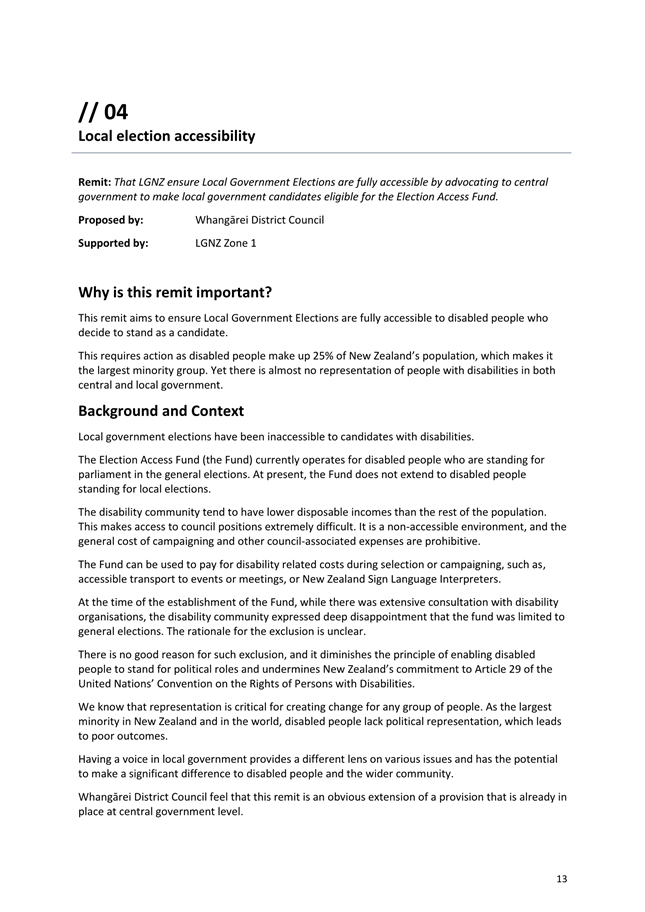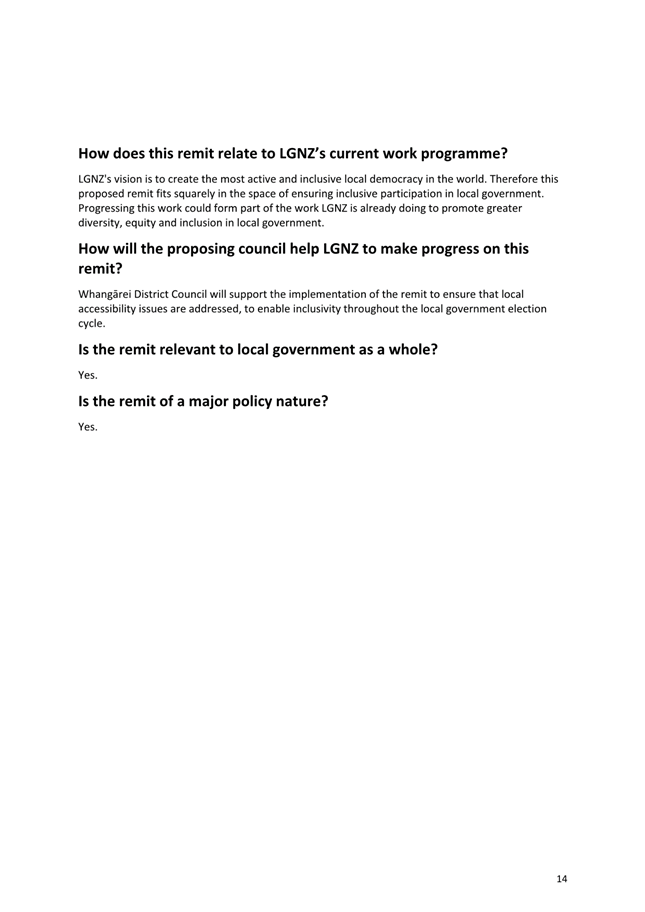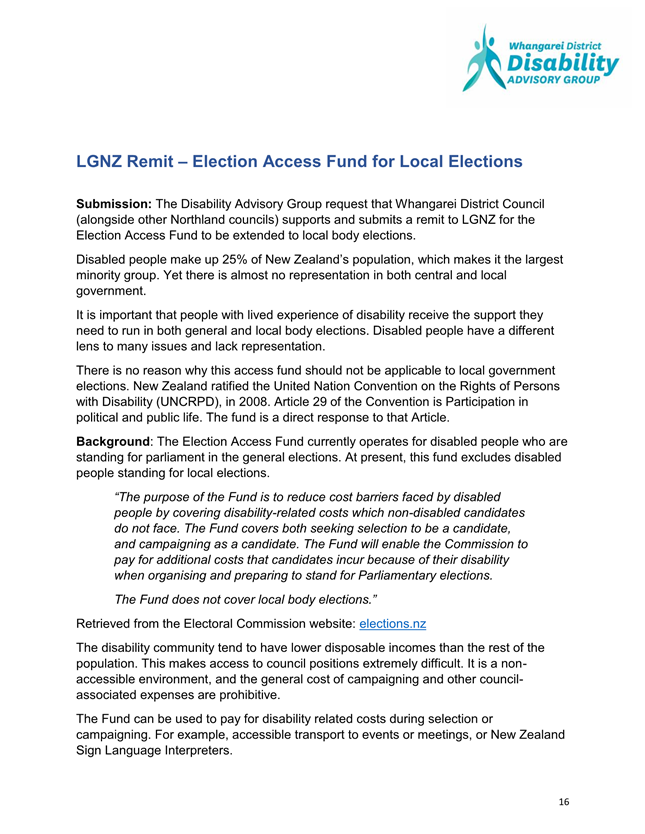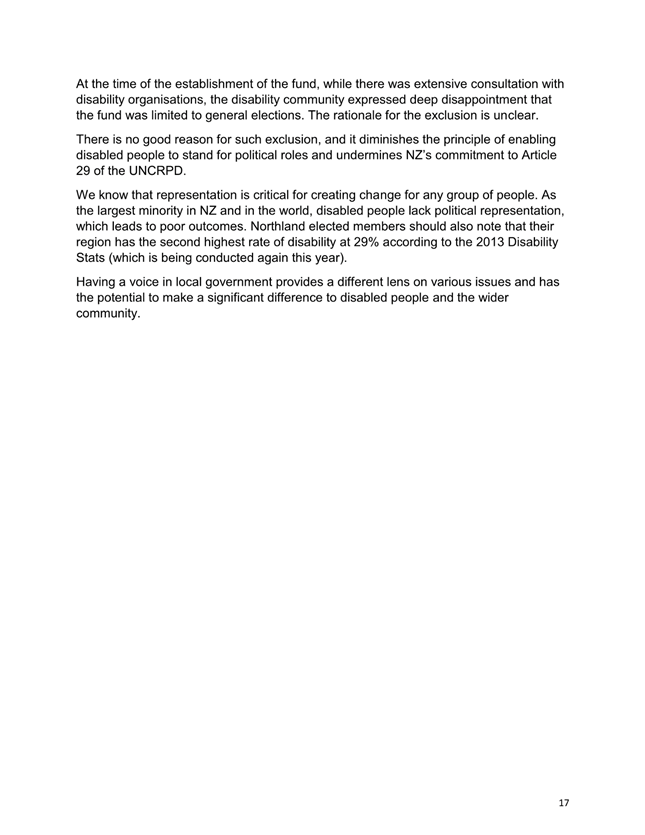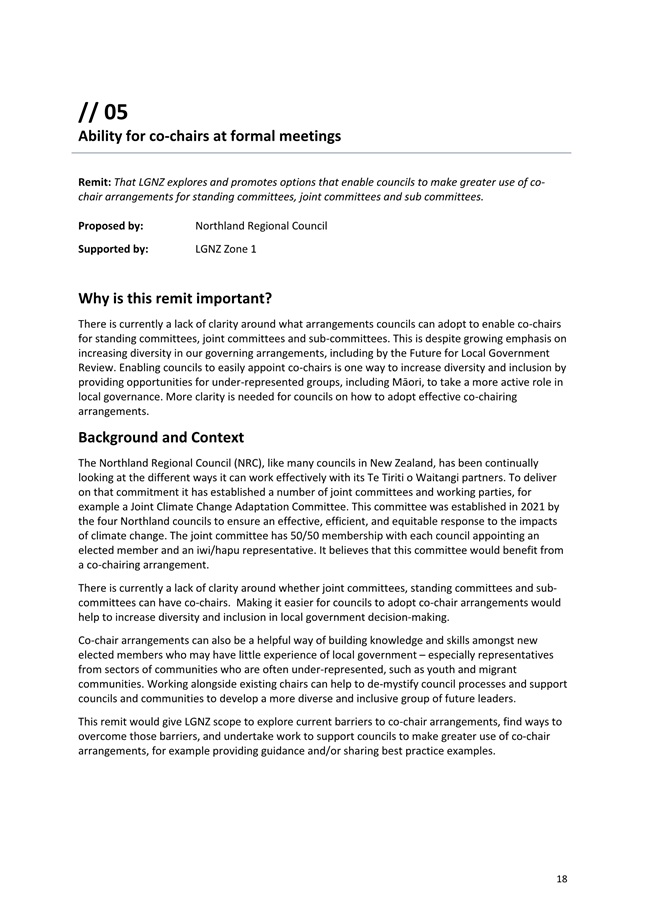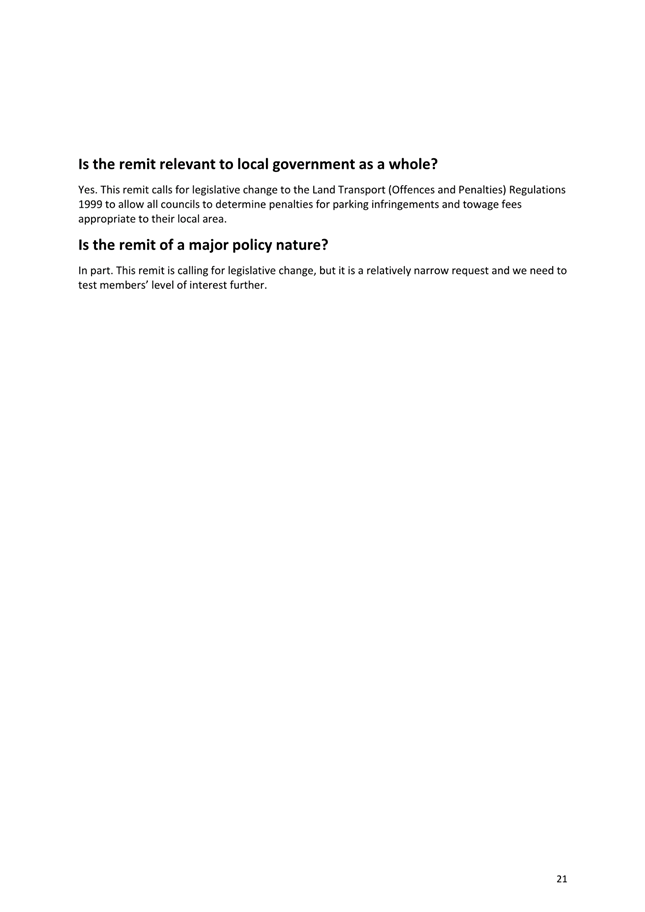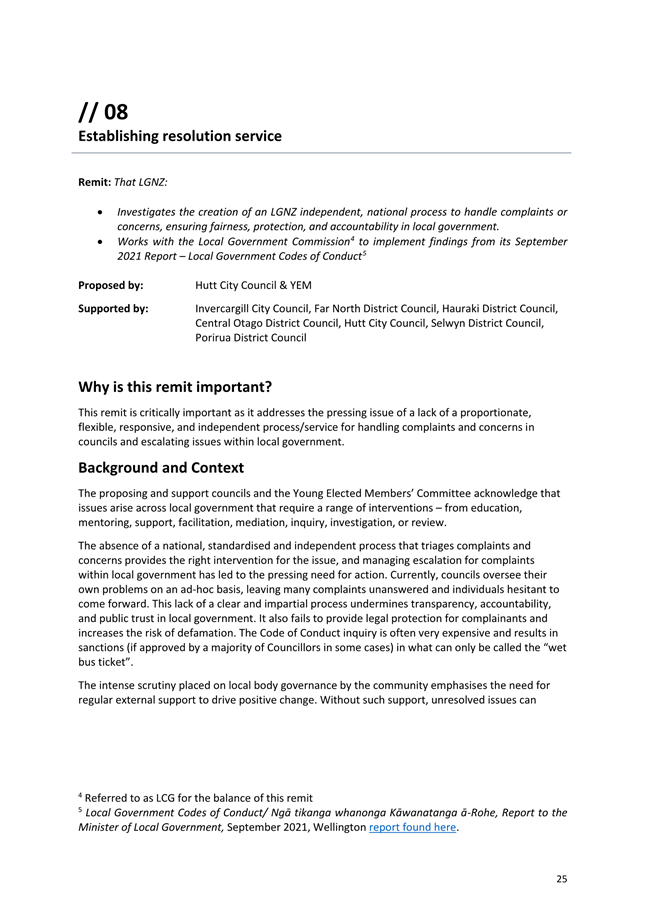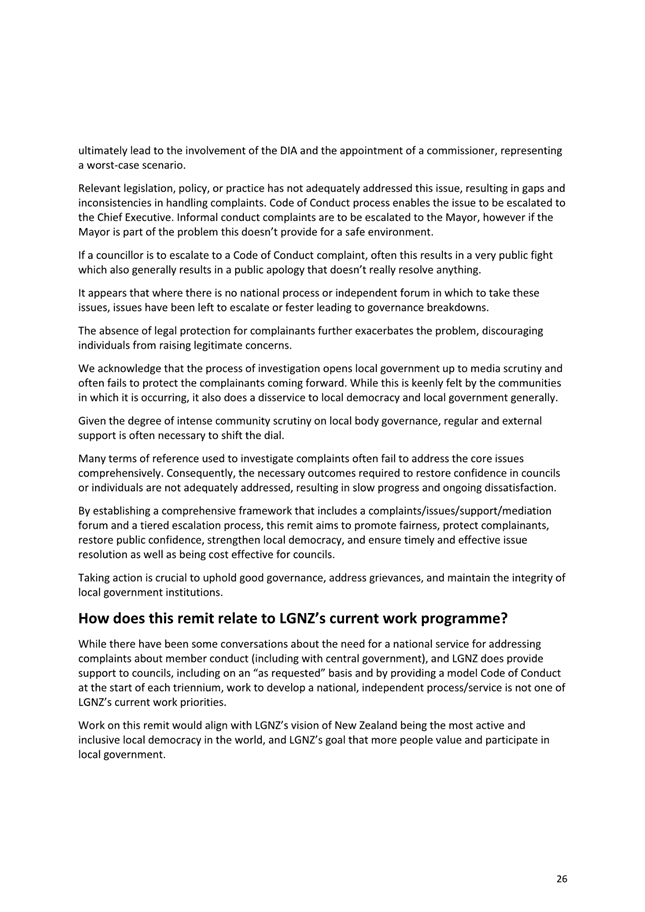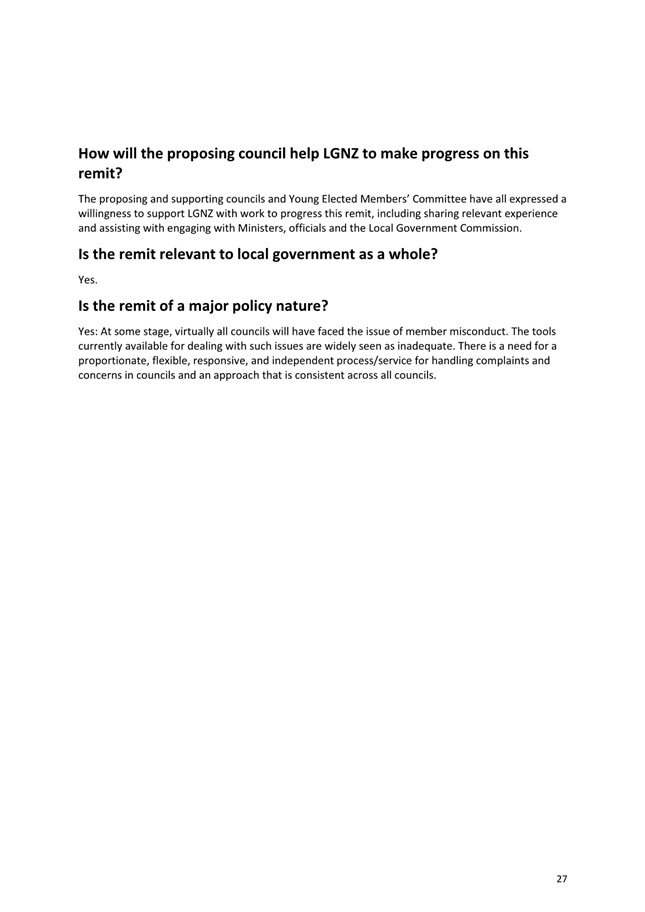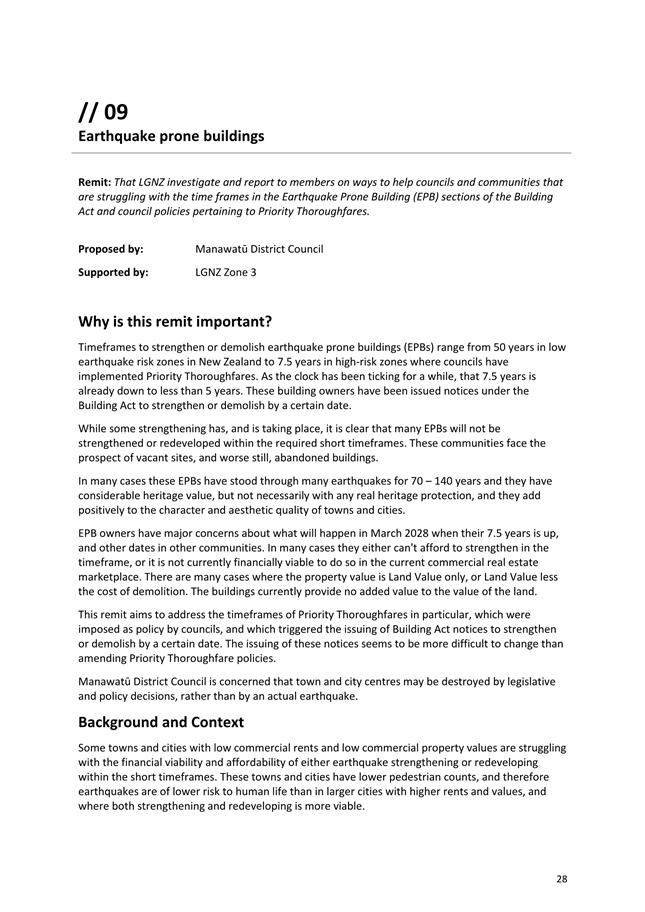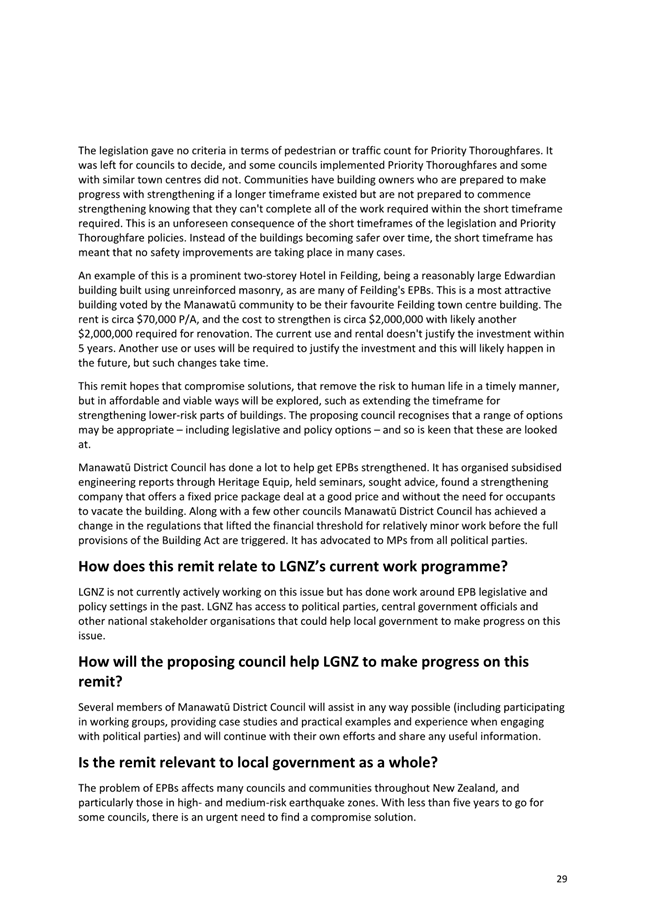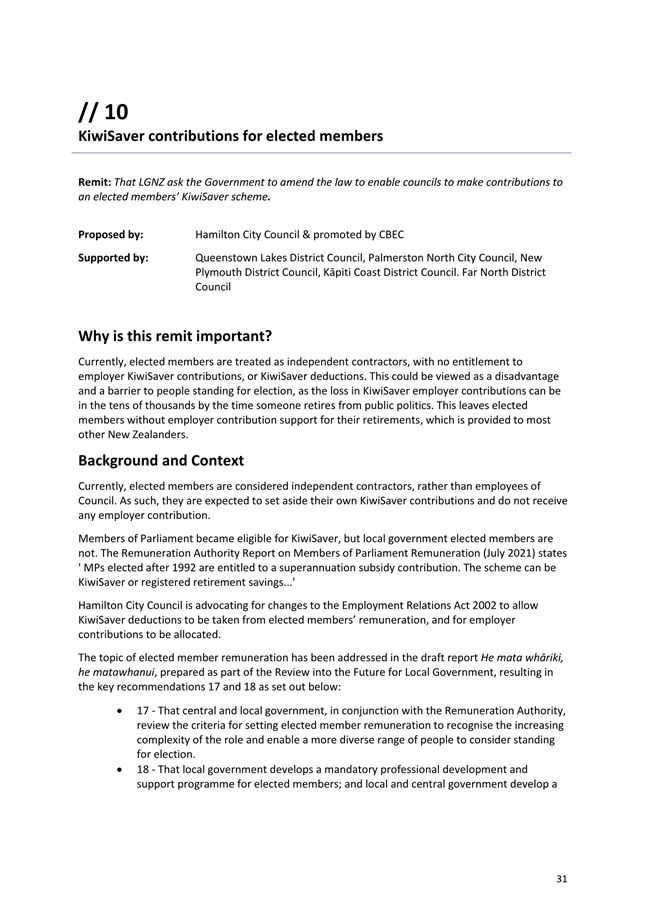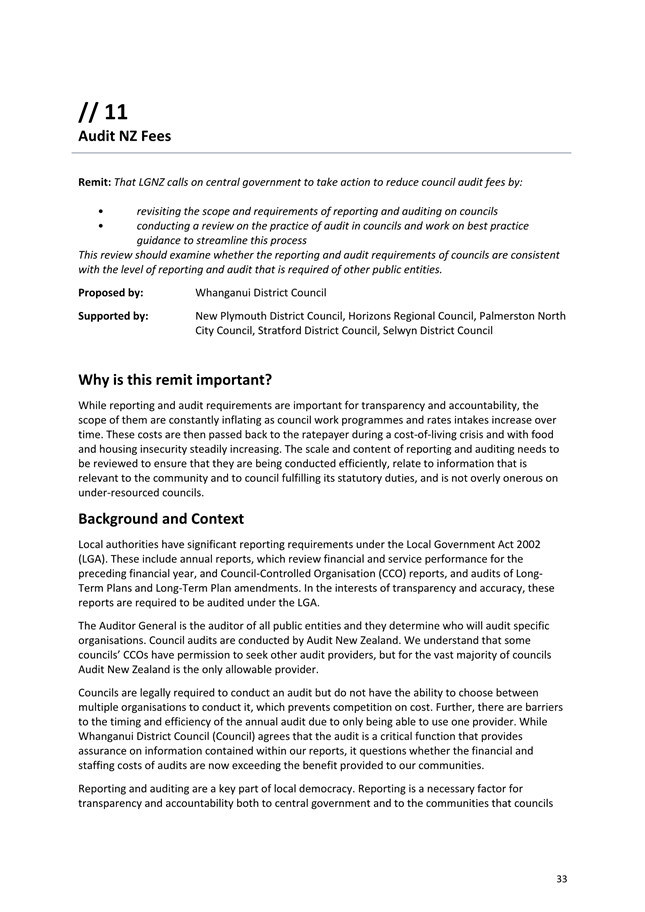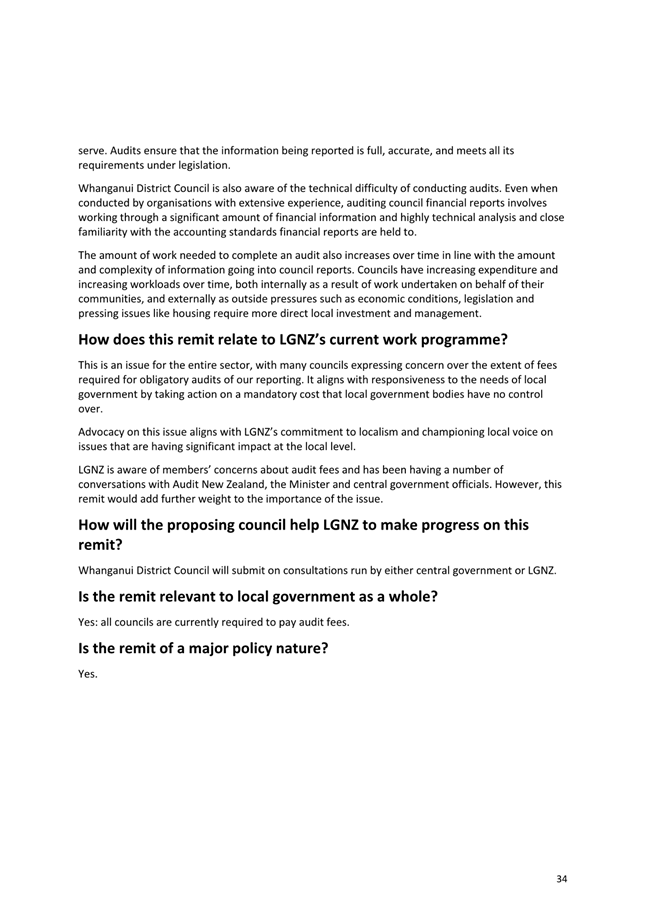|
Grant
Smith (Mayor)
|
|
Debi
Marshall-Lobb (Deputy Mayor)
|
|
Mark
Arnott
|
Leonie
Hapeta
|
|
Brent
Barrett
|
Lorna
Johnson
|
|
Rachel
Bowen
|
Billy
Meehan
|
|
Vaughan
Dennison
|
Orphée
Mickalad
|
|
Lew
Findlay (QSM)
|
Karen
Naylor
|
|
Roly
Fitzgerald
|
William
Wood
|
|
Patrick
Handcock (ONZM)
|
Kaydee
Zabelin
|
Council MEETING
28 June 2023
Order of Business
1. Karakia
Timatanga
2. Apologies
3. Notification
of Additional Items
Pursuant to Sections 46A(7) and
46A(7A) of the Local Government Official Information and Meetings Act 1987, to
receive the Chairperson’s explanation that specified item(s), which do
not appear on the Agenda of this meeting and/or the meeting to be held with the
public excluded, will be discussed.
Any additions in accordance with
Section 46A(7) must be approved by resolution with an explanation as to why
they cannot be delayed until a future meeting.
Any additions in accordance with
Section 46A(7A) may be received or referred to a subsequent meeting for further
discussion. No resolution, decision or recommendation can be made in
respect of a minor item.
4. Declarations
of Interest (if any)
Members are reminded of their duty
to give a general notice of any interest of items to be considered on this
agenda and the need to declare these interests.
5. Public
Comment
To receive comments from members of
the public on matters specified on this Agenda or, if time permits, on other
Committee matters.
(NOTE: If the Council wishes to
consider or discuss any issue raised that is not specified on the Agenda, other
than to receive the comment made or refer it to the Chief Executive, then a
resolution will need to be made.)
6. Petition:
Stop PNCC from removing car parks Page 7
7. Presentation
- King's Birthday Honours List 2023 Page 9
8. Confirmation
of Minutes Page 15
“That the minutes of the ordinary meeting of 14 June
2023 Part I Public be confirmed as a true and correct record.”
Reports
9. Summerhill
Drive Cycleway Update Page 21
Report, presented by Hamish Featonby, Group Manager -
Transport and Development.
10. Featherston Street
Cycleway Update Page 53
Report, presented by Hamish Featonby, Group Manager -
Transport and Development.
11. Civic and Cultural
Precinct Master Plan Steering Group: Terms of Reference Page 161
Memorandum, presented by David Murphy, Chief Planning
Officer.
12. Bad debt write offs Page 165
Memorandum, presented by Scott Mancer, Finance Manager.
13. Priority Order for
Council-owned Earthquake Prone Buildings Page 169
Memorandum, presented by Bryce Hosking, Group Manager -
Property and Resource Recovery.
14. Future Development
Strategy: Horizons Regional Council and Palmerston North City Council Joint
Steering Group Page 197
Memorandum, presented by Michael Duindam, Acting City
Planning Manager.
15. Review of
Remuneration for Directors of the Central Economic Development Agency (CEDA) Page 203
Memorandum, presented by Sarah Claridge, Democracy &
Governance Advisor and David Murphy, Chief Planning Officer.
16. Support of Remits
to Local Government New Zealand 2023 Annual General Meeting Page 211
Memorandum, presented by Sarah Claridge, Democracy &
Governance Advisor.
17. Invitation for the
Mayor to attend Eco Forum Global, Guiyang, China Page
249
Memorandum, presented by Gabrielle Loga, International
Relations Manager.
18. Scheduling of
additional Council Meeting Page 253
Memorandum, presented by Sarah Claridge, Democracy &
Governance Advisor.
19. Work Schedule 28
June 2023 Page 255
Recommendations from Committee Meetings
20. Presentation of the
Part I Public Strategy & Finance Committee Recommendations from its 7 June
2023 Meeting Page 259
21. Presentation of the
Part I Public Economic Growth Committee Recommendations from its 21 June 2023
Meeting Page 261
22. Exclusion
of Public
|
|
To be
moved:
“That the
public be excluded from the following parts of the proceedings of this
meeting listed in the table below.
The general
subject of each matter to be considered while the public is excluded, the
reason for passing this resolution in relation to each matter, and the
specific grounds under Section 48(1) of the Local Government Official
Information and Meetings Act 1987 for the passing of this resolution are as
follows:
|
General subject of each matter to be
considered
|
Reason for passing this resolution in
relation to each matter
|
Ground(s) under Section 48(1) for passing
this resolution
|
|
23.
|
Minutes of the ordinary meeting - Part II
Confidential - 14 June 2023
|
For the reasons set out in the ordinary minutes of
14 June 2023, held in public.
|
|
24.
|
Appointments to the Palmerston North Jaycee Trust
Assessment Committee
|
Privacy
|
s7(2)(a)
|
|
25.
|
Candidates for President and Vice-President of
Local Government New Zealand
|
Prevent Improper Gain or Advantage
|
s7(2)(j)
|
|
26.
|
Presentation of the Part II Confidential Economic
Growth Committee Recommendations from its 21 June 2023 Meeting
|
For the reasons set out in the ordinary Economic
Growth Committee minutes of 21 June 2023, held in public.
|
This
resolution is made in reliance on Section 48(1)(a) of the Local Government
Official Information and Meetings Act 1987 and the particular interest or
interests protected by Section 6 or Section 7 of that Act which would be
prejudiced by the holding of the whole or the relevant part of the
proceedings of the meeting in public as stated in the above table.
Also that the
persons listed below be permitted to remain after the public has been
excluded for the reasons stated.
[Add Third
Parties], because of their knowledge and ability to assist the
meeting in speaking to their report/s [or other matters as specified] and
answering questions, noting that such person/s will be present at the meeting
only for the items that relate to their respective report/s [or matters as
specified].
|
Petition
TO: Council
MEETING DATE: 28
June 2023
TITLE: Petition:
Stop PNCC from removing car parks
RECOMMENDATION TO Council
1. That the
Council receive the petition ‘Stop PNCC from removing car parks’
for information.
The petition ‘Stop PNCC
from removing car parks’ was received from Whitehead Chiropratic Clinic.
The petition is as follows:
‘The PNCC is going to
make both sides of Featherston Street from Botanical Road to Vogel Street cycle
lanes only as of July 2024. This will mean there is no car parking available
for patients. If you wish to stop this process please sign the below
petition’.
The petition has been signed by
149 people.
Attachments
NIL
Presentation
TO: Council
MEETING DATE: 28
June 2023
TITLE: Presentation
- King's Birthday Honours List 2023
RECOMMENDATION TO Council
1. That the
Council note that congratulations will be conveyed on behalf of the Council to
the local recipients of the King’s Birthday Honours 2023.
Attachments
|
1.
|
King's
Birthday Honours List 2023 ⇩ 
|
|


Palmerston North City Council
Minutes of
the Council Meeting Part I Public, held in the Council Chamber, First Floor,
Civic Administration Building, 32 The Square, Palmerston North on 14 June 2023,
commencing at 9.04am
|
Members
Present:
|
Grant Smith (The Mayor) (in the Chair)
and Councillors Debi Marshall-Lobb, Mark Arnott, Brent Barrett, Rachel Bowen,
Vaughan Dennison, Lew Findlay, Patrick Handcock, Leonie Hapeta, Lorna
Johnson, Billy Meehan, Orphée Mickalad, Karen Naylor and William Wood.
|
|
Apologies:
|
Councillors Roly Fitzgerald and Kaydee
Zabelin (lateness).
|
|
|
Karakia
Timatanga
Councillor
Debi Marshall-Lobb opened the meeting with karakia.
|
|
89-23
|
Apologies
|
|
|
Moved Grant Smith, seconded Debi Marshall-Lobb.
RESOLVED
1. That
Council receive the apologies.
|
|
|
Clause 89-23 above was carried 14 votes to 0, the voting being as
follows:
For:
The Mayor (Grant Smith) and
Councillors Debi Marshall-Lobb, Mark Arnott, Brent Barrett, Rachel Bowen,
Vaughan Dennison, Lew Findlay, Patrick Handcock, Leonie Hapeta, Lorna
Johnson, Billy Meehan, Orphée Mickalad, Karen Naylor and William Wood.
|
|
|
Declaration
of Interest
|
|
|
Councillor Leonie Hapeta declared an interest in Item 7
‘Fees and Charges - Confirmation Following Public Consultation’
(clause 91) and took no further part in discussion or debate on that Item.
|
|
90-23
|
Confirmation
of Minutes
|
|
|
Moved Grant Smith, seconded Debi Marshall-Lobb.
RESOLVED
1. That
the minutes of the ordinary meeting of 31 May 2023 Part I Public be confirmed
as a true and correct record.
|
|
|
Clause 90-23 above was carried 14 votes to 0, the voting being as
follows:
For:
The Mayor (Grant Smith) and
Councillors Debi Marshall-Lobb, Mark Arnott, Brent Barrett, Rachel Bowen,
Vaughan Dennison, Lew Findlay, Patrick Handcock, Leonie Hapeta, Lorna
Johnson, Billy Meehan, Orphée Mickalad, Karen Naylor and William Wood.
|
Reports
|
91-23
|
Fees
and Charges - Confirmation Following Public Consultation
Memorandum, presented by
Steve Paterson, Strategy Manager - Finance.
|
|
|
Moved
Grant Smith, seconded Debi Marshall-Lobb.
RESOLVED
1. That Council approve the fees and charges for
Planning & Miscellaneous Services, as scheduled in Attachments A and B,
effective from 1 July 2023.
2. That Council approve the fees and charges for
Trade Waste Services, as scheduled in Attachment C, effective from 1 July
2023.
|
|
|
Clause 91-23 above was
carried 13 votes to 0, the voting being as follows:
For:
The Mayor (Grant Smith) and
Councillors Debi Marshall-Lobb, Mark Arnott, Brent Barrett, Rachel Bowen,
Vaughan Dennison, Lew Findlay, Patrick Handcock, Lorna Johnson, Billy Meehan,
Orphée Mickalad, Karen Naylor and William Wood.
Note:
Councillor Leonie Hapeta
declared an interest, withdrew from the discussion and sat in the gallery.
|
|
92-23
|
2023/24
Annual Budget - Adoption
Memorandum, presented by Cameron
McKay, Chief Financial Officer, and Steve Paterson, Strategy Manager -
Finance.
|
|
|
Moved
Grant Smith, seconded Debi Marshall-Lobb.
RESOLVED
1. That Council adopt the Annual Budget (Plan) for 2023/24
as attached.
|
|
|
Clause 92.1-23 above was
carried 13 votes to 1, the voting being as follows:
For:
The Mayor (Grant Smith) and
Councillors Debi Marshall-Lobb, Mark Arnott, Brent Barrett, Rachel Bowen,
Vaughan Dennison, Lew Findlay, Patrick Handcock, Leonie Hapeta, Lorna
Johnson, Billy Meehan, Orphée Mickalad and William Wood.
Against:
Councillor Karen Naylor.
|
|
|
Moved
Grant Smith, seconded Debi Marshall-Lobb.
2. That Council delegate authority to the Mayor and
Chief Executive to approve minor amendments to the final Annual Budget (Plan)
2023/24 for publication.
3. That Council confirm the adoption of the Annual
Budget (Plan) 2023/24 is a significant decision within the parameters of the
Local Government Act 2002 and that Council is satisfied that all submissions
have been considered and that there has been compliance with the
decision-making and consultation requirements of the Act.
4. That Council delegate authority to the Chief
Executive to authorise payments to Council Controlled Organisations and other
external organisations in accordance with their respective service level
agreements.
|
|
|
Clause 92.2-23 to 92.4-23 above
was carried 14 votes to 0, the voting being as follows:
For:
The Mayor (Grant Smith) and
Councillors Debi Marshall-Lobb, Mark Arnott, Brent Barrett, Rachel Bowen,
Vaughan Dennison, Lew Findlay, Patrick Handcock, Leonie Hapeta, Lorna
Johnson, Billy Meehan, Orphée Mickalad, Karen Naylor and William Wood.
|
|
93-23
|
Setting
Rates for 2023/24
Memorandum, presented by
Steve Paterson, Strategy Manager - Finance.
|
|
|
Moved
Grant Smith, seconded Debi Marshall-Lobb.
RESOLVED
1. That Council
adopt the resolution to set the rates for the 2023/24 year (Appendix One).
2. That Council
note that the setting of rates is a significant decision within the
parameters of the Local Government Act 2002 and that it is satisfied there
has been compliance with the decision-making and consultation requirements of
the Act.
|
|
|
Clause 93-23 above was
carried 13 votes to 1, the voting being as follows:
For:
The Mayor (Grant Smith) and
Councillors Debi Marshall-Lobb, Mark Arnott, Rachel Bowen, Vaughan Dennison,
Lew Findlay, Patrick Handcock, Leonie Hapeta, Lorna Johnson, Billy Meehan,
Orphée Mickalad, Karen Naylor and William Wood.
Against:
Councillor Brent Barrett.
|
The meeting adjourned at
10.20am.
The meeting resumed at
10.42am.
|
94-23
|
Resolutions
to Authorise Borrowing
Memorandum, presented by
Steve Paterson, Strategy Manager - Finance.
|
|
|
Moved
Grant Smith, seconded Debi Marshall-Lobb.
RESOLVED
1. That Council
authorise the Chief Executive to borrow, in accordance with delegated
authority, up to $37 million (“the Borrowing”) of additional term
debt by way of bank loan or loans or credit facilities or other facilities or
the issue of stock for the Borrowing secured by the Debenture Trust Deed.
2. That Council
note that the purpose of the Borrowing is the carrying out or continuing of
programmes identified in the Annual Budget 2023/24 year.
3. That Council
note that any sums raised and subsequently on-lent to Palmerston North
Airport Limited pursuant to the loan agreement between the Council and the Company
will be in addition to the sums to be raised for the Council’s own
funding purposes as authorised above.
4. That Council
note that the security for the Borrowing may be the charge over rates under
the Debenture Trust Deed if the Chief Executive considers appropriate.
5. That Council
note that the benefits of the Borrowing are that it will enable the Council
to carry out the programmes identified in the Annual Budget while spreading
the costs for those programmes over time to recognise future benefits.
The risk is that interest rates may vary in the future resulting in higher
debt servicing costs to the Council.
6. That Council
approve that having regard to the Council’s financial strategy, it is
prudent and reasonable to enter into the proposed borrowing for the reasons
set out in this report.
7. That Council
note that the raising of the Borrowing will comply with the Council's
Liability Management Policy.
8. That Council
note that the decision to borrow up to $37 million is a significant decision
within the parameters of the Local Government Act 2002 and is satisfied that
there has been compliance with the decision-making and consultation
requirements of the Act.
|
|
|
Clause 94-23 above was
carried 14 votes to 0, the voting being as follows:
For:
The Mayor (Grant Smith) and
Councillors Debi Marshall-Lobb, Mark Arnott, Brent Barrett, Rachel Bowen,
Vaughan Dennison, Lew Findlay, Patrick Handcock, Leonie Hapeta, Lorna
Johnson, Billy Meehan, Orphée Mickalad, Karen Naylor and William Wood.
|
|
95-23
|
Work
Schedule
|
|
|
Moved
Grant Smith, seconded Debi Marshall-Lobb.
RESOLVED
1. That the Council receive its Work Schedule dated
14 June 2023.
|
|
|
Clause 95-23 above was
carried 14 votes to 0, the voting being as follows:
For:
The Mayor (Grant Smith) and
Councillors Debi Marshall-Lobb, Mark Arnott, Brent Barrett, Rachel Bowen,
Vaughan Dennison, Lew Findlay, Patrick Handcock, Leonie Hapeta, Lorna
Johnson, Billy Meehan, Orphée Mickalad, Karen Naylor and William Wood.
|
Exclusion
of Public
|
96-23
|
Recommendation to
Exclude Public
|
|
|
Moved Grant Smith, seconded Debi Marshall-Lobb.
RESOLVED
“That the
public be excluded from the following parts of the proceedings of this
meeting listed in the table below.
The general
subject of each matter to be considered while the public is excluded, the
reason for passing this resolution in relation to each matter, and the
specific grounds under Section 48(1) of the Local Government Official
Information and Meetings Act 1987 for the passing of this resolution are as
follows:
|
General subject of each matter to be
considered
|
Reason for passing this resolution in
relation to each matter
|
Ground(s) under Section 48(1) for
passing this resolution
|
|
13.
|
Tender Award - Custom Street Upgrade
|
Third Party Commercial
|
s7(2)(b)(ii)
|
|
14.
|
Proposed District Plan Change G: Aokautere Urban
Growth - Appointment of Commissioner
|
Privacy
|
s7(2)(a)
|
This
resolution is made in reliance on Section 48(1)(a) of the Local Government
Official Information and Meetings Act 1987 and the particular interest or
interests protected by Section 6 or Section 7 of that Act which would be
prejudiced by the holding of the whole or the relevant part of the
proceedings of the meeting in public as stated in the above table.
|
|
|
Clause 96-23 above was carried 14 votes to 0, the voting being as
follows:
For:
The Mayor (Grant Smith) and Councillors Debi
Marshall-Lobb, Mark Arnott, Brent Barrett, Rachel Bowen, Vaughan Dennison,
Lew Findlay, Patrick Handcock, Leonie Hapeta, Lorna Johnson, Billy Meehan,
Orphée Mickalad, Karen Naylor and William Wood.
|
The public part
of the meeting finished at 10.53am
Confirmed 28 June 2023
Mayor
REPORT
TO: Council
MEETING DATE: 28
June 2023
TITLE: Summerhill
Drive Cycleway Update
PRESENTED BY: Hamish
Featonby, Group Manager - Transport and Development
APPROVED BY: Chris
Dyhrberg, Chief Infrastructure Officer
RECOMMENDATION TO Council
1. That Council
endorse Option 1A for Summerhill Drive: a unidirectional separated cycleway, on
each side of the road for sections 1 and 3 and for section
2 the cycleway moved to the berm behind parked cars.
Rationale for the recommendations
1. Overview of the problem or opportunity
1.1 As
part of the Government’s Emissions Reduction Plan, the ‘Transport
Choices’ programme has provided an opportunity to Local Government to
apply for funding to create a change in the way people move around our towns,
cities, and regions. This fund is designed to fast-track projects that support
a rapid shift to more sustainable and active ways of getting around.
1.2 Palmerston
North City Council applied for and had funding approved to contribute toward
upgrading and connecting cycleways in Palmerston North. The funding will be
utilised to progress strategic cycle networks that sit under the
Council’s 2019 Urban Cycle Network Masterplan.
1.3 ‘Transport
Choices’ funding expires at the end of June 2024, meaning that projects
must be designed, agreed, procured, and implemented within the next sixteen
months. Waka Kotahi has several significant stage gates that must be met to
remain eligible for the funding.
1.4 The
proposed cycleway layout needs to be confirmed at the 28 June 2023 Council
meeting in order to have enough design time to be able to meet the funding
deadlines.
2. Background and previous council decisions
2.1 The
sections of cycleway chosen for the funding application were derived from a
combination of cycling transport corridors identified in the Urban Cycle
Network Masterplan which prioritises the top 25 corridors such as Featherston
Street and Main Street, and also where a significant need has been identified
to complete cycling connections for a growing suburb with the rest of the city
via a busy and currently unsafe corridor, for example Summerhill Drive through
to Aokautere Drive.
2.2 In
February 2023 Council approved the addition of a programme Transport Choices -
Cycleways to reflect both the additional capital new expenditure and additional
subsidy revenue which breaks down as follows:
· An increase of
$300k in the 2022/23 Capital New Budget for design engineering and engagement
and consultation costs.
· An
increase to Waka Kotahi Capital Revenue of $300k being 100% of the new budget
for 2022/23.
Council
also noted commitment to the addition of the Transport Choices –
Cycleways of $4.834M in the 2023/24 Annual Budget for capital new for
construction and an associated increase to Waka Kotahi Capital Revenue of
$4.834M in the 2023/24 Annual Budget (updated figures to align with 31 May
Council deliberations).
2.3 One
of the sections identified and approved as a component of the Transport Choices
Programme was a cycleway for Summerhill Drive from the intersection with
Pacific Drive to Tennent Drive.
2.4 Throughout
this area, there are already on-road unidirectional cycle lanes delineated by
paint only. Parking is also very restricted along the proposed length with no
parking lines in place and only a handful of indented carparks or standard
spaces without no parking lines. There is a footpath along the length of this
area with limited provisions for crossing the road; five pedestrian refuges
over the two kilometres.
2.5 The
level of service to pedestrians and cyclists is considered as not high enough
to make it safe for more vulnerable road users, particularly with the 60-70kmph
speed limits in the area
2.6 The
Summerhill Drive cycleway project includes a busy section of State Highway 57
between Turitea Road and Pacific Drive – the statistics being:
· Summerhill Drive carries
approximately 12,000 to 15,000 vehicles/day.
· Plan Change G provides
for the construction of approximately 1,000 additional dwelling in the
residential area being developed along Pacific Drive, at the far end of the
scope area.
· Council has an active
mode target for Summerhill/Aokautere of 7.5% walking and 7.5% for cycling by
2033.
· Currently, about 4.4% of
people walk to work and 3.7% cycle to work from the Summerhill area.
2.7 On
2 December 2020 the Infrastructure Committee received a report Outcome of
Consultation on Summerhill Cycleway Upgrade Options for Segment 5. The
resolutions below were passed:
1. That
the Council approves the implementation of Modified Option A of the report
titled ‘Outcome of Consultation on Summerhill Cycleway Upgrade Options
for Segment 5’ presented to the Infrastructure Committee on 2 December
2020, comprising of 540m of buffered cycle lanes with indented parking and bus
bays.
2. That the Council
approves an unbudgeted Capital New Programme entitled ‘Summerhill Drive -
On-Street Parking Infrastructure’ with a budget of $234k to fund the
parking mitigation works required to implement the Summerhill Drive Pedestrian
and Cycle Improvements Project.
2.8 This
report also details the consultation undertaken at the time.
2.9 In
2021 unidirectional cycleways were installed between Turitea Road and
Springdale Grove. To mitigate the loss of parking as a result of introducing the
cycleways, indented carparks were installed in the grass berms with the intent
of allowing for short term parking for local businesses and visitors to
residential properties.
3. Outline of Community Engagement Process
3.1 Following
the Council decision in February 2023 (between late February and April)
engagement with the schools, business, and organisations on or near Summerhill
Drive/ Aokautere was undertaken. This included:
· A media release
· Social media posts
· Webpage
· Letters to around 2500
residents
· A drop-in session at the
New World Aokautere attended by 29 people
3.2 In
total Officers connected with around 51 people. This comprised: 14 businesses,
8 other stakeholders (local/government departments, general public who
registered an interest, cycling groups, disability groups, and sports
users/sporting organisations) and 29 people at a drop-in centre. These were a
combination of face-to-face meetings, emails, phone calls and a drop-in centre.
3.3 Key
themes that were raised included:
· Cyclists felt unsafe on
the narrow cycleway for reasons including, vehicles cutting into the cycleways,
size of the trucks and speed.
· The need for lower speed
especially around the shopping area – this has been passed on to Waka
Kotahi.
· The need for a signalised
crossing (over State Highway 57) by the shops and safe crossing points by the
reserve access was also highlighted. The crossings need to provide for students
at IPU, as well as shoppers and other pedestrians. The current crossing
doesn’t feel to be well located or clearly identified, resulting in
pedestrians feeling vulnerable.
3.4 From
the local businesses the following is noted:
· Several
businesses favoured a shared walkway/cycleway on one side of the road.
· There
was a range of local business views around the indented parking. Some local
businesses noted that it increased the feeling of busyness around the Coffee in
A Box and Landscape Yard locations and that as result it was harder for all
road users to navigate the area safely.
· The
intersection on this stretch of road is hard to navigate because of vehicle
speed and volume.
4. Description of options
4.1 The
scope area for this report is Summerhill Drive, from the intersection of
Pacific Drive to Tennent Drive. For the purpose of this report, the
approximately 2-kilometre length of Summerhill Drive from Pacific Drive to
Tennent Drive, has been separated in three segments. This is due to the
changing nature of the road and surrounding environment.

Figure
1-1: Project scope area of Summerhill Drive, divided into three sections
4.2 Figure
1-1 above identifies the sections.
· Section
1 - Pacific Drive to Turitea Road (largely commercial)
· Section
2 - Turitea Road to Springdale Grove (largely residential)
· Section
3 - Springdale Grove to Tennant Drive (bordered by reserve land) and
transitions to other active mode connections
4.3 Engineering
analysis of the macro-options for Summerhill Drive has meant a focus on a
unidirectional cycleway over a bidirectional. There is currently a
unidirectional cycleway working at that location that just needs making safer,
it requires little engineering change and needs little to no change in motorist
and cyclist behaviour. The bidirectional option has been included in the report
for completeness’, however this is not recommended by Officers. Following
investigation of the problems and understanding of the required solutions the
following design options have been proposed and evaluated. A particular focus
has been on Section 2 as the other two sections are more straight forward and
have had less safety concerns raised about them.
4.3 OPTION 1: Uni-directional
separated cycle ways extending the entire way.
Option 1A - unidirectional
separated cycleway for sections 1 and 3.
For
section 2 the cycleway is moved to the berm behind the parked cars illustrated
in Figure 2 below.
 Figure 2
Figure 2
Option 1B:
The unidirectional cycleway
continued with additional inset car parks created.
See
Figure 3 below.
Provides
additional parking but means separators for the cycleway will be sporadic due
to cars needing to cross the cycleway.

Figure 3
Option 1C:
Bi-directional cycleway on the
northern side of Summerhill Drive for section 2 (transitioning from a unidirectional
facility).
See Figure 4 below.
This will require cyclists
crossing the road twice if they are heading towards town so compliance could be
an issue.

Figure 4
Option 2: Bidirectional
separated cycle path
Option 2 proposes an on-road
bidirectional separated cycleway along the length of Summerhill Drive, likely
along the northern side of the road as this provides the most direct connection
from:
· The
proposed shared path on the northern side of Aokautere Drive after Pacific
Drive,
· The
Summerhill Village Hub, and
· The
potential link through reserve land to Cliff Road and the Manawatu River
Pathway.
5. Analysis of optionS
OPTION 1: Uni-directional separated cycle ways extending
the entire way
5.1 Unidirectional
separated cycle ways extending the length of the scope area provide an
opportunity to make use of existing infrastructure and provide fit for purpose
facilities for commuter and recreational cyclists. This option has already been
discussed with the community in 2020 for the section of the scope area near the
Landscape Yard and Coffee in A Box.
Pros:
• This option
takes cyclists off the road and away from high speed-high volume traffic on a
busy arterial route.
• With the
cycleway already in place and parking prohibited along most of the length
already there is very limited change for the residents and road users.
• It makes use
of existing road space. In much of the scope area, the cycle lane is already
buffered, providing the needed width to place pre-cast separators.
• This option
is the most intuitive type of cycle facility for commuters to work and school
coming and going from central Palmerston North as they continue to travel on
the same side of the road in the same direction as the current cycle lanes.
• Pedestrians
and cyclists are kept separate with this option.
• This option
most easily transitions into and past the Summerhill Village hub.
• Uni-directional
cycleways pose less risk of conflict between cyclists and pedestrians at bus
stops, as boarding/disembarking passengers do not have to cross two lanes of
cycleway. Thus, provides greatest safety benefits for cyclists and public
transport users compared to the bi-directional cycleway options.
Cons:
· This
option is less appealing than a fully off-road path for less confident cyclists
if the speed remains at 60-70 kmph.
· This
option would require realignment of traffic lanes around the bus stops to
ensure the integrity of the cycle lane but would be covered in the detail
design phase with a likely outcome the being the cycle lane diverting behind
the bus stop
· Will
require smaller road sweepers to clean the separated cycle ways as per the CBD
cleaning.
Short
term parking has been identified as important for Section 2 - Turitea Road to Springdale
Grove for both visitors of local residents and the small businesses in the
area. As a result, further design options have been considered to improve the
currently unsafe section for cyclists while also mitigating the loss of
parking.
Option 1A
5.2 For
section 2 the cycleway is moved to the berm on the footpath side of the parked
cars (on the South side of the road heading into Palmerston North near Coffee
in A Box). The unidirectional cycleway for sections 1 and 3 remains as per
option 1.

Pros:
· Moving the cycleway behind parked
cars in section 2 creates a physical buffer between cyclists and moving
traffic, enhancing safety and separation.
· Provides 9 on-street car parking
spaces around the businesses as well as 6 indented carparks nearby.
· Maintains a flush median, allowing
for the passage of emergency services.
· The barrier can be designed and
placed in a way that allows rubbish trucks to straddle the barrier between the
live lane and cycleway. This means that bins and recycling can be placed on the
berm as usual. This will allow other motorists to pass rubbish trucks, which
will help maintain traffic flow. It reduces the risk to personal collecting
recycling of working close to a live traffic lane, particularly in this higher
speed area.
· The current indented parking spaces
on the south side of the road near the businesses will be repurposed to
accommodate the cycleway.
· Relatively intuitive for cyclists to follow as there is no “break” in the
cycleway it just moves to the left.
Cons:
· Potential conflicts between cyclists
and rubbish trucks if proper timing and coordination are not in place.
· Loss of three pohutukawa trees due to the cycleway placement. These trees were gifted by the Manawatu
Tree Trust and so it is proposed that this is offset by planting more pohutukawa trees in conjunction with that group.
Option 1B
5.3 The
unidirectional cycleway continues with additional indented car parks created in
section 2.

Pros:
· Provides consistency throughout the
cycleway.
· Maintains a flushed median for
emergency services.
· Increased visibility of cyclists to
motorists.
· More car parking spaces available
than current but less than option 1a
Cons:
· Considered the least safe option,
with a higher frequency of cars and bikes crossing paths, in an area where
there is a high turnover of motorists using the indented parks as short-term
parking.
· Potential risk of "dooring"
incidents if parked car occupants open doors without checking for approaching
cyclists.
· Removal of trees due
to the creation of inset car parks as per Option 1A.
Option 1C
5.4 Bi-directional
cycleway on the northern side of section 2 (transitioning from a unidirectional
facility)

Pros:
· Retains car parks around businesses.
· Retains the pohutukawa
trees
Cons:
· The inconsistency along the full
length of the cycleway is likely to create confusion among cyclists.
· Requires cyclists heading South to
cross a busy road
· It would pose challenges in ensuring
compliance with the designated cycling paths and expected behaviour is that the
path is ignored for that section by some cyclists.
· Removal of flush median may impact
the operation of emergency services, particularly in times of high traffic
volumes.
· Removal of two indented car parks on
the east side.
· The bidirectional cycleways on the
northern side of the road presents significant challenges for rubbish trucks to
reach the designated area for collection due to the increased distance.
Option 2:
Bidirectional separated cycle path extending the entire way
Pros:
· An
on-road bidirectional cycleways has the benefit of separating pedestrians from
cyclists while requiring somewhat less road width than unidirectional
cycleways.
· Cyclists
have protection from the high-volume, high-speed traffic.
· Car
parking could likely be retained on one side of the road.
· This
option could link both directions of cyclists to the Manawatu River Path via a
connection to Cliff Road.
Cons:
· As
Section 3 of this cycleway is on a steep hill the cycleway would need to cater
for cyclists moving at quite different speeds. It is also possible that some
cyclists going uphill will dismount and walk. Both the different speeds and the
potential pedestrians add the potential for accidents on the cycleway. Officers
have considered this conflict between fast downhill, slow uphill plus the
motorist speed environment to be a less safe option than the current situation.
· Bidirectional
cycleways limits cyclist mobility and requires cyclists to have to cross the
road to reach their destinations, and to access the cycle facility if coming
from the other side of the road. Therefore, this option would require
additional lateral raised crossing points across Summerhill Drive to increase
the level of service and safety for cyclists.
· This
option, while requiring fewer separators, would necessitate repainting the road
to shift traffic lanes, and moving the existing pedestrian refuges, which would
incur additional expense.
· A
bidirectional cycleway link from Summerhill Drive to Cliff Road and beyond to
the underpass before Fitzherbert Bridge may incur additional geotechnical and
structural costs due to the landform in that area.
· Boarding/disembarking
bus passengers would be required to cross two lanes of cycle traffic.
· Rubbish
collection methods and timing will need to be reassessed due to the cycle lane
separators and potential vertical elements of the design.
· May
require specialist road sweepers to clean the separated cycle ways.
· Bidirectional
cycleways crossing driveways and commercial properties have a poor safety
record, as cyclists' approach from an unexpected direction.
6. Conclusion
6.1 Option
1A: Unidirectional cycleway for the section 1 and 3 with a moved cycleway to
the berm behind the parked cars for section 2 is the recommended choice.
6.2 It
offers several advantages, including providing a higher level of safety for
active modes due to reducing the need to cross the road to reach destinations
or access the cycleway, retention of the carparking spaces, and maintaining
access to emergency services. though there are some drawbacks, such as
potential conflicts with rubbish trucks and tree removal.
6.3 Option
1B, which continues the unidirectional cycleway with additional inset carparks
is considered the least safe option due to increased interactions between cars
and bikes and potential dooring incidents.
6.4 Option
1C, involving a bi-directional cycleway on the northern side of section 2,
presents challenges in terms of inconsistency, emergency services access,
removal of car parks and difficulties for rubbish trucks.
6.5 Option
2, which proposes bi-directional cycleways for the full section, while
presenting some benefits such as offering protection from traffic, it also
poses challenges related to the cyclist mobility and additional infrastructure
requirement and potential safety concerns on crossing side roads and driveways.
6.6 Therefore,
by acknowledging the pros and cons for each option, option 1A is the
recommended option. To address the drawbacks of Option 1, the following
solutions will be implemented:
· Conflict
with rubbish trucks:
o Installing
low separators / barriers to allow trucks to straddle the wheels on either
side. This reduces the impact on the flow of the live traffic lane. Barriers
can be made of concrete or rubber and contain reflective material. The design
will also incorporate flexi posts near key entry and exit points, key
intersections and in spaces where there aren’t significant waste collections
to make the cycleway as visible as possible.
o Proper
signage and training for waste collection drivers, can help mitigate any
confusion and ensures smooth operations.
o Implement proper
coordination between rubbish collection services and cyclists to minimise
conflicts, this can involve establishing a clear timing that minimise
interaction for example no collections during rush hour traffic.
· Loss
of trees:
o Explore
options for compensatory tree planting in nearby areas to offset the loss.
7. Next actions
7.1 Detailed
design, safety audits, procurement and construction of this work continues at
pace, as required to meet the Waka Kotahi ‘Transport Choices’ tight
deadlines necessary in order to receive funding.
8. Outline of community engagement process
8.1 Continuing
engagement with affected business and local community will occur to explain the
next steps, timeframes and intended outcomes of the project.
Compliance and administration
|
Does Council have delegated
authority to decide?
|
Yes
|
|
Are the decisions significant?
|
No
|
|
If they are significant, do they
affect land or a body of water?
|
No
|
|
Can this decision only be made
through a 10 Year Plan?
|
No
|
|
Does this decision require
consultation through the Special Consultative procedure?
|
No
|
|
Is there funding in the current
Annual Plan for these actions?
|
Yes
|
|
Are the recommendations
inconsistent with any of Council’s policies or plans?
|
No
|
|
The recommendations contribute
to Goal 1: An Innovative and Growing City
|
|
The recommendations contribute
to the achievement of action/actions in Transport
The action is: Prioritise
transport programmes that deliver on the Council goals, the purpose of this
plan and the Government Policy Statement on Transport.
|
|
Contribution to strategic
direction and to social, economic, environmental, and cultural well-being
|
Waka Kotahi’s Streets
for People programme aims to create liveable cities through mode shift and
creation of low carbon transport choices. Our project aims to improve
environmental and social wellbeing for our community.
|
|
|
|
Attachments
|
1.
|
Engagement
summary ⇩ 
|
|
REPORT
TO: Council
MEETING DATE: 28
June 2023
TITLE: Featherston
Street Cycleway Update
PRESENTED BY: Hamish
Featonby, Group Manager - Transport and Development
APPROVED BY: Chris
Dyhrberg, Chief Infrastructure Officer
Donna Baker, Acting Chief Executive Unit Manager
RECOMMENDATIONS TO
Council
1. That Council
endorse the preferred cycleway option to be implemented on Featherston Street
to be either:
· Option
1: a separated uni-directional cycleway on each side of the road.
OR
· Option
2: a separated bi-directional cycleway on the northern side of road only.
2. That Council
note that with either option, the design of pedestrian crossings will be worked
on alongside the cycleway development. Final locations for pedestrian crossings
will be part of detailed design, that will be presented to Council for approval
later this year.
3. That Council
note that several trials are proposed to be undertaken for various elements of
the overall project. Public feedback from these trials will be brought back to
Council for consideration alongside the final design and tender award.
Rationale for the recommendations
1. Overview of the problem or opportunity
1.1 Following
extensive engagement, co-design, and engineering analysis two clear options
have emerged for the cycleway on Featherston Street. Both will deliver a safer
environment, however, equally both present trade-offs that need to be
considered and explicitly weighed up.
1.2 Additionally,
as the project is being funded through Waka Kotahi’s Transport Choices
and Streets for People programmes, there is a tight deadline that needs to be
met for when the schematic / developed designs need to be submitted to them for
a preferred option (30 July 2023).
1.3 To
ensure the current concept designs can be completed to schematic design level
by the Waka Kotahi deadline, this report seeks Council’s direction on
their preferred option so this can be advanced with urgency.
2. Background and previous council decisions
Urban Cycle Network Masterplan & Strategic Networks
(Priority Routes)
2.1 Council
adopted an Urban Cycle Network Masterplan in 2019. Its purpose is to map out an
investment programme for the urban cycle network and to create an environment
and culture that encourages more people in Palmerston North to choose cycling
more often. The Urban Cycle Network Masterplan commits Council to (but not
limited to):
· Expand
the network of cycle lanes, including physically separated cycleways
2.2 Featherston
Street forms a key route in the Urban Cycle Network Masterplan and is a
priority cycling route in the Strategic Networks document.
2.3 As
detailed in the Strategic Networks document, the Urban Cycle Network Masterplan
and identified priority routes have been prepared in order to give effect to a
number of high-order documents approved by Government, Horizons Regional
Council and Council, which have been the subject to public consultation. For
example, the GPS on Land Transport, Regional Land Transport Plan, Strategic
Transport Plan (2021 LTP), Transport Asset Management Plan and Palmerston North
Spatial Plan 2021 (2021 LTP).
Waka Kotahi Streets for People Programme
2.4 In
late 2022, Council received $1.875M from Waka Kotahi’s ‘Streets for
People’ programme to create a cycleway and pedestrian improvements
between Aroha Street and North Street (i.e. Central Normal School to Palmerston
North Boys High School).
2.5 Stakeholder
engagement commenced in September 2022, with public feedback sought in
November/December 2022, seeking ideas on the cycleway, pedestrian improvements,
and general ideas to make the area safer. This feedback is summarised later in
this report and appendices.
Waka Kotahi Transport Choices Programme
2.6 In
March 2023, Council confirmed additional funding from Waka Kotahi from its
‘Transport Choices’ programme. Noting that funding was received for
both Featherston Street and Summerhill Drive through this programme; however,
this report will only focus on Featherston Street.
2.7 This
additional funding allows for cycleway and pedestrian infrastructure to be
created along Featherston Street in the sections between Botanical Road to
Aroha Street and between North Street to Ruahine Street, essentially either
side of the section of Featherston Street covered by the Streets for People
funding.
2.8 The
final section of Featherston Street (between Ruahine to Vogel Streets) will be
designed; construction timing and funding constraints mean it will not be
constructed as part of this project and instead will be planned through
Programme 1559 (City-wide Urban Cycle Infrastructure Network Improvements) in
the 2024-34 Long Term Plan.
2.9 Figure
1 below shows the sections of Featherston Street being addressed by the
different budgets; red being Transport Choices; blue Streets for People; and
yellow being the portion to be considered by Council in the Long-Term Plan.

Figure 1: Funding components for Featherston St.
3. outline of community engagement process
3.1 A considerable level of engagement has
been undertaken for the Featherston Street project.
3.2 Officers have met on multiple occasions
with businesses, organisations and stakeholders who are based on and/or
own land on Featherston Street, have a special interest in the project, or the
impact of the work we do may affect them. This engagement process has included
individual conversations, public feedback sessions, and the co-design
workshops. The conversations articulated the timelines and objectives for the
project and focused on understanding the needs and concerns of the stakeholders
and how we could improve safety on the street.
Co-design Workshops
3.3 The
three co-design workshops in March, May and June allowed stakeholders including
businesses and the public to feed into the design and help shape the outcome.
3.4 There
are minimum engineering and legislative requirements that impact on the final
design and what we can do in the corridor. Therefore, the scope of co-design
was limited in that regard compared to a placemaking or property project.
3.5 Updates
have been provided to all stakeholders and the community throughout the
process. This includes updates and invites to the upcoming co-design meetings
and sending out the copies of summaries from these sessions. The engagement
efforts will continue as the project moves forward.
3.6 The
co-design workshops have also been a productive way to communicate any
compromises and trade-offs that will be required as part of the project and
demonstrate the balanced approach being considered.
4. Description of options
4.1 Three
design options were considered through the co-design process which were
supported by the engineering design work:
1. A
separated uni-directional cycleway on each side of the road.
2. A
separated bi-directional cycleway on the northern side of road only.
3. A separated
bi-directional cycleway on the southern side of road only.
4.2 Through
the process, the bi-directional cycleway on the
southern side of road only was able to be discounted with the remaining two
options preferred.
4.3 Figure
2 below demonstrates Option 1 (separated cycle lane on each side of the road),
whereas Figure 3 demonstrates Option 2 (a single cycle lane to cater for both
directions of cycling traffic on the northern side of Featherston Street).

Figure 2: A separated
uni-directional cycleway on each side of the road.

Figure 3: A separated
bi-directional cycleway on the northern side of road only.
5. Analysis of options
5.1 Considering
the feedback from co-design workshops, a multi criteria analysis (Engineering
analysis) was used to assess the benefits and risks of the two options. Please
refer to Appendix 1: Featherston Street Multi Criteria Analysis for the full
report.
5.2 The
below table provides a summary comparison of the two options:
|
|
Option
1: A separated uni-directional cycleway on each side of the road.
|
Option
2: A separated bi-directional cycleway on the northern side of road only.
|
|
Community
Views
|
· Differing views
from differing stakeholders.
· Strongly
supported by cyclists.
· Businesses/organisations
concerned about on-street parking loss. Petition to this option with 150
signatures from Chiropractor.
|
· Differing views
from differing stakeholders.
· More supported
by businesses and organisations due to parking impacts.
|
|
Safety
|
· Improves
the safety of cyclists by providing a dedicated separated cycleway space.
· The
most intuitive option that has the safest transitions on/off and intersection
interactions.
· Because
it is one way, it means no cyclist risk of head on collision and vehicles
exiting driveways will only need to look for cyclists in one direction as
they would for other traffic flows.
· Waka
Kotahi guidance indicates a uni-directional cycleway being 3 times safer than
a bi-directional.
|
· Improves
the safety of cyclists by providing a dedicated separated cycleway space.
· Less
intuitive, accessible, and safe for cyclists and creates complicated
intersection arrangements especially at roundabouts.
· It
is not consistent with other cycleways in Palmerston North so would require
some education for both cyclists and motorists.
· This
is not the same as an off-road shared path due to there not being a run-off
space with kerb one side and traffic on the other, so has a higher risk of
conflict.
|
|
Engineering Analysis (Section 4.5 Multi Criteria Analysis
in attached Appendix A)
|
· For
the three other sections in the table the scores were 1.22, 1.17 and 1.25,
respectively.
· Higher
scores across the board – clear winner compared to bi-directional.
|
· For
all three other sections in the table the scores were 0.65, 0.65 and 0.75,
respectively.
· Worth
noting this is still a significant improvement over the current state.
|
|
Carparks
(Out of the current 579 on street carparks on Featherston
St)
|
· Sees
the highest loss of carparks. Number of carparks retained:
o Botanical
to Rangitikei – 26
o Rangitikei
to Ruahine – 57
o Ruahine
to Vogel – 0
|
· Sees
the lowest loss of carparks. Number of carparks retained:
o Botanical
to Rangitikei – 50
o Rangitikei
to Ruahine – 102
o Ruahine
to Vogel – 41
|
|
Rubbish
and Recycling Collections
|
· Both
sides impacted. Mitigation will be for trucks to mount the cycleway when
collecting as per trials highlighted in later sections of this report.
|
· Only
one side of the road impacted. Mitigation will be for trucks to mount the
cycleway when collecting as per trial highlighted in later sections of this
report.
|
|
Bus
Stops
|
· The
provision of bus stops will require specific engineering to ensure cyclist
safety with an impact on both sides of the road.
|
· The
provision of bus stops will require specific engineering to ensure cyclist
safety with an impact on only one side of the road.
|
6. additional CONSIDERATIONS
Trials
6.1 As
part of Waka Kotahi’s ‘Streets for People’ programme, a
short-term trial of some, or all, of a concept is required.
6.2 Officers
are still confirming which components of the project to trial as the intent is
to trial something that will add value to the end outcome. This can include
trialling the type of separator. It could also see us look at whether to trial
a raised median/right turning bay in the areas between Ngata and Taonui
Streets. It could also include trialing lane layouts or gradients of
pedestrian crossings. The type of trial and the extend hasn’t been
confirmed at this point.
Other changes already incorporated into design
6.3 Some
changes consistent across both protected cycleway options have been discussed
throughout the co-design process and incorporated into the concept designs.
These changes include:
· Removal of
sections of the existing flush median.
· Retaining right
turn bays at higher volume side streets including Wood, Waldegrave, Bourke,
Albert, and Heretaunga Streets.
· A reduction in
lanes on the Featherston Street approaches to both the Ruahine and Rangitikei
Street intersections. The Rangitikei Street intersection layout will be
confirmed in conjunction with the Waka Kotahi project to upgrade the
intersection accordingly.
· In-lane bus stops
would be required.
· The three existing
pedestrian crossings would be upgraded by raising them, like the recent ones
completed on Vogel and Ruahine Street, as well as installations of an
additional five raised pedestrian crossings near numbers 107, 165, 309, 471 and
641 Featherston Street.
· On
Featherston Street right hand bays or a median island could be installed
between Taonui and Ngata Streets, in response to strong public feedback and
crash history in the area. If approved, right hand bays could be used, or a
raised media island which would restrict right turns across traffic in a
similar manner to the Palmerston North City Council Depot entry on Ferguson
Street. Either option (right hand bays or raised median) could be part of a
trial before permanent installation is confirmed. It’s important to
note, any decision regarding this can be made separately to any cycleway or
pedestrian safety improvements.
· The
cycleway barrier would be chosen during detail design but would be low, like
what you see at a raised median or intersection and will be consistent across
other projects already completed in the city. We will continue to work with
emergency services and our resource recovery team on this.
7. Conclusion
7.1 Following
extensive engagement, co-design, and engineering analysis the project has
landed on two potential options for the cycleway on Featherston Street.
7.2 Both
the uni-directional and bi-directional options will create a safer environment
for cyclists and the ancillary work that will happen under both options will
increase pedestrian and motorist safety as well.
7.3 The
option for a uni-directional is a clear winner for safety but at the expense of
carparks and the bi-directional vice versa.
7.4 There
will be some negative impact on parking regardless of which option is chosen,
however there will be every effort in the detailed design to strategically
place the remaining carparks in locations to support local businesses and
organisations.
7.5 A
short-term trial of some of the components of the design will occur prior to
completion of the detailed design to ensure there are no unknown unintended
consequences, and the results fed back into the design process and reported
back to Council as part of the final design and procurement process.
7.6 This
project is one of the most significant changes to a street in our city for
decades. Regardless of the option selected, this will receive a significant
amount of public feedback as people learn to adapt to the change. However, this
project plays a fundamental role in the city’s Urban Cycle Network
Masterplan and is a core component in achieving the ambitions and funding
support by Waka Kotahi as part of the Palmerston North Integrated Transport
Initiative (PNITI).
8. Next actions
8.1 Conduct
the short-term trials on some of the components of the design to inform the
final design.
8.2 Designs
will ensure the schematic/developed design for the endorsed option is ready for
the Waka Kotahi milestone date of 30 July 2023.
8.3 Concurrently
with the design process, the procurement process will begin for procurement of
materials and of a contractor to ensure the project can be completed during the
2023/24 financial year.
Compliance and administration
|
Does Council have delegated
authority to decide?
|
Yes
|
|
Are the decisions significant?
|
No
|
|
If they are significant do, they
affect land or a body of water?
|
No
|
|
Can this decision only be made
through a 10 Year Plan?
|
No
|
|
Does this decision require
consultation through the Special Consultative procedure?
|
No
|
|
Is there funding in the current
Annual Plan for these actions?
|
Yes
|
|
Are the recommendations
inconsistent with any of Council’s policies or plans?
|
No
|
|
The recommendations contribute
to Goal 1: An Innovative and Growing City
|
|
The recommendations contribute
to the achievement of action/actions in Transport
The action is: Prioritise
transport programmes that deliver on the Council goals, the purpose of this
plan and the Government Policy Statement on Transport.
|
|
Contribution to strategic
direction and to social, economic, environmental, and cultural well-being
|
Waka Kotahi’s
‘Streets for People’ programme aims to create liveable cities
through mode shift and creation of low carbon transport choices. Our project
aims to improve environmental and social wellbeing for our community.
|
|
|
|
Attachments
|
1.
|
Appendix
1: Featherston Street Multi Criteria Analysis ⇩ 
|
|
|
2.
|
Engagement
Summary 2022 ⇩ 
|
|
|
3.
|
Engagement
Summary March-April 2023 ⇩ 
|
|
|
4.
|
Co-design
Session 1 Report ⇩ 
|
|
|
5.
|
Co-design
Session 2 Report ⇩ 
|
|
|
6.
|
Co-design
Session 3 Report ⇩ 
|
|
Memorandum
TO: Council
MEETING DATE: 28
June 2023
TITLE: Civic
and Cultural Precinct Master Plan Steering Group: Terms of Reference
Presented
By: David
Murphy, Chief Planning Officer
APPROVED BY: Waid
Crockett, Chief Executive
RECOMMENDATIONS TO
Council
1. That Council
adopt the Terms of Reference for the Civic and Cultural Precinct Master Plan
Steering Group (Attachment 1).
2. The Council
approve the Mayor’s recommendation for membership of the Civic and
Cultural Precinct Master Plan Steering Group: The Mayor and Councillors
Barrett, Bowen, Fitzgerald and Hapeta.
1. ISSUE
1.1 In
November
2022, as part of the report Appointment of Council representatives to
external bodies, the Mayor recommended the creation of a new Steering Group for
the Civic and Cultural Precinct Master Plan project.
1.2 The
Mayor also nominated the appointment of the following elected members to the
Civic and Cultural Precinct Master Plan Steering Group: The Mayor and
Councillors Barrett, Bowen, Fitzgerald and Hapeta. As this was a new group,
these appointments are being brought in parallel with the proposed Terms of
Reference for the Steering Group (Attachment 1).
2. BACKGROUND
2.1 On
5 April 2023 Council passed a series of resolutions regarding next steps for
the Civic and Cultural Precinct Master Plan, including the following
recommendation:
That Council direct the Chief Executive to establish a
Civic and Cultural Precinct Steering Group and prepare a terms of reference to be
approved by Council.
2.2 A
community-based ‘steering group’ existed during the work undertaken
on the Civic and Cultural Precinct Master Plan during 2021 and 2022. A similar
community-based group is likely to be required should the Council decide to confirm
its decision to complete the Civic and Cultural Precinct Master Plan as part of
the 2024/34 Long Term Plan.
2.3 Given
that external funding and private investment will be critical to delivering the
Civic and Cultural Precinct Master Plan, the recommended membership for the
Steering Group includes the option to co-opt external commercial advisor(s).
3. NEXT STEPS
3.1 Arrange
the first meeting of the Steering Group to guide the preparation of a set of
programmes to progress the Civic and Cultural Precinct Master Plan to be
considered by the Council for inclusion in the 2024/34 Long Term Plan.
4. Compliance and administration
|
Does Council have delegated
authority to decide?
|
Yes
|
|
Are the decisions significant?
|
No
|
|
If they are significant do they
affect land or a body of water?
|
No
|
|
Can this decision only be made
through a 10 Year Plan?
|
No
|
|
Does this decision require
consultation through the Special Consultative procedure?
|
No
|
|
Is there funding in the current Annual
Plan for these actions?
|
Yes
|
|
Are the recommendations
inconsistent with any of Council’s policies or plans?
|
No
|
|
The recommendations contribute
to Goal 5: A Driven & Enabling Council
|
|
The recommendations contribute
to the achievement of action/actions in Governance
and Active Citizenship
The action is: Ongoing review of
governance systems and structures to support Council’s effectiveness
and reputation
|
|
Contribution to strategic direction
and to social, economic, environmental and cultural well-being
|
Council staff and elected member decision-making focuses
on agreed strategic priorities.
|
|
|
|
Attachments
|
1.
|
Civic
and Cultural Precinct Master Plan Steering Group Terms of Reference ⇩ 
|
|

Memorandum
TO: Council
MEETING DATE: 28
June 2023
TITLE: Bad
debt write offs
Presented
By: Scott
Mancer, Finance Manager
APPROVED BY: Cameron
McKay, Chief Financial Officer
RECOMMENDATIONS TO
Council
1. That Council
write off the bad debt of $162,527.77 (excl. GST) owed by Fortress Information
Systems Limited.
2. That Council
write off the bad debt of $20,009.30 (excl. GST) owed by Palmerston North Jets
Basketball Incorporated.
3. That Council
write off the bad debt of $58,363.91 (excl. GST) owed by Pioneer City West
Limited.
1. ISSUE
Clause 221(c) of the
Delegations Manual limits the Chief Executive to write off bad debts up to a
maximum of $8,000, being 0.5% of the Specified Sum and provided such debtor
accounts have been outstanding in excess of six months.
Authorisation is therefore
required to enable Council to write off the following bad debt (all exclusive
of GST) owed to Council by;
· Fortress
Information Systems Limited - $162,527.77
· Palmerston
North Jets Basketball Incorporate - $20,009.30
· Pioneer
City West Limited - $58,393.91
These debtors have had bad debt
provisions expensed in previous financial years.
2. BACKGROUND
Council officers have taken all
steps to attempt to recover these amounts and believe that these are highly
unlikely to be recovered. It is requested that Council approve writing off
these bad debts, noting that this does not impact the operational
surplus/(deficit) for the 2022/23 financial year as provisions have already
been put in place for these debtors, in prior years.
Fortress Information Systems
Limited:
Fortress Information Systems
Ltd., trading as TicketDirect, were Council’s ticketing merchants prior
to 2020. The company was placed into receivership 31 August 2020 and into
liquidation on 22 October 2020.
At the time they were placed
into liquidation, Fortress Information Systems Ltd. owed Palmerston North City
Council $162,527.77 excluding GST. The invoices were raised during the 2019/20
financial year and relate to two events;
· Superstock
Teams Champs 2020
· Under
18 Men’s Softball Champs 2020
Palmerston North City Council
is an unsecured creditor of Fortress Information Systems Ltd.
The most recent liquidators
report, publicly available on the companies register, is the Six Monthly
Liquidators Report for the period 22 October 2020 to 22 April 2023. In this
report the liquidators have noted that a dividend to unsecured creditors is
stated as being unlikely.
Council has an insurance claim
for the loss suffered by the liquidation of Fortress Information Systems Ltd.,
and this is a separate matter. The insurance claim is not affected by this bad
debt being written off.
Palmerston North Jets
Basketball Incorporated:
For clarity, this is not the
current Manawatu Jets basketball organisation that is operating today. There is
no responsibility and/or direct links operationally between the previous
organisation and the current one.
On 18 October 2021, Palmerston
North City Council received a letter from Palmerston North Jets Basketball
Incorporated advising that they have ceased all operations, relinquished its
Nation Basketball League License, and had no cash or assets to pay any
outstanding amounts owing.
At the time of receiving this
letter, Palmerston North Jets Basketball Inc. owed Council overdue invoices of
$20,009.30 excluding GST. These invoices were dated between May and June 2021.
At the Council meeting on 15
September 2021, Council was presented with a paper seeking funding for the new
organisation. It was noted at this time that this was a new organisation and
these debts mentioned above were still owed to PNCC.
Pioneer City West Limited:
Council, at its meeting on 17
June 2019, previously provided for the negotiation of the debt to be written
off, subject to one of two conditions being met. The two conditions to be met
were either;
· 1(a)
- Pioneer City West Limited agrees to formally withdraw Private Plan Change B
and work collaboratively with Council on a Council-led District Plan Change at
Kakatangiata.
· 1(b)
- Pioneer City West Limited agrees not to progress Private Plan Change B for a
period of 18 months to work collaboratively with Council on a Council-led
District Plan Change at Kakatangiata
Council officers have met with
John Farquhar, the director of Pioneer City West Ltd. and have agreed that
condition 1(b), above, has been met subject to the release of the
recommendation from Part II. These recommendations have subsequently been
released from Part II, and approval is now sought to write this debt off.
The debt relates to an invoice
for work relating to Private Plan Change B, raised in June 2014 of the 2013/14
financial year.
3. NEXT STEPS
Following Council approval,
Officers will write these debts off the respective debtor accounts on the
balance sheet which in turn will reduce the provisions previously made for
these doubtful debts.
4. Compliance and administration
|
Does Council have delegated
authority to decide?
If Yes quote relevant clause(s)
from Delegations Manual – Clause 221(c)
|
Yes
|
|
Are the decisions significant?
|
No
|
|
If they are significant do they
affect land or a body of water?
|
No
|
|
Can this decision only be made
through a 10 Year Plan?
|
No
|
|
Does this decision require
consultation through the Special Consultative procedure?
|
No
|
|
Is there funding in the current Annual
Plan for these actions?
|
Yes
|
|
Are the recommendations
inconsistent with any of Council’s policies or plans?
|
No
|
|
The recommendations contribute
to Goal 5: A Driven & Enabling Council
|
|
The recommendations contribute
to the achievement of action/actions in (Not Applicable)
|
|
Contribution to strategic
direction and to social, economic, environmental and cultural well-being
|
|
|
|
|
Attachments
Nil
Memorandum
TO: Council
MEETING DATE: 28
June 2023
TITLE: Priority
Order for Council-owned Earthquake Prone Buildings
Presented
By: Bryce
Hosking, Group Manager - Property and Resource Recovery
APPROVED BY: Chris
Dyhrberg, Chief Infrastructure Officer
RECOMMENDATION TO Council
1. That Council
approve the proposed strengthening order of the council-owned earthquake prone
buildings as set out in Appendix 5 of this memorandum.
1. ISSUE
1.1 Council
owns 21 facilities (some made up of multiple buildings) that have been
confirmed as being earthquake prone buildings (EPBs). Council has 15 years or
less from the date at which each building was identified as an EPB to complete
remediation. Seismic remediation can include full or partial demolition,
retrofit strengthening, or rebuilding.
1.2 The
final strengthening solutions will be considered on a building-by-building
basis as part of the respective design phases for each project. These will be
brought to Council individually in the future.
1.3 A
proposed order of strengthening has been determined through scoring each of the
buildings against a set of criteria. Once the order of strengthening is
finalised it will be used to inform a work programme within the 2024-34 Long
Term Plan and beyond.
1.4 This
memorandum seeks Council’s approval of the proposed order of
strengthening to remedy each of Council’s EPBs.
2. BACKGROUND
2.1 In
July 2017, the Earthquake-Prone Buildings Amendment Act came into force. It
determines a nationally consistent way of identifying and managing the most
vulnerable buildings in terms of people's safety. A glossary of key terms is
attached as Appendix 1.
2.2 The
Act identifies Palmerston North as a "High Seismic Risk Area", which
requires building owners to address EPBs within 15 years of receiving an
Earthquake Prone Building Notice.
2.3 Several
risk factors help predict what may happen to a building in an earthquake. These
include its age, size, shape, and construction materials. The Initial
Evaluation Procedure (IEP) and Detailed Seismic Assessment (DSA) process
assesses a building to indicate performance in an earthquake. This is
represented as a percentage of the New Building Standard (NBS). EPBs are those
classified as less than 34% of the new building standard.
2.4 Council
adopted an Earthquake Prone Buildings Policy in 2019 which provides a framework
for decision making around the strengthening of all EPBs within Council’s
building portfolio. This is attached as Appendix 2.
2.5 The
seismic strengthening of Council’s earthquake prone buildings, including
the crematorium, is provided through Programme 902 – Seismic
Strengthening of Council Owned Buildings.
3. OVERVIEW OF THE PORTFOLIO – COUNCIL
OWNED BUILDINGS
3.1 The
list of 21 council-owned facilities that have been confirmed as being
earthquake prone, along with their respective percentage of the NBS, is
attached as Appendix 3.
4. Assessment criteria
4.1 To
develop a draft order of strengthening Officers recommend all Council- owned
EPBs are considered against key criteria which have been informed by
Council’s policy along with other key considerations such as potential
cost and other significant renewal works that may need to be considered.
4.2 Each
building has been allocated a score against each of the criteria from 1-5. The
recommended order of strengthening is then be driven from those with the
highest score through to the lowest.
4.3 A
summary of the assessment criteria and scoring definitions is attached as
Appendix 4.
4.4 All
Council-owned EPBs have been be assessed and provided a score based on the
criteria to provide an initial strengthening order against Council’s
policy. The additional considerations of estimated total project cost and level
of other significant renewal work needed have then been applied to produce a
final proposed order of strengthening.
4.5 It
should be noted that where a building is deemed to be a critical asset (scoring
a 5 in this criteria) it has been prioritised over other buildings regardless
of score.
4.6 The
assessment and scoring are attached as Appendix 5.
4.7 The
proposed order of strengthening is attached as Appendix 6.
5. NEXT STEPS
5.1 Once
the order of strengthening is finalised it will be used to inform a work
programme within Programme 902 to be considered as part of the 2024-34 Long
Term Plan.
6. Compliance and administration
|
Does the Council have delegated
authority to decide?
|
Yes
|
|
Are the decisions significant?
|
No
|
|
If they are significant do, they
affect land or a body of water?
|
No
|
|
Can this decision only be made
through a 10 Year Plan?
|
No
|
|
Does this decision require
consultation through the Special Consultative procedure?
|
No
|
|
Is there funding in the current
Annual Plan for these actions?
|
Yes
|
|
Are the recommendations
inconsistent with any of Council’s policies or plans?
|
No
|
|
The recommendations contribute
to Goal 3: A Connected and Safe Community
|
|
The recommendations contribute
to the achievement of action/actions in Arts and
Heritage
The action is: Carry out seismic
strengthening of the Council-owned facilities.
|
|
Contribution to strategic
direction and to social, economic, environmental, and cultural well-being
|
Ensuring the Council-owned
earthquake prone buildings are seismically strengthened will ensure the
occupants, neighbours, and the public can vacate the respective buildings
safely in an earthquake event. In addition, Council will be seen to be
leading by example in strengthening its owned buildings in a timely manner.
|
|
|
|
Attachments
|
1.
|
Appendix
1: Glossary of Terms ⇩ 
|
|
|
2.
|
Appendix
2: Council Owned EPB Policy 2019 ⇩ 
|
|
|
3.
|
Appendix
3: Council-owned EPBs ⇩ 
|
|
|
4.
|
Appendix
4: Criteria and Scoring Definitions ⇩ 
|
|
|
5.
|
Appendix
5: Assessment and Scoring ⇩ 
|
|
|
6.
|
Appendix
6: Proposed Order of Strengthening ⇩ 
|
|


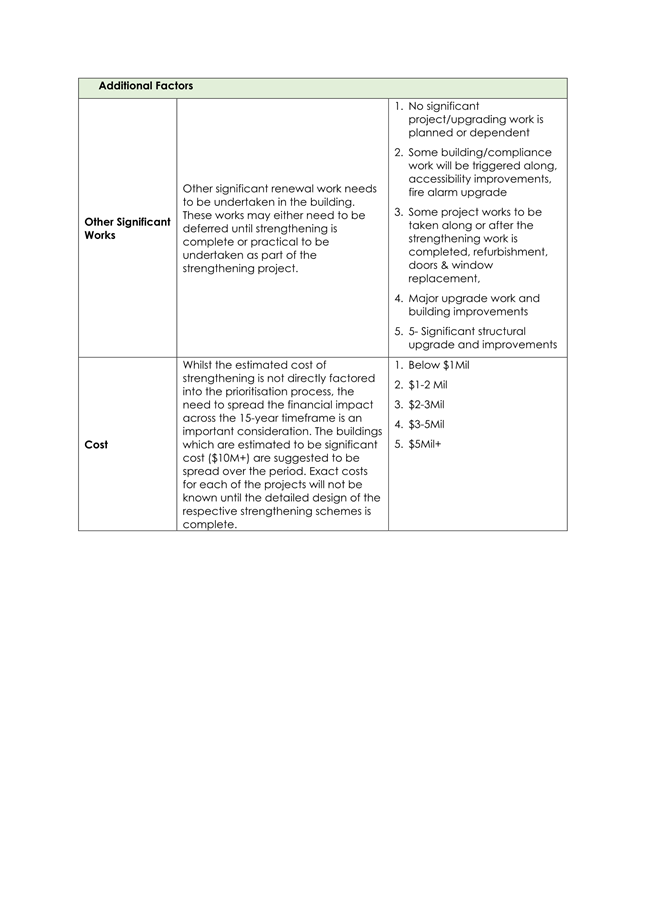
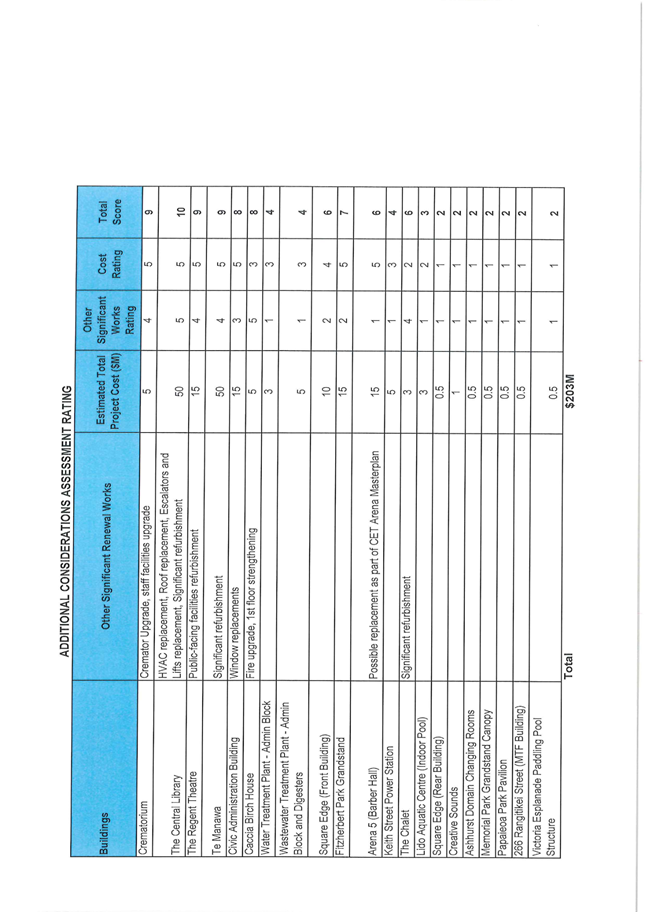
Memorandum
TO: Council
MEETING DATE: 28
June 2023
TITLE: Future
Development Strategy: Horizons Regional Council and Palmerston North City
Council Joint Steering Group
Presented
By: Michael
Duindam, Acting City Planning Manager
APPROVED BY: David
Murphy, Chief Planning Officer
RECOMMENDATIONS TO
Council
1. That
Palmerston North City Council and Horizons Regional Council establish a
Joint Steering Group to guide the preparation of the Future Development
Strategy
2. That
the following three elected members are appointed as representatives of
Palmerston North City Council to the Future Development Strategy Steering
Group:
a. Mayor
Grant Smith
b. To
be determined
c. To
be determined
1. ISSUE
1.1 The
National Policy Statement on Urban Development (NPS-UD) requires Palmerston
North City Council and Horizons Regional Council to jointly prepare a Future
Development Strategy (FDS).
1.2 There
is currently no suitable joint governance body that could appropriately oversee
the development, consultation, and adoption of the Strategy.
1.3 This
report recommends a joint steering group be established so both councils have
sufficient oversight to ensure the FDS is jointly prepared.
2. BACKGROUND
2.1 The
NPS-UD requires all Tier 1 and 2 councils to prepare and update an FDS every 6
years. Palmerston North City Council and Horizons Regional Council are Tier 2
councils.
2.2 The
key output for the FDS is a spatial plan which sets out areas for household,
commercial and industrial growth in the city over the next 30 years, giving
consideration to a range of influencing factors, including iwi aspirations and
constraints on development.
2.3 The
purpose of an FDS is to set the high-level vision for accommodating urban
growth over the long term, and identifies strategic priorities to inform other
development-related decisions, such as:
· District
Plan zoning and related plan changes.
· Priority
outcomes in long-term plans and infrastructure strategies, including decisions
on funding and financing.
· Priorities
and decisions in regional land transport plans.
2.4 Because
the FDS ensures clear alignment between land-use planning and infrastructure
delivery, budgets will therefore be matched with anticipated demand, which will
allow much more responsiveness to growth.
2.5 An
ancillary benefit is that Waka Kotahi and Ministry of Housing and Urban
Development have advised that their investment decisions will be reliant on the
content of an FDS. Funding to support planned growth from third parties will be
much easier to secure as a result of developing an FDS. For example, it will be
a criterion for consideration in the allocation of funds through the Regional
Land Transport Plan process.
2.6 The
FDS will build on existing strategic land-use planning, including Palmerston
North City Council’s strategic direction, spatial plan and the evidence
contained within the Housing and Business Needs Assessment 2023. It will also
draw on data provided by Horizons Regional Council and other stakeholders
relevant to urban growth such as Waka Kotahi, Kāinga Ora, and network
utility providers.
2.7 Where
councils share jurisdiction over an urban environment, the NPS-UD requires
joint responsibility. This means that Palmerston North City Council and
Horizons Regional Council are jointly responsible for the preparation of the
FDS.
2.8 The
NPS-UD also requires that the first FDS must be prepared in time to inform the
2024 Long Term Plan (LTP), and that the draft FDS must undergo public
consultation using the special consultative procedure (section 83 of the Local
Government Act 2002). It is expected that this consultation process will
run concurrently with the LTP consultation, and that hearings, deliberations,
and adoption of the FDS will take place at the same time as the hearings,
deliberations and adoption of the LTP.
2.9 A
project team made up of officers from both councils has been set up to
coordinate the development of the FDS. There is also a wide range of subject
matter experts, both internal and external, who are providing input.
2.10 A
high-level project timeline has been developed. The key milestones are:
· Early
November 2023 – draft FDS prepared to inform the LTP process.
· Early
2024 – draft FDS adopted for consultation along with the LTP consultation
document.
· March/April
2024 – Concurrent FDS and LTP consultation.
· May
2024 – Hearings and deliberations of FDS and LTP.
· June
2024 – Adoption of FDS and LTP.
3. Joint STEERING GROUP
3.1 A
joint steering group would ensure both councils are represented at a governance
level in the preparation of the FDS. It would be a conduit between the
project team and the two councils in the development phase of the FDS.
3.2 It
is recommended that the make-up of the steering group be three elected members
from each council, with administrative support provided by Palmerston North
City Council, and relevant expertise provided by the project team and other
subject matter experts from both councils and other external agencies.
3.3 The
anticipated workload for the steering group is input into 3-4 steering group
hui in 2023, including providing an update at the joint annual hui between
Palmerston North City Council and Horizons Regional Council on 20 September
2023.
3.4 Members
of the joint steering group would be appointed by the elected members of their
respective councils.
3.5 Further
work is required to determine if a formal joint committee is required to hear
submissions and make a decision on the FDS, or whether PNCC can do this on
behalf of both councils.
3.6 The
terms of reference for the Joint Steering Group are included as attachment one.
4. NEXT STEPS
4.1 The
project team is currently undertaking a series of hui with key external and
internal stakeholders to understand their priorities and concerns in relation
to growth opportunities and constraints in the city over the next 30 years.
4.2 By
early August, an initial draft FDS will have been prepared for consideration by
the joint steering group and then the presented to the joint annual hui between
Palmerston North City Council and Horizons Regional Council on 20 September
2023.
4.3 A
final draft FDS will be prepared by late October, in time for LTP workshops for
both councils, and then adopted for consultation at the same time as the LTP
consultation document.
5. Compliance and administration
|
Does the Council have delegated
authority to decide?
If Yes quote relevant clause(s)
from Delegations Manual
|
Yes
|
|
Are the decisions significant?
|
No
|
|
If they are significant do they
affect land or a body of water?
|
|
|
Can this decision only be made
through a 10 Year Plan?
|
No
|
|
Does this decision require
consultation through the Special Consultative procedure?
|
No
|
|
Is there funding in the current Annual
Plan for these actions?
|
Yes
|
|
Are the recommendations
inconsistent with any of Council’s policies or plans?
|
No
|
|
The recommendations contribute
to Goal 1: An Innovative and Growing City
|
|
The recommendations contribute
to the achievement of action/actions in City Growth
The action is: Develop a Future
Development Strategy (page 11)
|
|
Contribution to strategic
direction and to social, economic, environmental and cultural well-being
|
The Future Development Strategy
will ensure an integrated and coherent approach to long-term growth in the
city, balancing the social, and economic needs of the community with
principles of cultural and environmental stewardship. The process of
developing the FDS involves a Housing and Business Needs Assessment, a
rigorous and wide-ranging constraints mapping exercise, and engagement with
Rangitāne over their aspirations.
|
|
|
|
Attachments
|
1.
|
Future
Development Strategy: Joint Steering Group Terms of Reference ⇩ 
|
|
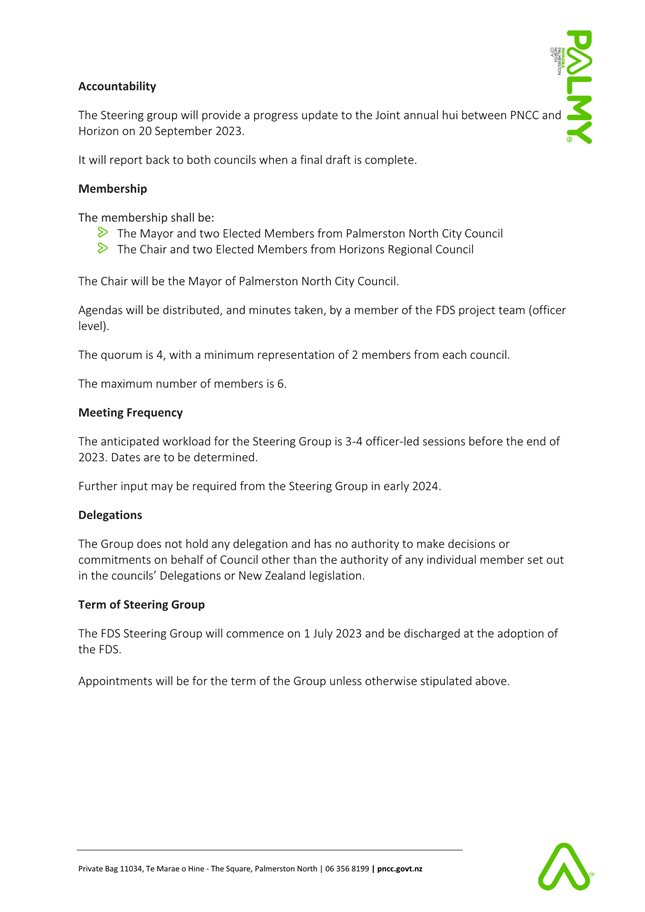
Memorandum
TO: Council
MEETING DATE: 28
June 2023
TITLE: Review
of Remuneration for Directors of the Central Economic Development Agency (CEDA)
Presented
By: Sarah
Claridge, Democracy & Governance Advisor and David Murphy, Chief Planning
Officer
APPROVED BY: Donna
Baker, Acting Chief Executive Unit Manager
RECOMMENDATION TO Council
1. That Council
receive the report titled ‘Review of Remuneration for Directors of
the Central Economic Development Agency (CEDA)’ dated 28 June 2023.
1. ISSUE
1.1 To
review the remuneration for directors of the Central Economic Development
Agency (CEDA), as required each triennium by the Council’s Appointment of
Directors Policy for CEDA 2023 (Appointments Policy).
1.2 This
is the first review of the CEDA directors’ remuneration, which has not
changed since it was agreed in 2015.
1.3 Officers
have completed a desktop review comparing CEDA’s remuneration with other
entities in New Zealand. This satisfies the requirements of the
Appointment’s Policy.
1.4 As
CEDA is jointly owned by Palmerston North City Council and Manawatū
District Council, any decision(s) require the agreement of both councils.
Manawatū District Council considered this report on 15 June 2023.
2. BACKGROUND
2.1 CEDA
was established in 2015 by Palmerston North City Council and Manawatū
District Council (the Councils) to deliver economic and tourism services for
the region.
2.2 CEDA
is a joint Council Controlled Organisation (CCO) of the Councils, it has six
Board members and 11 employees.
2.3 In
October 2015 Council resolved to:
Approve a total of $155,000 pa
in directors’ remuneration for the Central Economic Development Agency
(CEDA) being $55,000 for the Chairperson and $25,000 for each of the remaining
four directors.
2.4 Table
1 shows the remuneration rates of some of the entities, used to determine the
original pay for CEDA Board in 2015.
Table 1: Remuneration rates for Boards of Economic
Development Agencies and the Palmerston North Airport in 2015
|
Entity
|
Type
|
Total expenses
excluding depreciation ‘000 (2015)
|
No of
Directors
|
Rem Pool
|
Chair
|
Director
|
|
Auckland Tourism, Events and Economic Development (ATEED)[1]
|
CCO
|
(56,897)
|
7
|
$332,000
|
$81,000
|
$34-$51,000
|
|
Wellington Regional
Economic Development Agency (WREDA)
|
Joint
CCO[2]
|
16,309
|
9
|
$245,000
|
$45,000
|
$25,000
|
|
Canterbury Development
Corporation Ltd
|
Incorporated Company[3]
|
Not available
|
8
|
$247,100
|
$58,500
|
$8,444 -$34,980
|
|
Venture Taranaki
|
CCO
|
3,596
|
5
|
$73,000
|
-
|
-
|
|
CEDA
|
|
170 (2016)
|
5
|
$155,000
|
$55,000
|
$25,000
|
|
Entity
|
Type
|
Total
Revenue (2015)
|
No of Directors
|
Rem Pool
|
Chair
|
Director
|
|
PN Airport Ltd
|
CCTO
|
$4,943
|
5
|
$76,500
|
$22,948
|
$13,388
|
2.5 When
CEDA was set up, the Councils wanted to attract nationally recognised talent to
the Board. The director role was therefore benchmarked at the higher end of the
market so that the agreed remuneration more closely aligned with the
development agencies of Wellington and Christchurch rather than New Plymouth
(see Table 1).
2.6 The
workload of the Board was expected to be approximately two days a month for
directors; and three – four days for the chair. CEDA
has confirmed that current board members work on average 2 days per month and
the Chair has additional duties.
2.7 Over
the years, the driver to appoint nationally recognised talent to the CEDA Board
has been balanced by the appointment of directors with more local knowledge and
experience.
2.8 Since
2018 CEDA has had six directors, so the total remuneration pool has become
$180,000. This figure remains unchanged in CEDA’s draft Statement
of Intent 2023-26.
2.9 The
Councils revised the number of directors being from 4-6, when it adopted the
Central Economic Development Agency Limited Appointment of Directors Policy in
March 2023. Previously it was a minimum of 5 and maximum of 7 directors.
2.10 In April
2023, the Councils appointed two new directors; in doing so, retaining the
maximum membership.
2.11 The newest
two directors’ terms expire in December 2025, one expires in March 2024,
and three (including the chair) in December 2024.
2.12 Should
the Council wish to look for savings alongside the review of remuneration,
reducing the number of directors remains an option.
3. CEDA’s Governing Documents in regard to
setting Remuneration
3.1 CEDA’s
Appointment of Directors Policy 2023 requires Board Members remuneration to be
reviewed once per triennium. The Policy states that:
“A full review will be
conducted and will include benchmarking against comparative entities. The
review will consider market movement and the final decision on board
members’ remuneration will be made by a resolution of the
councils.”
Officers consider this report to satisfy this review
requirement.
3.2 Clause
5.3 of the CEDA Shareholding Agreement signed by both Councils in 2015 states
that:
The Parties shall, in accordance with clause 1.2
(co-operation between councils) work together to determine an appropriate
process for determining the remuneration to be paid to Directors.
As this is the first review of the directors’
remuneration, no ‘process for determining the remuneration’ exists.
Hence, if the Councils wish to revise the directors’ remuneration,
officers will need to develop and report back a process for determining
director’s remuneration.
3.3 CEDA’s
Constitution prescribes that any remuneration to be paid to directors must have
prior approval of shareholders (the Councils).
4. Remuneration Review 2023
4.1 Officers
have considered CEDA directors’ remuneration against other economic
development agencies around New Zealand and the Palmerston North Airport (which
is a CCTO of PNCC).
4.2 Results
of the desktop review are set out below. Entities have been ordered by
size of the organisation (determined as: total expenses less depreciation). The
Palmerston North Airport has been shown separately. As it is profit driven,
size is shown by total revenue.
Table 2 – Remuneration
of Economic Development Agencies in New Zealand and the Palmerston North
Airport 2023
|
Entity
|
Type
|
Total expenses
excluding depreciation
‘000 (2022)
|
No of
Directors
|
Pool
|
Chair
|
Director
|
|
Tātaki Auckland Ltd – Auckland’s economic and
cultural agency
|
CCO
|
$129,538
|
8
|
$402,000
|
$82,000
|
$34-$51,000
|
|
WellingtonNZ (WREDA)
|
Joint CCO
|
Not available
|
7
|
$218,000
|
$50,000
|
$28,000
|
|
ChristchurchNZ
|
CCO
|
$22,142
|
5
(4 in 2022)
|
$180,000
|
$72,000
|
$36,000
|
|
Great South – Southland Regional Development Agency
|
Joint CCO[4]
|
$ 7,673
|
7
|
$146,000
|
$48,000
|
$16-$18,000
|
|
Venture Taranaki
|
CCO[5]
|
$6,197
|
7
|
$123,846
|
|
|
|
Nelson Regional Development Agency
|
CCO
|
$3,144
|
7
|
$37,500
|
$7,500
|
$5,000
|
|
Central Economic Development Agency
(CEDA)
|
Joint CCO
|
$1,930
|
6
|
$180,000
|
$55,000
|
$25,000
|
|
Whanganui & Partners Economic Development Agency
|
CCO
|
Became a CCO in March 2022. Financial records not available.
|
7
|
|
$750 – 937.50 per meeting
|
$500 – 750 per meeting
|
|
Entity
|
Type
|
Total Revenue ‘000 (2022)
|
No of Directors
|
Pool
|
Chair
|
Director
|
|
PN Airport Ltd
|
CCTO
|
$9,485
|
5
|
135,000
|
$37,240
|
$18,620
|
4.3 Comparatively,
CEDA’s total remuneration pool and number of directors are generous
relative to its size.
4.4 Officers
have also obtained the Director’s Fees Report 2022 from the Institute of
Directors. This report provides the following industry average for
remuneration, as detailed in tables 3 and 4.
4.5 Table
3 shows the average remuneration for CCOs, regardless of size. It includes some
of the larger Port entities, Auckland’s Watercare, and the Waikato Local
Authority Shared Services Limited, which skew the results upwards.
Table 3
Annual Remuneration for Non-Executives of a CCO 2022
|
|
Sample size
|
Lower quartile
|
Medium
|
Upper quartile
|
Average
|
|
Non-Executive Chair – CCO
|
19
|
$30,000
|
$47,500
|
$86,500
|
$57,398
|
|
Non-Executive Director -CCO
|
47
|
$28,120
|
$39,111
|
$53,100
|
$40,083
|
4.6 When
compared to all other CCOs, the Chair’s pay ($55,000) is close to the
average, while the directors pay ($25,000) is in the lower quartile.
4.7 Table
4 shows the average remuneration for boards of small organisations (based on
headcount of fewer than 20 employees). This table provides a better benchmark
than Table 3 as CEDA can be compared against companies of similar size.
Table 4
Annual Remuneration for Non-Executives of small organisations 2022
|
|
Sample size
|
Lower quartile
|
Medium
|
Upper quartile
|
Average
|
|
Non-Executive Chair
|
54
|
$25,000
|
$36,500
|
$54,250
|
$42,157
|
|
Non-Executive Director
|
75
|
$25,000
|
$30,311
|
$40,000
|
$34,788
|
Compared to Table 3, the
Chair’s pay fits in the upper quartile bracket and the current
directors’ pay sits in the lower quartile.
5. conclusion
5.1 Comparatively,
CEDA’s total remuneration pool and number of directors are generous
relative to its size.
5.2 Compared
to companies of a similar size, the Chair’s pay ($55,000) is in the upper
quartile pay bracket and the directors’ pay ($25,000) is in the lower
quartile.
5.3 Should
the Council wish to look for savings alongside the review of remuneration,
reducing the number of directors remains an option.
6. NEXT STEPS
6.1 CEDA’s
Board of Directors will be informed of the decision(s) of the Councils.
6.2 Should
the Councils wish to alter the CEDA Board’s remuneration, a process for
determining new fees would need to be developed and agreed by both councils and
communicated to CEDA.
7. Compliance and administration
|
Does the Council have delegated
authority to decide?
If Yes quote relevant clause(s)
from Delegations Manual
|
Yes
|
|
Are the decisions significant?
|
No
|
|
If they are significant do they
affect land or a body of water?
|
No
|
|
Can this decision only be made
through a 10 Year Plan?
|
No
|
|
Does this decision require
consultation through the Special Consultative procedure?
|
No
|
|
Is there funding in the current Annual
Plan for these actions?
|
Yes
|
|
Are the recommendations
inconsistent with any of Council’s policies or plans?
|
No
|
|
The recommendations contribute
to Goal 1: An Innovative and Growing City
|
|
The recommendations contribute
to the achievement of action/actions in Governance
and Active Citizenship
The action is: Ongoing review of
governance systems and structures to support Council’s effectiveness
and reputation.
|
|
Contribution to strategic direction
and to social, economic, environmental and cultural well-being
|
Review of Directors
remuneration enables public transparency.
|
|
|
|
Attachments
Nil
Memorandum
TO: Council
MEETING DATE: 28
June 2023
TITLE: Support
of Remits to Local Government New Zealand 2023 Annual General Meeting
Presented
By: Sarah
Claridge, Democracy & Governance Advisor
APPROVED BY: Donna
Baker, Acting Chief Executive Unit Manager
RECOMMENDATIONS TO
Council
1. That
Council support/ does not support remit 1 on Allocation of Risk
and Liability in the Building Sector from Queenstown-Lakes
District Council.
2. That Council
support/ does not support remit 2 on Rates Rebate from Horowhenua District
Council.
3. That Council
support/ does not support remit 3 on Roading/Transport Maintenance Funding from
New Plymouth District Council.
4. That Council
support/ does not support remit 4 on Local Election Accessibility from
Whangārei District Council.
5. That Council
support/ does not support remit 5 on Ability for Co-chairs at Formal Meetings
from Northland Regional Council.
6. That Council
support/ does not support remit 6 on Parking infringement Penalties from
Whangārei District Council.
7. That Council
support/ does not support remit 7 on Rural and Regional Public Transport from
Waikato Regional Council.
8. That Council support/
does not support remit 8 on Establishing Resolution Service from Hutt City
Council and Young Elected Members (YEM).
9. That Council
support/ does not support remit 9 on Earthquake Prone Buildings from
Manawatū District Council.
10. That Council support/ does not
support remit 10 on KiwiSaver Contributions for Elected Members from Hamilton
City Council.
11. That Council support/ does not
support remit 11 on Audit New Zealand Fees for Elected Members from Hamilton
City Council.
1. ISSUE
Every year, councils can
endorse remits for consideration at the Local Government New Zealand (LGNZ)
Conference Annual General Meeting (AGM). Remits with sufficient sector support
are considered by all member councils at the LGNZ AGM. Successful remits
will direct LGNZ’s policy advocacy to central government for the
forthcoming year.
This year, the LGNZ AGM will be
held on 26 July 2023 in Christchurch.
The submitted remits for the
AGM are attached.
Council has four delegates, but
one presiding delegate who votes on Council’s behalf. These have been
allocated to The Mayor Grant Smith (Presiding Delegate), Deputy Mayor Debi
Marshall-Lobb, Councillors Vaughan Dennison and Rachel Bowen. Other Councillors
Roly Fitzgerald, Orphee Mickalad, William Wood and Pat Handcock will be in
attendance as Observers.
This report is an opportunity
for Council to instruct the Mayor, as presiding delegate of its position for
each of the 11 remits.
As the remits are from other
councils, Council cannot change the wording of the remits, only confirm whether
or not it is in support.
2. NEXT STEPS
The Mayor as presiding delegate
will represent Council at the AGM on 26 July.
3. Compliance and administration
|
Does the Council have delegated
authority to decide?
If Yes quote relevant clause(s)
from Delegations Manual
|
Yes
|
|
Are the decisions significant?
|
No
|
|
If they are significant do they
affect land or a body of water?
|
No
|
|
Can this decision only be made
through a 10 Year Plan?
|
No
|
|
Does this decision require
consultation through the Special Consultative procedure?
|
No
|
|
Is there funding in the current
Annual Plan for these actions?
|
Yes
|
|
Are the recommendations
inconsistent with any of Council’s policies or plans?
|
No
|
|
The recommendations contribute
to Goal 5: A Driven & Enabling Council
|
|
The recommendations contribute
to the achievement of action/actions in Governance
and Active Citizenship
The action is: N/A
|
|
Contribution
to strategic direction and to social, economic, environmental and cultural
well-being
|
Consideration of remits to
the Local Government New Zealand Annual General Meeting is one way by which
Council contributes to the national policy conversation in the local
government sector.
|
|
|
|
Attachments
|
1.
|
LGNZ
Remits 2023 ⇩ 
|
|
Memorandum
TO: Council
MEETING DATE: 28
June 2023
TITLE: Invitation
for the Mayor to attend Eco Forum Global, Guiyang, China
Presented
By: Gabrielle
Loga, International Relations Manager
APPROVED BY: David
Murphy, Chief Planning Officer
RECOMMENDATION TO Council
1. That Council
note the Mayor will travel to Guiyang, China from 6 July- 10 July to attend the
Eco Forum Global 2023, subject to visa approval.
1. ISSUE
1.1 This
memorandum outlines the intention of the Mayor to travel to Guiyang, China from
6 July to 10 July to attend the Eco Forum Global 2023 hosted by our Sister
City.
2. BACKGROUND
2.1 Eco
Forum Global 2023 is China's only national-level global forum themed on
ecological civilization. The event will focus on seeking modernisation of
harmonious coexistence with nature and promoting green and low-carbon
development. Themed sub-forums, exhibitions on latest techniques, products and
technologies, and business promotion activities will be held during the event.
Through both online and offline activities, the forum is estimated to invite
about 500 attendees.
2.2 The
purpose of the trip is to connect with leaders and decision-makers from
government and business sectors from all over the world to exchange ideas and
explore opportunities for collaboration and implementation.
2.3 Palmerston
North’s participation in this forum demonstrates the city’s
commitment to sustainable development, our Sister City of 30 years, and assists
with the Council’s understanding of what is required to achieve
Council’s current vision and goals, particularly Goal 4 – An
Eco-City.
2.4 The
Mayor’s expenses, including international and domestic flights in China,
accommodation, meals and ground transportation, will be covered by the Guiyang
Municipal Government. This was confirmed in writing with Guiyang.
2.5 The
complimentary financial support package from Guiyang Municipal Government will
need to be recorded in the gifts register and would be subject to the Local
Government (Pecuniary Interests Register) Amendment Act 2022.
2.6 Section
8 of the Council’s Elected Member Expenses and Allowances Policy
stipulates that the prior approval of Council is sought for any travel as part
of a Sister City Delegation where the cost of such travel is not wholly
covered by the host city. As the Mayor’s travel is wholly covered by
the Guiyang Municipal Government, this memorandum is for information only.
2.7 The
dates of travel will have limited impact on formal Council business. The
Mayor’s travel coincides with Council recess in July.
2.8 This
trip will be the first time the Mayor has connected in-person with Guiyang
since the borders reopened following covid-19.
2.9 The
Mayor will be travelling alone for this forum.
3. NEXT STEPS
3.1 Officers
will liaise with the Guiyang Municipal Government to accept the complimentary
financial support package for the Mayor and proceed with travel bookings.
4. Compliance and administration
|
Does Council have delegated
authority to decide
|
Yes
|
|
Are the decisions significant?
|
No
|
|
If they are significant do they
affect land or a body of water?
|
|
|
Can this decision only be made
through a 10 Year Plan?
|
No
|
|
Does this decision require
consultation through the Special Consultative procedure?
|
No
|
|
Is there funding in the current
Annual Plan for these actions?
|
No
|
|
Are the recommendations
inconsistent with any of Council’s policies or plans?
|
No
|
|
The recommendations contribute
to Goal 1: An Innovative and Growing City
|
|
The recommendations contribute
to the achievement of action/actions in Economic
Development
The actions are:
- Support
initiatives that promote the city’s international reputation and
strengths.
- Promote
Palmerston North’s interests to global partners.
Promote the environmental
wellbeing of city’s communities and sustainable development.
|
|
Contribution to strategic
direction and to social, economic, environmental and cultural well-being
|
The Mayor’s attendance
at Eco Forum Global 2023 helps to promote the city’s international
reputation, explore potential partners across the globe, and enhance
economic, educational and environmental cooperation.
|
|
|
|
Attachments
Nil
Memorandum
TO: Council
MEETING DATE: 28
June 2023
TITLE: Scheduling
of additional Council Meeting
Presented
By: Sarah
Claridge, Democracy and Governance Advisor
APPROVED BY: Donna
Baker, Acting Chief Executive Unit Manager
RECOMMENDATION TO Council
1. That Council
schedule a Council meeting for 2pm, 16 August 2023.
1. ISSUE
1.1 Officers
have requested that an additional Council meeting be scheduled.
1.2 The
meeting will be held at 2pm 16 August 2023.
1.3 The
additional meeting is needed for Council to consider several roading tenders to
allow for projects to progress in a timely manner.
2. BACKGROUND – LEGAL REQUIREMENTS
2.1 The
Local Government Official Information and Meetings Act 1987 (LGOIMA) requires
Council to notify the public of the time and place of all its committee
meetings.
2.2 Section
7(19)(6) of the Local Government Act allows for local authorities to adopt and
amend a schedule of meetings:
Section 7(19)(6) If a
local authority adopts a schedule of meetings—
(a) the
schedule—
(i) may cover any
future period that the local authority considers appropriate; and
(ii) may be amended;
and
(b) notification of
the schedule or of any amendment to that schedule constitutes a notification of
every meeting on the schedule or amendment.
3. NEXT STEP
3.1 If
approved, the meeting will be publicly notified.
4. Compliance and administration
|
Does the Council have delegated
authority to decide?
|
Yes
|
|
Are the decisions significant?
|
No
|
|
If they are significant do they
affect land or a body of water?
|
No
|
|
Can this decision only be made
through a 10 Year Plan?
|
No
|
|
Does this decision require
consultation through the Special Consultative procedure?
|
No
|
|
Is there funding in the current Annual
Plan for these actions?
|
Yes
|
|
Are the recommendations
inconsistent with any of Council’s policies or plans?
|
No
|
|
The recommendations contribute
to Goal 5: A driven and enabling Council
|
|
The recommendations contribute
to the achievement of action/actions in Governance
and Active Citizenship
The action is: Support
council’s effectiveness and reputation.
|
|
Contribution to strategic
direction and to social, economic, environmental and cultural well-being
|
Effective public decision
making can take place in a timely manner.
|
|
|
|
Attachments
NIL
Committee Work Schedule
TO: Council
MEETING DATE: 28
June 2023
TITLE: Work
Schedule 28 June 2023
RECOMMENDATION TO Council
1. That the
Council receive its Work Schedule dated 28 June 2023.
COUNCIL
WORK SCHEDULE 28 JUNE 2023
|
#
|
Estimated
report date
|
Subject
|
Officer
responsible
|
Current
position
|
Date of
instruction & clause number
|
|
1.
|
28 June 2023 6 September 2023
|
Draft Water Supply Bylaw
2023 - Deliberations and adoption
|
Chief Planning Officer
|
|
Council 5 April
2023
Clause 51-23
|
|
2.
|
28 June 2023
|
Civic and
Cultural Master Plan - Agree Terms of Reference and appoint to Steering
Groups
|
Chief Planning
Officer
|
|
30 November
2022
Clause 168- 22
|
|
3.
|
28 June 2023
|
17 Summerhays
Street Redevelopment - Options on types of development
|
Chief
Infrastructure Officer
|
|
Council 3
May
Clause 66-23
|
|
4.
|
6 September 2023
|
Standing Orders - Managing
conflicts of interests at meetings
|
Assistant Chief Executive
|
|
15 February
2023
Clause 7-23
|
|
5.
|
6 September 2023
|
Appointment of Trustees on
Council Controlled Organisations
|
Assistant Chief Executive
|
|
|
|
6.
|
6 September 2023
|
Options to address the key
challenges identified in the 2022 Residents' Survey
|
Chief Planning Officer
|
|
14 December 2022
Clause 197-22.3
|
|
7.
|
6 September 2023
|
Approve list of Code of
Conduct Investigators
|
Assistant Chief Executive
|
|
16 November 2022
Clause 153-22
|
|
8.
|
6 September
2023
|
Review Remuneration
of CEDA Directors
|
Chief Planning
Officer
|
|
CEDA
Appointment of Directors Policy
|
|
9.
|
4 October 2023
|
Annual Report 2022/23 -
Adopt
|
Chief Financial Officer
|
|
Terms of Reference
|
|
10.
|
4 October 2023
|
Adoption of interim Speed
Management Plan
|
Chief Planning Officer
|
|
Council 5 April
2023
Clause 46-23
|
|
11.
|
4 October 2023
|
City Transport Review -
Action Plan
|
Chief Infrastructure Officer
|
|
Council 3
May
Clause 65-23
|
|
12.
|
18 December 2023
|
Wastewater
Discharge Consent Project - Quarterly Update
|
Chief
Infrastructure Officer
|
Referred from Sustainability Committee
|
11 May 2022
Clause 26-22
|
|
13.
|
1 March 2024
|
Remits from PNCC for
consideration
|
Assistant Chief Executive
|
|
|
|
14.
|
1 April 2024
|
Appointment of Trustees on
Council Controlled Organisations
|
Assistant Chief Executive
|
|
|
|
15.
|
1 June 2024
|
Remits received from other
Territorial Authorities
|
Assistant Chief Executive
|
|
|
|
16.
|
TBC
|
Nature Calls Adaptive
Management - Agree Terms of Reference and appoint to Steering Groups
|
Chief Infrastructure Officer
|
Postponed pending
re-lodgement of Resource Consent application
|
30 November 2022
Clause 168- 22
|
|
17.
|
Early 2024
|
College St/Botanical
Road Safety Improvements
|
Chief Infrastructure
Officer
|
|
31 May 2023
Clause 88.19-23
|
Recommendations from Committee
TO: Council
MEETING DATE: 28
June 2023
TITLE: Presentation
of the Part I Public Strategy & Finance Committee Recommendations from its
7 June 2023 Meeting
Set out below are the recommendations only
from the Strategy & Finance Committee meeting Part I Public held on 7 June
2023. The Council may resolve to adopt, amend, receive, note or not adopt any
such recommendations. (SO 2.18.1)
|
36-23
|
The COMMITTEE RECOMMENDS
1. That the Council,
as the Administering Body of Opie Reserve, applies to the Minister of
Conservation to have Opie Reserve (Lot 81 DP 24258) reclassified from its
current status as Recreation Reserve to Local Purpose: Community, as per
Section 24 (b) of the Reserves Act 1977.
2. That the Council, acting under delegated authority
(2013) from the Minister of Conservation, ensures that Sections 119 and 120
of the Reserves Act 1977 were followed during the proposed reclassification
of Opie Reserve.
|
Recommendations
from Committee
TO: Council
MEETING DATE: 28
June 2023
TITLE: Presentation
of the Part I Public Economic Growth Committee Recommendations from its 21 June
2023 Meeting
Set out below are the recommendations only
from the Economic Growth Committee meeting Part I Public held on 21 June 2023.
The Council may resolve to adopt, amend, receive, note or not adopt any such
recommendations. (SO 2.18.1)
|
20-23
|
Palmerston North Airport Limited - Final Statement of
Intent for 2023/24 to 2025/26
Memorandum, presented by Steve Paterson, Strategy Manager
– Finance, Shelly Mitchell-Jenkins (Director), David Lanham (Chief
Executive) & Jonathon Baker (Chief Finance Officer) from Palmerston North
Airport Limited.
|
|
|
The COMMITTEE RECOMMENDS
1. That
Council instruct the Chief Executive to prepare options/ business case for
extra investment or shareholding to Palmerston North Airport Limited and
present back to Council.
|
|
22-23
|
Palmerston
North Strategic Networks 2023
Memorandum, presented by
James Miguel, Senior Transport Planner and David Murphy, Chief Planning Officer.
|
|
|
The COMMITTEE RECOMMENDS
2. That Council endorse the
Palmerston North Strategic Networks 2023 (Attachments 1 & 2) to inform
future Council decision-making on transport matters, including the 2024-2034
Long Term Plan and supporting documents
|
|
23-23
|
Central
City Transformation - Streets for People Project
Report, presented by Geoff
Sneddon, Senior Project Manager and Hamish Featonby, Group Manager -
Transport & Development.
|
|
|
The COMMITTEE RECOMMENDS
1. That Council
adopt the Terms of Reference (as amended) for the Central City Transformation
Project Steering Group (Attachment 1).
2. That Council
approve the Mayor’s recommendation for membership of the Central City
Transformation Project Steering Group: The Mayor, Councillors Hapeta, Bowen,
Dennison, and Handcock.
3. That Council
receive the 60% Detail Design Plans (developed design) for the entire Central
City Transformation (streets for people) project area (Attachment 2).
4. That Council
delegate authority to the Chief Executive to vary the GST exclusive contract
sum of Contract 3923 (Professional Services Design for City Centre
Streetscape Upgrade) by $254,000. Noting that this will increase the
contingency of the project from $96,000 to $350,000 and that this increase
can be accommodated within the existing budget within Programme 2122.
|
































